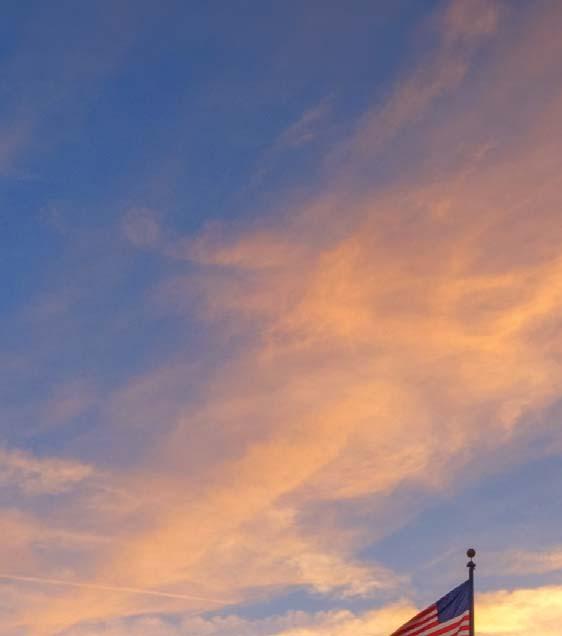Making Cricket Wicket Fun
by JOHN STOWELL

Lockland’s Future Is a Group Effort by
LAURIE PIKE

by JOHN STOWELL

LAURIE PIKE
If achieving flawless, glowing, and healthy skin is on your fall to-do list: chemical peels may be for you! These medical-grade facial treatments have minimal downtime and are safe for all skin types. They are the perfect choice for skin maintenance or even addressing skin concerns such as acne, acne scarring, brown spots, pores, or texture. Mona Dermatology aesthetic providers, Kylee Finn, RN and Amanda Schmidt, LME, break down the science behind chemical peel treatments and answer your top questions.


How do chemical peels work?
Chemical peels use the applications of various chemicals, such as alpha-hydroxy acid or salicylic acid, to cause the top layers of your skin to shed over a short period of time. During the appointment, your provider will apply multiple layers of the chemical peel solution onto your skin. These solutions consist of retinol, and different types of acids to raise the acidity of the skin. When you change the acidity of the skin it causes the skin to start to exfoliate, causing your peeling. The peeling of the skin promotes rejuvenation of healthy skin cells, and allows new, fresh skin to be revealed after the peeling.
Will I “peel”?
There are different levels of chemical peels, such as superficial, medium depth or deeper peels that cause more layers of skin to peel. Your provider will help choose the best peel for you depending on the severity of your skin condition, what type of skin condition you want to treat, and how sensitive your skin is. Chemical peels can range from gentler treatments that will refresh your skin and cause no peeling at all to deeper peels that can improve more advanced concerns.

What can a chemical peel treat?
Chemical peels treat many different skin conditions such as sun damage, hyperpigmentation, melasma, acne, acne scarring, and other concerns.
•Sun Damage: By increasing the turnover of skin cells and promoting collagen production, chemical peels can address the visible signs of aging caused by sun damage. Common concerns include superficial lines and wrinkles, uneven skin tone, brown spots, and more. In addition to addressing these cosmetic concerns, some chemical peels can also help to exfoliate actinic keratosis. These precancerous lesions develop in the epidermis of your skin as a result of sun exposure, and have the potential to develop into skin cancer over time.
•Hyperpigmentation: A chemical peel helps exfoliate the skin, which reveals fresh and youthful skin underneath. In addition to boosting your collagen production, a chemical peel can also help exfoliate sun-induced brown spots as well as hyperpigmentation from various conditions such as acne scarring and melasma. By addressing these key causes of hyperpigmentation, chemical peels help even out your skin tone over time.
•Melasma: Melasma is often triggered by hormone changes in the body which cause an overproduction of pigment in the superficial layers of the skin. A chemical peel can help increase your skin cell turnover, and exfoliate brown patches without causing heat-induced inflammation that can actually trigger melasma. Therefore, chemical peels are a great way to decrease the visible signs of melasma.

•Acne & Acne Scarring: By promoting the shedding of skin and reproduction of skin cells, chemical peels can help heal acne breakouts quicker and prevent them from becoming inflamed. It can also help fade the leftover red pigment caused by acne, called postinflammatory hyperpigmentation, and some types of acne scarring. In addition, salicylic acid peels are a great way to help treat active acne as well as acne scarring.
•Fine Lines & Wrinkles: If you’re seeking a noneedles way to soften superficial wrinkles and fine lines, a chemical peel may be a great option. By increasing cell turnover and boosting collagen production, a series of chemical peel treatments can help lessen the appearance of wrinkles over time. For deeper wrinkles, other treatments such as Botox or lasers may be a better choice.
•Rosacea: Some lighter chemical peels contain mandelic acid, which can help calm inflammation. As a result, this can decrease the redness in your skin from rosacea. Chemical peels may not be the best choice for all patients experiencing rosacea: your provider will help you choose what products and treatments are right for you.
September Chemical Peel Specials
Peel Event: September 18 & 19
Start your chemical peel journey and save! Enjoy buy 2, get 1 free chemical peel treatment packages when you schedule your first treatment during the peel event.
September is Peel & Facial Month
Save throughout the month of September with 10% off all Diamond Glow, Chemical Peel, and Oxygen Facial packages.
Available exclusively at Mona Dermatology. Call (513) 9844800 or visit monadermatology.com for more information.




































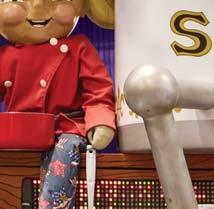













WICKET FUN P. 52
Lockland has
BY LAURIE PIKE
A bustling Sunday cricket league in Clermont County offers intense competition and a taste of home for Indian immigrants and their friends.
BY JOHN STOWELL

10 / CONTRIBUTORS
10 / LETTER FROM THE EDITOR
17 / DISPATCH
The Mercantile Library reopens in a renovated and expanded space

18 / SPEAK EASY
Photographer Michael Wilson’s limited-edition prints
18 / POP LIFE
Young refugees tell stories through art
20 / STYLE COUNSEL
Steph and Sam support minority-owned brands
22 / NECESSITIES
Six accessories for fabulous fall outfits
24 / GREAT ROOM
A 1950s kitchen revamped with pops of color
26 / DR. KNOW
Your QC questioned answered
28 / WELCOME TO MIDDLEHOOD
Maintaining friendships in adulthood BY JUDI KETTELER
96 / OBSCURA
The Rockwern Organ rocks on BY CLAIRE LEFTON

86 / MAIN REVIEW
Flavor from around the world at Alara, Madisonville
88 / ROAD TRIP
Decade’s New American cuisine in Louisville
88 / TABLESIDE
Alexandra Castle, master distiller at Augusta Distillery
89 / TAKE 5
Local hot sauces light up your tastebuds
90 / DINING OUT GUIDE
Greater Cincinnati restaurants: A selective list
ON THE COVER illustration by BENE ROHLMANN
An extra serving of our outstanding dining coverage.
Decoding our civic DNA, from history to politics to personalities.
Tracking what’s new in local real estate, artisans, and storefronts.
Insight and analysis on the Reds, Bengals, and FC Cincinnati.








As a client-oriented team with 60+ years of combined experience, we help design your financial future so that no challenge — complex or mundane — stands between you and your vision of success.
•Business Owners — We help you strategize your exit for life’s next stage
•Executives — We help you make smarter corporate equity decisions
•Retirees — We help you navigate complex regulations and economic conditions
•Families — We help you build legacies across generations

OUR TEAM
John Gould: Senior Vice President. Financial Advisor. CERTIFIED FINANCIAL PLANNER™. Senior Portfolio Manager. Chartered Portfolio Manager®. Certified Private Wealth Advisor®. Certified Exit Planning Advisor®. Workplace Advisor-Equity Compensation. Alternative Investments Director. 28+ years of experience. Anna Kohlem: Assistant Vice President. Wealth Management Associate. Financial Planning Specialist. Complex CSA Coach. 26+ years of experience. Janie Shaffer: Business Development Director. Duke University graduate. Former attorney. 6+ years of industry experience.
GET A FRESH PERSPECTIVE ON YOUR FINANCIAL FUTURE CALL US AT (513) 562-8313, OR EMAIL JANIE.SHAFFER@MORGANSTANLEY.COM.
7755 Montgomery Road, 2 nd Floor, Cincinnati, OH 45236 tel: (513) 562-8313 | toll-free: (800) 659-6599 visit: advisor.morganstanley.com/john.gould
Morgan Stanley and its Financial Advisors do not provide tax or legal advice. Individuals should seek advice based on their particular circumstances from an independent tax advisor. CFP Board owns the marks CFP®, CERTIFIED FINANCIAL PLANNER™, and CFP® (with plaque design) in the U.S. Morgan Stanley Smith Barney LLC offers a wide array of brokerage and advisory services to its clients, each of which may create a different type of relationship with different obligations to you. Please visit us at http://www.morganstanleyindividual.com or consult with your Financial Advisor to understand these differences. Morgan Stanley Smith Barney LLC. Member SIPC. CRC 3711383 07/24
PAGE 57
SPECIAL ADVERTISING SECTIONS

Join Cincinnati Magazine for a pizza tasting event benefitting cancer research for the UC Cancer Center.
PAGE 64

School Profi les
Searching for a school for your kids? Our guide has details and stats on some outstanding local schools.
PAGE 73

Five area health systems share innovative treatments and take us inside their new facilities.















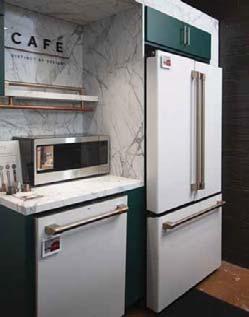


LLANGUAGE CONSTANTLY FASCINATES ME. I DABBLE IN IT HERE AT THE MAGAZINE, always seeking the appropriate words to convey facts, opinions, thoughts, and feelings and communicate clearly with you, our audience. To say what we mean and mean what we say, as the phrase goes.
George Orwell’s novel 1984 presents a fictional government regime that controls its citizens by slowly shrinking officially sanctioned language in order to limit their ability to think abstractly. The Ministry of Love famously is in charge of torture, joycamps are forced labor prisons, and democracy means “you won’t have to vote any more.” Oops, that last Newspeak example is from 2024, not 1984. Here in the real world, where citizens manage to occasionally come up with abstract thoughts, I love it when people seize control of language to push back against those who seek to hurt or minimize them. There are lots of examples of times when people outside of the mainstream reclaimed language that was intended to mock or ostracize them; the folks featured in our “Keep Cincy Weird” section this month come to mind. There used to be just one kind of weird: crazy, different, abnormal. Now there are two kinds: cool weird (see page 34) and creepy weird (check out the presidential campaigns).

“Queer” was once an insult (and sometimes still is), but today it’s embraced with pride by many in the LBGTQIA community. “Nerd” was once an insult too, but it’s now a badge of honor. “Chick” was perhaps not an insult, but it certainly diminished women; today some gladly embrace the term, including Cincinnati’s Bug Chicks (page 45).
Language is especially powerful when it’s used for identification. That’s why there’s such a debate over pronouns. Some people want to align their external identity with how they exist internally; others seek to make pronounswitchers conform to a certain structure—perhaps in order to limit their ability to think abstractly.
I love living in a city where people are comfortable to celebrate themselves as weird. Let’s keep it that way.
JOHN FOX EDITOR-IN-CHIEF


When visiting Lockland for the first time, Contributing Editor Laurie Pike says there was a “creative energy” in the air. “It was similar to being in Northside 30 years ago or OTR 20 years ago,” she says. “You can just tell something interesting is starting to happen.” In “The Little Train Town That Could” (page 48), Pike explores the shift taking place with a handful of village residents— newbies and natives alike.

Contributing Editor John Stowell was exercising at Miami Meadows Park one Sunday afternoon when he noticed a group of young men playing an unfamiliar game. “I knew very little about cricket,” Stowell admits, “but when I asked, I was welcomed and given a bat to try my luck.” In “Wicket Fun” (page 52), Stowell explores the new Clermont County cricketers bringing a sense of community to the township through India’s favorite pastime.


While he doesn’t live in Cincinnati, the full-time illustrator is more knowledgeable than most on the Queen City’s interesting people, places, and history after illustrating our Keep Cincy Weird cover. “I had so much fun finding out about all these characters, myths, and landmarks,” he says. Based in Berlin, Rohlmann also illustrates gig posters, T-shirts, books, and skateboards for clients such as Disney, Apple, Google, and The New Yorker.
At the crossroad of every medical department is the need for imaging. Whether monitoring disease progression, assisting with diagnoses, or providing insight through important clinical trials, the UC Department of Radiology is at the center. In fact, these international leaders in stroke and brain health are involved in more than 200 clinical trial sites around the world—designing studies, providing quality control, interpreting imaging data, and working with statistical teams to answer questions. It’s forward indispensable medicine,








As one of the nation’s leading mental health centers, we understand your journey is deeply personal. Bringing together unparalleled expertise, and a people-first approach, we provide life-changing care and support, infusing every interaction with the underlying belief that lasting well-being is possible. We see beyond diagnoses — we see you.

LINDNER CENTER OF HOPE lindnercenterofhope.org 513-536-4673
EDITOR-IN-CHIEF John Fox
DESIGN DIRECTOR Brittany Dexter
DIRECTOR OF EDITORIAL OPERATIONS
Amanda Boyd Walters
SENIOR EDITOR
Aiesha D. Little
ASSOCIATE EDITOR
Emma Balcom
DIGITAL EDITOR
Claire Lefton
SOCIAL MEDIA EDITOR
Brianna Connock
CONTRIBUTING EDITORS Jim DeBrosse, Jay Gilbert, Lisa Murtha, Laurie Pike, John Stowell, Linda Vaccariello, Jenny Wohlfarth, J. Kevin Wolfe
EDITORIAL INTERNS Pieper Buckley, Paige Davis, Victoria Donahoe
DIGITAL INTERNS Charlie Jaeb, Andrew Wagner
SENIOR ART DIRECTOR Emi Villavicencio
ART DIRECTOR Stef Hadiwidjaja
ASSISTANT ART DIRECTORS Carlie Burton, Jessica Dunham
ADVERTISING DESIGNERS Sophie Kallis, Matthew Spoleti
CONTRIBUTING ARTISTS Lance Adkins, Wes Battoclette, Aaron M. Conway, Andrew Doench, Devyn Glista, HATSUE, Chris von Holle, Jeremy Kramer, Ryan Kurtz, Lars Leetaru, Marlene Rounds, Jonny Ruzzo, Dola Sun, Catherine Viox
PRODUCTION DIRECTOR & IT SYSTEMS ADMINISTRATOR Vu Luong
PUBLISHED BY CINCINNATI MEDIA, LLC
CEO Stefan Wanczyk PRESIDENT John Balardo
PUBLISHER Ivy Bayer
SENIOR ACCOUNT MANAGERS
Maggie Wint Goecke, Joe Hoffecker, Julie Poyer
SENIOR MANAGER, SPONSORSHIP SALES
Chris Ohmer
SENIOR OUTSIDE ACCOUNT REPRESENTATIVE
Laura Bowling
VICE PRESIDENT OF EVENTS AND SPONSORSHIP SALES
Tasha Stapleton
EVENT COORDINATOR
Savannah Walling
OPERATIONS DIRECTOR Missy Beiting
BUSINESS COORDINATOR Erica Birkle
AUDIENCE DEVELOPMENT DIRECTOR Geralyn Wilson
CIRCULATION MANAGER Riley Meyers
1818 Race St., Suite 301 Cincinnati, OH 45202 (513) 421-4300
E-MAIL cmletters@cincinnatimagazine.com WEB cincinnatimagazine.com
SUBSCRIPTIONS
1-866-660-6247
E-MAIL Cincinnati_Service@hourmediagroup.com
2008, 2009, 2010, 2011, 2012, 2016, 2017, 2020, 2021, 2022 Ohio Excellence in Journalism Awards



























MUSIC IN PHOTOS P. 18 SUPPORTING MINORITY-OWNED FASHION P. 20 FALL ACCESSORIES P. 22
The Mercantile Library reopens in its 189-year-old location following significant renovations. GREG HAND
ORE, MORE, MORE!” THAT’S WHAT
John Faherty, Warner-Huguenin executive director of the Mercantile Library, wants to see when the city’s membership library resumes operations this fall at its namesake building on Walnut Street.
Since January, the Mercantile Library building has undergone a $80 million renovation. While the library’s space was stripped to bare walls, staff and books retreated to temporary quarters—the MiniMerc—in the Fifth Third Bank complex on Fountain Square. The Cincinnati Regional Chamber and the Museum Center accommodated library events for the duration. On reopening, the library will nearly double in size as it takes over the entire 11th and 12th floors.
“This is a chance for a rebirth,” Faherty says. “You seldom get the opportunity for a 189-year-old institution to remake itself.”
In addition to the expanded floorspace, visitors will find 15,000 new books on the shelves, added to the 80,000 pre-construction volumes. Cedric Rose, the library’s “Collector” (and a Cincinnati Magazine contributor) has spent months ordering volumes to align with the interests of the library’s diverse CONTINUED ON P. 18

membership. “We build our collection by listening to what our people want,” he says.
Over the years, the Mercantile Library has contributed prominently to city history. The Chamber of Commerce grew out of discussions there. So did the recently sold city-owned railroad. An early adopter of technology, the library boasted Cincinnati’s first telegraph machine and still holds the oldest telephone number in town. Visiting speakers have included literary megastars from Harriet Beecher Stowe and Henry David Thoreau to Ray Bradbury, Julia Child, and Margaret Atwood.
Next year, the Mercantile Library will celebrate 190 years of democratizing knowledge. Founded in 1835 as the Young Men’s Mercantile Library, the institution has, for most of its existence, occupied the same address at 414 Walnut St., although in four successive buildings. When the first building on that site burned in 1845, members raised $10,000 toward rebuilding, in return for a lease of 10,000 years, at $1 annually, renewable forever. Alphonso Taft drew up the document, and it has withstood every legal challenge since.
“We lose money on every event we have, but we are able to do that because of our lease,” he says. “It is our great good fortune but brings with it a great responsibility. When I got here, I was told this was the literary center of Cincinnati. When I looked at the books we had and the events we scheduled, it struck me that we were the literary center for a particular type. Too many of our speakers looked alike.”
Recent guests have included voices as diverse as Chuck D, Claudia Rankine, Colson Whitehead, Susan Orlean, and Dr. Ibram X. Kendi. In addition, the Mercantile Library hosts meetings and discussions for groups as varied as the Walnut Street Poetry Society, the Black Experience Book Club, and popular yoga classes.
Everyone’s Welcome Library membership is $65 annually, with special rates for students and households.
That lease gives the Mercantile Library a distinct advantage over the dozen or so remaining membership libraries in the U.S. The Mercantile has gained a reputation for stellar events as well as its books, and Faherty says the lease makes it all possible.
More and more members have found the Mercantile Library to be a comfortable location to study, hang out, or work remotely. That trend accelerated during the pandemic. The expansion includes a new room set aside for affiliated clubs and discussion groups. “With the addition of the new event space, we can accommodate daytime programs without disrupting the members who work and study there,” says Amy Hunter, head of events and marketing.
Faherty, for one, is ready to get back into that space. “I did not know how much I would miss the library,” he says. “I miss the way it smells. I miss the people. It will be a homecoming for our community.”
Starting September 11, the CAC’s Illustrated Memoir Project will showcase more than two dozen “books” created by immigrant and refugee youth. The art tells true stories from the teens’ lives. contemporaryartscenter.org


Cincinnati photographer Michael Wilson has been making pictures for the New York label Nonesuch Records since 1998— gorgeously definitive black-and-white portraits of such artists as jazz guitarist Bill Frisell, Akron rock duo The Black Keys, and opera singer Lorraine Hunt Leiberson. As part of its 60th anniversary year, the label gave Wilson his own boxed set: Michael Wilson / 25 Years: A Nonesuch Collection
When you are doing a portrait, how much of the process is the dynamic with your subject and how much of it is the camera, light, and setting? Those two worlds, I think of them as the subterranean part of the portrait and then the topical part of the portrait. There’s the brass tacks concerns of where you find yourself with the subject. The bigger part of it comes down to understanding. To be photographed is an unusual kind of attention levied on you, that may or may not feel comfortable. You’re trying to find some place of genuine connections, where somebody feels trust, and it shows up on their face.
In his notes, Timo Andres said that he
figured you hadn’t heard his music. Is that because you don’t want to form a preconceived impression? If something has been sent to me, I will listen to it. But I won’t try to find out about them as a person. The beautiful thing about the Nonesuch artists is that everybody, whether it’s The Black Keys or Emmylou [Harris] or Steve Reich, these are all people making music not necessarily to become popular, but because they are in love with the music they’re making. And it’s great to be around people like that.
Let’s talk about one particular shot: The Kronos Quartet. They were in town doing the MusicNOW festival. I remember driving them to the Sixth Street viaduct. They’ve recently redone it, but a few years back it was this really interesting iron bridge works, and there was sort of an abandoned street part. We spent a couple hours driving around. The picture that was chosen for the portfolio was done along Mehring Way with that Ohio River flood wall right behind them.
—JASON COHEN
READ A LONGER INTERVIEW WITH MICHAEL AT CINCINNATIMAGAZINE. COM


OCCUPATION: SM: Social media strategist; SB: Program manager | @stam.style
STYLE: SM: Eclectic Scandinavian streetwear; SB: Functional 1980s Brooklyn
How did you get into fashion? SB: I challenged myself to make a new outfit every day and that bred this creative side I hadn’t explored before. It didn’t really blossom until we added that component of supporting minority and women-owned businesses. SM: I’m a first generation American. My parents are immigrants. How we show up in the world is important to them. They enabled me to pick what I like but also make it look good. Once I had my own money and could make my own choices, infusing my creativity and personal style just became natural. Can you tell me more about shopping from minority-owned brands? SM: We like to shop small. That lends itself well to supporting businesses owned by minorities and women. It’s just important to us. SB: I follow a lot of Korean designers, Black designers, Hispanic designers. Having an opportunity to use our money to highlight those businesses is cool. How do you influence each other’s style? SM: I’m not competitive but I do think if he’s dressed, I want to be dressed.We’re always trying to get each other to push another boundary. SB: Pushing each other to be adventurous and rid ourselves of what we think isn’t possible because of our bodies. Seeing it also give other people confidence to do that is cool. What is your favorite piece in your closet? SB: My favorite piece is one from a local designer, Jet Black Vintage. He takes these beautiful vintage fabrics and makes these awesome jackets. I have three of his pieces and collectively they’re my favorite. SM: I like my vests. I have a large collection. It started with one Halloween vest and it has spiraled out of control.
—PIEPER BUCKLEY



























































































































WHEN IT’S TIME TO BUNDLE UP, KEEP YOUR OUTFIT FROM FALLING FLAT WITH ACCESSORIES FROM LOCAL BOUTIQUES. —EMMA BALCOM


MAKE A STATEMENT
The subtle details on this leather purse (hanging thread and exposed foam) make it a statement accessory for any occasion. Mini Otto Bag, $650, Idlewild, idlewildwoman.com
HEART OF GOLD
Simple yet adorable, the gold puff y heart beads on Ama jewelry make for the perfect addition to a bracelet stack. Ama Bracelet, $165, Soho, shopsohoboutique.com







STEP OUT



Whether over tights with a miniskirt or under bootcut jeans, the Valentina boot brings a pinch of Western flair to any outfit. Valentina Boot, $795, Idlewild, idlewildwoman.com









COZY AND CLASSY For windier days, this Italian-made jacket (75 percent wool with a chic sherpa collar) keeps you snug and stylish at the same time. Tela Wool Sherpa Jacket, $696.50, The Wardrobe, theward robecincinnati.com


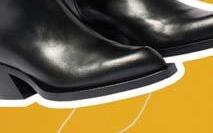















SEEING DOUBLE A chunky earring is an easy way to spruce up a simple fall look, and it’s impossible to miss these brass double hoops. Suzanne Applebaum Earring, $165, The Wardrobe, thewardrobecincinnati.com


TOUCH OF TOMATO The dark mahogany shade of this lacquered dry tomato leather belt offers a warm touch of color to autumn outfits, modernized with a circular brass buckle. Bellerose Selya Belt, $85, Sloane, sloaneboutique.com


















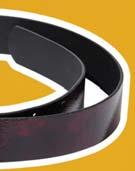

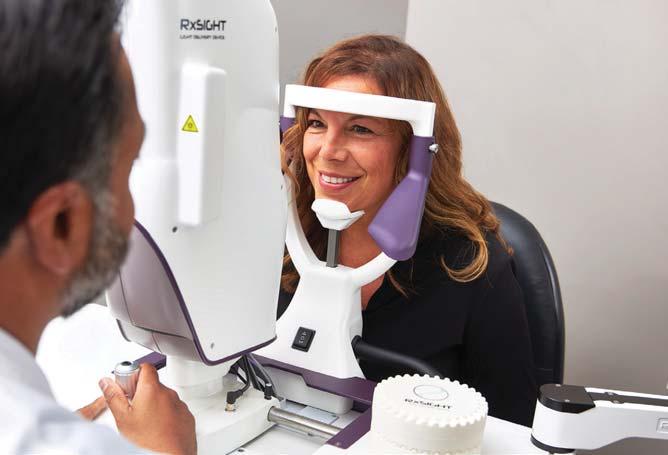
MidWest Eye Center introduces the RxSight Light Adjustable Lens, the first and only cataract surgery lens customizable after surgery.

We interviewed Dr. Saif Jaweed, MidWest Eye Center Medical Director,
Q: What is an LAL and how does it work? Dr. Jaweed: Cataract surgery replaces a cloudy natural lens with a fixed artificial one, requiring vision correction decisions before the procedure. Unlike traditional fixed lenses, the LAL allows for post-surgery adjustments. Made from UV-responsive material, it lets patients “test drive” their vision. After surgery, an eye doctor fine-tunes the lens with light treatments to meet individual visual preferences.
Q: What happens after my surgery? Dr. Jaweed: Recovery is similar to traditional cataract surgery, but the follow-up process is different. About two to three weeks post-surgery, patients receive their first light treatment and then spend a week “test driving” their vision. Additional light treatments further refine the vision, and protective glasses are worn to prevent unintended adjustments. Once the vision is optimized to the patient’s preference, two final light treatments lock in the desired vision.

Q: Is an LAL right for everyone? Dr. Jaweed: Patients seeking precise vision post-surgery and are willing to undergo follow-up treatments make excellent candidates. Studies show patients with LAL are almost twice as likely to achieve 20/20 vision without glasses compared to those with standard lenses. MidWest Eye Center offers flexible payment plans to ensure affordability for any budget.

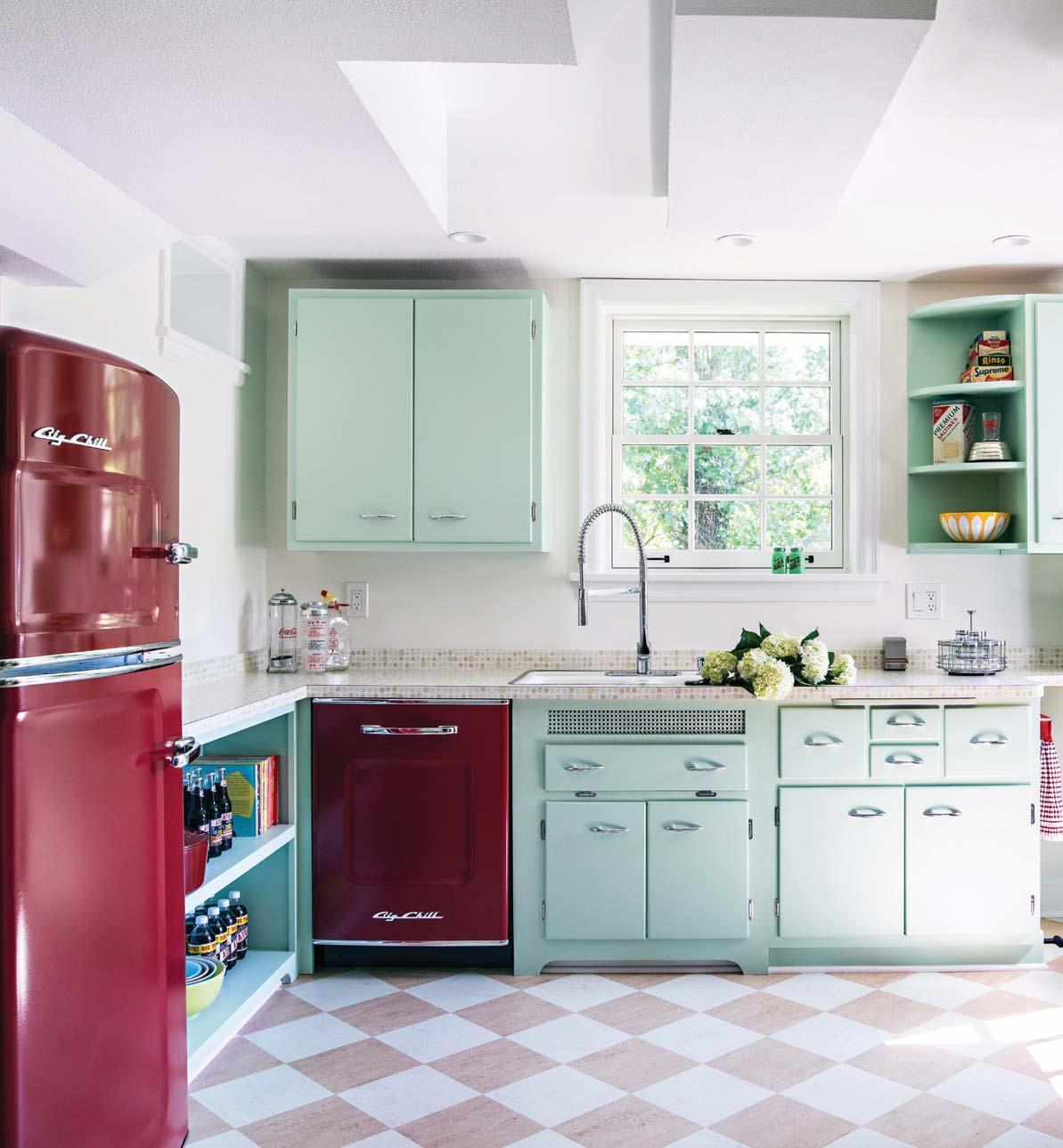
1 Barnes wanted to avoid leaning too classic with standard black-and-white checkerboard floors. She opted for a subtle contrast to brighten the room: white and creamy nude in commercial grade linoleum. SEEING RED
2 Barnes designed the modern appliances to be the stars of the show, which explains their eye-catching colors. The shade slyly references 1950s-era food packaging as well, from classic McDonald’s to Coca-Cola reds.
3 The prior beige color of the cabinets had faded, so to bring in more light, Barnes and her client picked new mint green paint, offering a surprisingly satisfying juxtaposition to the cherry-red appliances.
4 Since the original Formica countertops had yellowed over the years, Barnes had them reprinted to maintain the kitchen’s ’50s charm and make them as bright and cheerful as the day they were first installed.
S THE CLASSIC SAYING GOES, THE kitchen is the heart of a home.
level canning kitchen, thoughtfully restored to its original 1950s glory. The current owner grew up in this Wyoming house and still cherishes his memories in the kitchen, where his mother once canned peaches, green beans, and jams
To breathe new life back into it, he
designing the space. “But instead of a renovation, what my client really wanted was a restoration,” she says. Hence the period-specific character, complete with Coca-Cola signage, retro-styled recipe books, and a utensil peg board above the

At the same time, the room boasts 21st century appliances for functionality’s sake. The color scheme saturating every inch of the room is also contemporary, from the checkered linoleum floor and mint green cabinetry to the cherryred Big Chill refrigerator.

Lace up for a bouncy ride in our all-new daily trainer enhanced with premium foam.
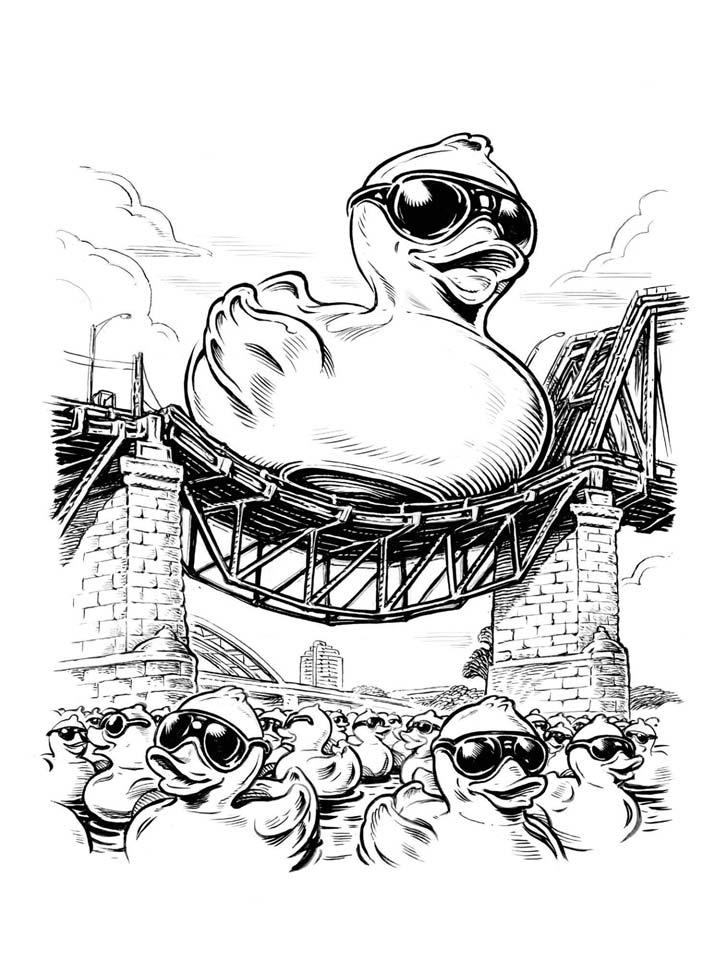
Once again, this year’s Riverfest has a “virtual” Rubber Duck Regatta. I can understand why it turned virtual in 2020 during COVID, but it’s been that way ever since. Do actual rubber ducks factor in this at all anymore? I’m still donating for the charity, but I want to see ducks! Where are they!?
—WHAT THE DUCK
DEAR WHAT :
The Doctor is delighted to assure you that if it’s ducks you want, ducks ye shall have. Just don’t expect to see hundreds of thousands of them dropped into the Ohio River during Riverfest. The Rubber Duck Regatta, the Freestore Foodbank’s annual fund-raiser, is now the world’s

Dr. Know is Jay Gilbert, radio personality and advertising prankster. Submit your questions about the city’s peculiarities at drknow@cincinnati magazine.com
largest and longest-lasting event of its kind—celebrating its 30th anniversary this year. You can blame COVID-19 for forcing the Regatta to go virtual in 2020, but other factors have prevented the analog version from returning. One is the event’s success, which now exceeds 200,000 ducks (thanks, everyone).
The weight of all those ducks now poses a structural threat to the Regatta’s traditional launch site, the Purple People Bridge. Ongoing repairs to the bridge currently can’t allow for such heavy lifting.
But fear not: You can still purchase your own duck at many of the Freestore Foodbank’s companion events before and during Riverfest. If you read this before September 1, get details and please donate at rub berduckregatta.org. Or we’ll see you next year. Quack on!
I drive past the remains of a Walnut Hills church every night. There’s only the steeple, because of a 1970s fire; today it’s part of a cluster of upscale homes. Why isn’t it lit at night? It looks so bleak in the dark. If those people can afford those homes, they can afford lighting such a glorious old steeple! —LET THERE BE LIGHTS
:
Your question suggests a class struggle with which we hesitate to engage. Remember: Americans are supposed to be lowering the temperature. The Doctor visited the lonely steeple of the former Seventh Presbyterian Church in Walnut Hills, which now lives among an enclave of nine fine homes. Because you pass there at night, you can’t see that the steeple actually does have lights. They just aren’t used. It could be a maintenance issue. Or maybe, as you suspect, it’s an expense dodged by gentrified capitalist pigs.
But we’re lowering the temperature here. The Doctor attempted to find a Homeowner Association that might, as they say, shed light on the situation. Anyone who has ever tried to find an HOA can
guess how that turned out. If it’s any consolation, there’s another steeple on the next block that not only has the lights you seek but adjoins an active church: St. Francis de Sales. Try selling them on the idea of going condo.
Why does Rookwood Pavilion have a large French fleur-de-lis emblem on its entrance sign? The shopping center is in no way French; it’s in Norwood. Was there some kind of French store at Rookwood Pavilion when it opened in the 1990s? Otherwise, what is the fleur-de-lis doing there? —POURQUOI?
DEAR QUOI:
Norwood is generally a place where there ain’t much French. And Rookwood Pavilion isn’t really Rookwood, either—that’s in Mt. Adams. But the answer to your question is easily found if you look inside Rookwood Pavilion itself. Most of the sprawling mall was originally occupied by the LeBlond Machine Tool Company, a major player (and polluter) in Cincinnati’s industrial past. The property’s transformation—just imagine that environmental cleanup—left behind a single LeBlond smokestack, on which you can still see the company’s logo. Voila! The logo includes the fleur-de-lis!
The Doctor can’t help wondering, though, why the company’s founder chose that symbol for the logo. Despite his French-like surname, Richard LeBlond’s lineage was entirely British and Irish. Perhaps he resented his father not naming him Robert as every LeBlond patriarch had done for seven straight generations. Even Richard’s few ancestors with names like Pierre and Jacques were born in England, back in the 1600s when England and France hated each other. This all seems ripe for psychoanalysis. Oh, wait, that’s German.



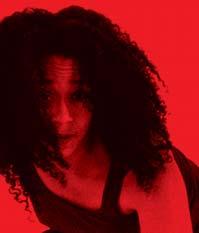

OCTOBER 11 - 12

DECEMBER 10 - 15
BY JUDI KETTELER

MY LANES FOR MAKING NEW FRIENDS HAVE ALL NARROWED. IT’S TIME TO GET BACK OUT THERE.
MMY HUSBAND AND I HAVE BEEN GOING ON DATES WITH OTHER PEOPLE. TOGETHER. LET ME back up: Together, my husband and I have been going on dates with other couples. And no, despite my click-bait lead, we’re not swingers. We’re just trying to make friends.
As it turns out, that’s a tricky thing to do in our stage of life. We’re not yet footloose and fancy-free retired people, with endless time on our hands. But we also don’t need babysitters for our kids anymore. We have more financial resources than in our youth. But our emotional resources—or at least my emotional resources—are perhaps at an all-time low, mostly because we have two teenagers at home. (If you know, you know.)
My life, once so full of friends in every direction, seems to have greatly contracted in the last several years. It’s as if the great wave of midlife has gobbled me up and spit me back out, leaving me to scan the horizon, wondering if everyone purposefully left me behind or
if I just landed on the wrong beach. It doesn’t help that I have homebody tendencies. This preference for home is somewhat shared by my husband, but I am the undisputed champion. You’ll never find me on anything resembling a party bus. I’m not much of a drinker. I don’t love crowds. Or bars. I’d like to chuck every high-top table into the sea because they aren’t made for my shortish runner’s legs with perpetually sore hamstrings. And I have some kind of sensory issue that makes it nearly impossible to tolerate loud music.
My ideal social scenario is something like a library, but with appetizers, comfortable couches, soft guitar music in the background, and rows of string lights radiating only flattering light—where it’s never too hot or too cold, gravity works in a special way that makes going braless in public a real option, and maybe, if it’s not too much to ask, there are cats to pet.
I can’t be the only semi-reclusive, noise-avoiding, library-loving, stressedout-parent-of-teenagers who enjoys people, just not too many of them, and on her own terms. I know what you’re thinking, and you’re right: It’s me, hi, I’m the problem.
WHY IS MAKING AND KEEPING friends so different now than it was, well, when I used to watch the show Friends? I started out as a typical enough kid. I had a nice group of childhood friends, including a best friend I did everything with. But we drifted apart in high school, a place where I never felt like I quite fit in. I used to think it was because it was an all-girls Catholic high school. But as I’ve gotten older, I’ve realized it was more because it was a place full of teenagers.
I didn’t like being a teenager, and I didn’t particularly know how to relate to other teenagers. I just wanted to be grown up. I would find my ride-or-die friends when my real life started, I told myself.
I didn’t exactly find them in college, because I went to Northern Kentucky University and lived at home—no roommates or late-night study sessions for me. It wasn’t until my first “career” job that I found my friendship groove, with a bunch of other clever young professionals, all making our way, Mary Tyler Moore –style. We went dancing and drinking and took turns hanging out in each other’s tiny apartments. I

































had a party at my place in Oakley—God, I loved that apartment—and someone snapped a picture of all of us, impossibly scrunched together onto my couch. In the photo, my cheeks are red and my eyes are bright, and I look so strikingly happy. I was. I belonged. I had people
Then when I became a freelance writer a few years later, I started going to writer’s conferences and met other freelancers from
cally did dominate it. We stayed in touch via freelance message boards—and eventually social media—and every year we’d meet in New York City for the big freelance journalism conference. I’d walk into whatever Midtown Manhattan hotel we were overpaying for and feel like I was home, Cheers-style.
On the home front, once my kids were in school, my husband and I started to meet
together. School events, town festivals, my son’s peewee football games: My social life was built-in and abundant. We were all in this project together.
And then…what? I don’t know exactly. Our kids stopped being little and portable. Their friend groups changed, and their social lives became their own. In fact, my kids specifically said things like, God, Mom, please never, ever talk to so-and-so’s parents. I had kept a few of the friends from my 20s, though we were scattered by now. As for my writer friends, that “take over the world” energy started moving in a zillion different directions as the industry fragmented. Some of my friends became best-selling novelists. Others became noted podcasters. Many built incredible brands around sharing content.
all over the country. There was a huge group of us around the same age—early 30s—and we shared camaraderie around making our way. We were determined to dominate the magazine industry, and honestly we basi-
other parents. There was a golden age of All Going Out to Dinner Together, where the adults would sit at one end of the table and the kids at the other. We were braving second grade, fourth grade, sixth grade
I haven’t done too badly myself. But things just changed. COVID certainly didn’t help, but I think I was heading toward establishing my own personal hermitage before spike proteins changed our world.


SUFFICE TO SAY, I’VE BEEN ALL over the place with friends. I’ve been the young loner and the young professional and the young writer and the young mom and now I’m not the young anything. Which is OK! Because getting older isn’t my enemy. But it’s forced friendships to shift.
My lanes have all narrowed, and I can’t figure out if I’m sad about this stenosis of my social life or if I just think I’m supposed to be sad about it. After all, I have sisters who have been my best friends for decades. Which means I already have more than most. So maybe all of this hang-wringing is for naught.
Except I don’t want to be the weirdo who’s forgotten what it means to be social. The one who is tragically in her own way, waiting for the library to serve baconwrapped dates and start a cat program. Hence, the friend dates with my husband.
Let me tell you, it takes planning to orchestrate the right kind of double date when you’re 50, usually go to bed around
10, and always have one ear cocked to your phone waiting for The Call that lets you know your teenage son is in Big Trouble
This Time. But here we are, giving it a go. It’s not like we’re propositioning strangers. Most of the people we’ve gone out with are people we’ve known for a while but just haven’t tried to be social with, oneon-one. Or people we haven’t seen for a while. It feels very high schoolish. Hi, do you want to be our friends? We’ll go to dinner. We’re really nice and fun people! So far, no one has actively laughed at us or scuttled away like pigeons fleeing an oncoming car.
I also forced myself to go back to a journalism conference in New York City this summer to see friends in person I’ve mostly just seen on social media for the last several years. “Forced” suggests that I didn’t want to go. I very much did. I just needed to figure out what this new iteration of me would be like.
For starters, I didn’t want a roommate. I’d always loved rooming with different
writer friends, roulette-style. Who wants to room this year?! Now, though, my alone time was too precious.
That first morning of the conference, I headed downstairs alone, stopping off at the hotel’s grab-and-go café for a quick bite. As I stood in line for my $12 small coffee and $10 spoonful of yogurt, I felt trepidation. How long had it been since I’d felt as lovely as that bright-eyed girl captured squished and smiling on the couch?
Turning the corner into the conference hall, I heard someone yell, “Judi! Here!” And there at a table were a bunch of my old ride-or-die writer pals. It didn’t matter that I had gone to bed at 8 p.m. the night before after cozying up to a Downton Abbey episode on my Kindle. It didn’t matter that leaving my room that morning required a 10-minute pep talk. They were calling me over, pushing out a chair.
I joined the circle. We called others over as we saw them, collectively knowing we still had plenty of time left to ride.





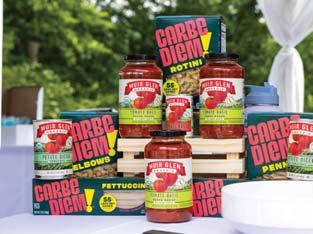









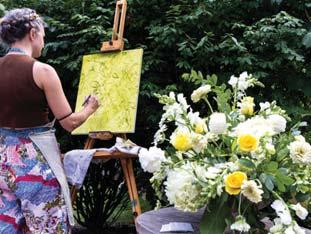


















PRESENTING SPONSORS: MadTree Brewing, Peterloon Estate
SPONSORS: Ovation, Chinet, McCormick, McCormick Gourmet, The BMW Store, Muscle Milk, Hershey, Rao’s, Veroni, TRU FRU, Muir Glen, Carbe Diem, Ruttle, OTR On The Rocks, Blox, Barilla, Wasa, Nothing Bundt Cakes, Newell’s Wada Ice, Spenga, Cruz Development, Bad Tom Smith, Brazen Oak, Cinco Cruzitos
July 18, 2024
Peterloon Estate
→ Beautiful weather, delicious food, and a historic estate made a perfect Summer evening. As guests meandered through the home and grounds of Peterloon Estate, they enjoyed custom picnic baskets, sips of prosecco, lawn games, and more. A portion of the proceeds for this chic, yet casual event support Beech Acres.

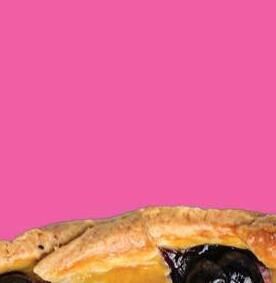




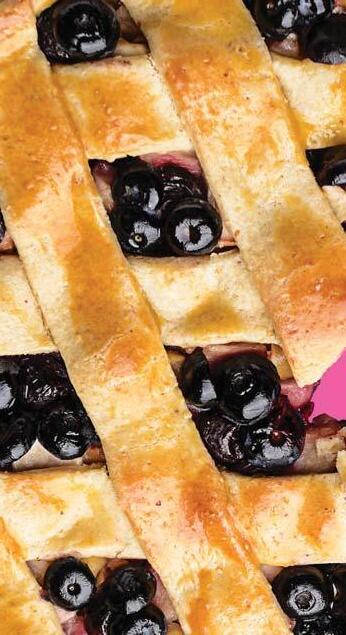












Professional and amateur bakers compete throughout the week, and you’re invited to join us as we announce the winners and sample sweet and savory treats from local bakeries and our sponsors in a celebration of baked goodness!

Tuesday, October 8
Sponsored By



6–9 p.m. Cintas Center 1624 Musketeer Dr.

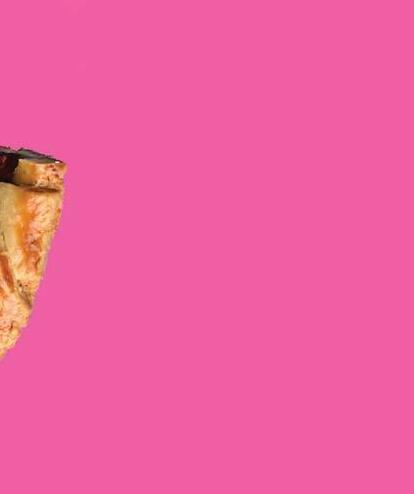


A Portion of the Proceeds Benefit Presenting Sponsors

























A l ov e l e t t e r to o u r r e g i o n ' s A love letter our region's q u i r k s , o d d i t i e s , w h i m s i e s , quirks, oddities, whimsies, a n d c h a r ac t e r s . and characters.





































cincinnati has had its share of oddballs and interesting goings-on since the beginning.
By Greg Hand
The pastor of Hyde Park’s Knox Presbyterian Church received a most unusual communication one day in April 1924. Nettie Creed Chaffin, a woman who was not and had never been a member of his congregation, recently died and left the bulk of her substantial estate, estimated at $50,000, to his church. Knox was then erecting the fine stone edifice that decorates Observatory Avenue today. In the fine print of her bequest, the pastor discovered a somewhat irregular covenant attached to this generous gift. Mrs. Chaffin demanded to be buried inside a wall of the new church. Although her tomb was to be unmarked, she requested a plaque in the nave which would note her gift and her eternal presence “until the day break and the shadows flee away.” All of this could indeed be accommodated, the good pastor decided, and the earthly remains of Nettie Chaffin rest immured at the Knox church to this day.















Reports of bizarre cryptids are not uncommon around Cincinnati. In 1894 two “nondescript creatures, horrible in appearance and strange in habits” were spotted at a sandbar near Vevay, Indiana, and dubbed “mud mermaids.” Dozens of people in 1959 claimed to see Octoman, a half-octopus, half-human beast near New Richmond. None of these apparitions have enjoyed the staying power of the Loveland Frog (or Frogman). Sightings of varied credibility date to 1955, when a businessman first reported seeing several three-foot-tall creatures with leathery skin and amphibian faces standing near the side of a road. The legend really hopped off in 1972 when two Loveland police officers spotted some froggy suspects near the Little Miami River. Discovery of a dead, tailless iguana in the area could have, but did not, end speculation. Sightings have been rare recently, but the tale has grown in the telling, with some people now claiming the elusive frog is six feet tall. The City of Loveland, recognizing a good thing, has designated the Loveland Frog as the city’s mascot and sponsors an annual Frogman Festival.



















C I N C I N N AT I S CINCINNATI'S D E AT H FA M I LY DEATH FAMILY
In the early history of Cincinnati, a family of Deaths held positions of prominence. The Death family emigrated from England early in the 1600s to Virginia and Maryland, then made their way westward, settling on Cincinnati’s Western Row in the 1850s. Perhaps the most unusual name in the annals of Cincinnati, and certainly the most Goth, belongs to the daughter of this family, Arachne Death. The patriarch of the Cincinnati branch, Absalom Death, was a prosperous compounder of rectified whis-
L o v e l a n d F r o g m a n F e st i va l Loveland Frogman Festival
A celebration of the local legendary amphibian with art, cryptozoologists, and a costume parade. Oasis Conference Center, March 1 & 2, 2025, frogmanfestival.org

key who was influential enough to be appointed director of the city’s public hospital. Yes, the head of our hospital was named “Death.” There is an old anecdote about Mr. Death’s whiskey business. Over his shop on Main Street, Absalom had a sign that read “Rectified Whiskey” and underneath that was his name. One day, a near-sighted woman from the country rode by in her son’s carriage and called out to the young man to stop immediately when she saw this sign. “Rectified Whiskey! Absolute Death! That’s a fact. Johnny, let me get out. There is at least one honest man in Cincinnati and I want to see what he looks like!”
C I N C I N N AT I S CINCINNATI'S
A D D E S T ADDEST A D A S S ADASS
General August Willich was born into German nobility, possibly the illegitimate son of the Prussian crown prince. Over the course of an audacious life, Willich renounced his noble heritage, incited two revolutionary armies in Europe, challenged Karl Marx to a duel, raised a regiment during the American Civil War, defeated the Texas Rangers in battle, conducted rifle drills while under fire on the battlefield at Shiloh, endured months in a Confederate prison, defied exile and a price on his head by returning to Germany to study philosophy, and volunteered at age 60 to fight in the Franco-Prussian War. Willich was a staunch “Forty-Eighter,” one of the militants who attempted to overthrow Europe’s monarchies in 1848. He was an early adherent of the ideas of Karl Marx, who considered Willich to be far too radical. Willich publicly insulted Marx and challenged him to a duel. Marx wisely declined. Willich escaped a death penalty for his revolutionary activities by immigrating to Cincinnati, where he rallied fellow Germans to fight the slave-holding South. He achieved the rank of general and was showered with military honors. h i s t o r y c o n t i n u e d o n P a g e 3 8 history continued on Page 38
B o c k f e st Bockfest
Combination spring/German/beer fest involving burning a snowman in effigy and goats as far as the eye can see. Over-theRhine, March 7-9, 2025, bockfest.com
T h i s T i k To k This TikTok
fa m o u s f i s h famous fish e n t h u s i as t enthusiast bu i lt a built f r e s h wat e r freshwater
e e l p o n d i n h i s eel pond in his b as e m e n t basement.
—CLAIRE LEFTON
Tell us how you got started with your eel pit. About two years ago when we were moving into this house, I saw the manhole cover in the corner [of the basement] and checked it out and immediately knew I was building a fish pond down there.
How did you choose the specific species you wanted to put in there? I’ve always been wanting to keep American eels. They’re just hard to [care for] and they’re something that handles the cold really well. I like primitive fish. So that’s kind of what I go after. I’ve always wanted to keep all these giant monster fish, like the sturgeon and the gars, that I’m slowly adding over time, now that I have the time to track them down and actually get them.




When did you start finding success online with the Eel Pit? About two years ago, it really blew up. I think the second video I posted went viral pretty much within the first 10 minutes. It had like 50,000 views. And then it just goes viral at least once a month since then.
Have you found an Eel Pit appreciation community in town? I work at a fish store, and I’ve had customers ask, “Have you seen that eel pit online?” It’s like, “Oh, yeah, that’s mine.” So that’s a regular occur-










rence—people telling me about it not knowing it’s mine.
Have you embraced your title as the Eel Pit Guy? Oh, yeah, for sure. It’s crazy. I can walk into a bar and they’ll be like, “You ever heard of the eel pit?” so that’s fun just going out. I was in the Everglades once and someone stopped and was talking to us and asked me if I’d ever heard about the eel pit and I was like, “Yeah, that’s mine,” in the middle of the Florida Everglades, so that was a fun one, too.




















William Byrd Powell was a noted phrenologist who was very much invested in studying how the inner essence of human beings was expressed through the shape of our heads. Powell held an esteemed professorship at Cincinnati’s Eclectic Medical College. Among his students was Temperance Kinsey who, upon receiving her medical degree from that college, became the first female physician in Cincinnati.
When Professor Powell died in 1866, Cincinnati was shocked to learn the contents of his last will and testament: He bequeathed his head to his favorite student, Kinsey. Yes, his head. Powell’s will, duly filed and approved in the probate court, requested another of Powell’s students, one Dr. Adolphus Turner Keckeler, to surgically remove his head and deliver it to Kinsey at the soonest opportunity. As it developed, almost simultaneously with Powell’s demise, Kinsey and Keckeler married. In those days, it was rather expected of phrenologists that they maintain a collection of heads and skulls for research purposes.

Doyle regaled audiences with “The Promise of Immortality” in a lecture illustrated with “spirit photographs” allegedly portraying people long dead. Conan Doyle scheduled his appearance in Cincinnati so he could visit a psychic medium named Laura C. Pruden, who lived in Price Hill. Mrs. Pruden claimed to be a sort of spiritualistic stenographer who transcribed messages from beyond. Conan Doyle was quite taken with Mrs. Pruden and even brought her to London, despite several widely published exposés about her very fallible seances. Mrs. Pruden had a son named Albert Carter, who continued his mother’s prognosticating work by patenting in 1948 a device he called a “Liquid Filled Dice Agitator.” Redesigned and spiffed up with a 20-sided die by Cincinnati tinkerer Abe Bookman, the “Liquid Filled Dice Agitator” became the “Magic 8-Ball” we know today.
Washington. As the city expanded some 50 years later, the Mound Street mound was leveled. During demolition in 1841, workmen excavated a strangely inscribed rectangular stone tablet. At first, scoffers claimed the Cincinnati Tablet was a hoax. As similar tablets were found later in similar mounds, the artifact was accepted as real, but a real what? Was it a talisman? A calendar? An astronomical device? A fabric pattern? A pagan idol? An ancient tattoo “flash”? One scholar, Joseph John Hall, declared the Cincinnati tablet to be “The Great American Rosetta Stone” and claimed that this mysterious object, preserved at the Cincinnati Museum Center, is, in fact, “the master key of all the mound builders’ mysteries, wonderful culture and high intelligence shown and handed down to civilization of the present day for our good and welfare.” history continued on Page 40

The Doctors Keckeler, it was reported, shared an inventory of more than 400 crania, the disposition of which was not mentioned in either of their own wills.
H E C A S E HE CASE O F OF H E HE R I C E RICE I L L ILL S Y C H I C SYCHIC
Sir Arthur Conan Doyle, creator of Sherlock Holmes, was a devout Spiritualist. During his 1923 visit to Cincinnati, Conan
L u d l o w D e r by Ludlow Derby

“The most deranged two minutes in sports” where mice race for glory and cheese. Covington Turner Society, Friday before the Kentucky Derby, facebook.com/LudlowDerby History Continued H R E N
M E R I C A S
O S E T T A S T O N E OSETTA
Out in the West End, Mound Street got its name because it ran straight south into a large, prehistoric mound at Fifth Street. That tumulus stood about 35 feet high when the first European settlers arrived here in 1788. General “Mad” Anthony Wayne ordered several feet shaved from the top so it could be used as an observation post by the soldiers stationed at Ft.
Missing Linck Festival Brewers come together to share their creations using a pre-prohibition yeast that was found in a vat in the OTR underground tunnels. Northside, May/ June, missinglinck.com




The ultimate extreme downhill bike race (on Big Wheels). Throw water balloons at the racers as they try not to crash. Pendleton, July/August, dangerwheel.com
P L AY I N G L I K E I T ' S 1 8 6 9
LIKE IT'S 1869
Vintage base ball (two words) is a state of mind. —John Fox
Back in Civil War era Cincinnati, a new athletic pursuit called town ball quickly eclipsed the public’s interest in cricket. Rebranded as “base ball” (two words) the game would grab national news headlines when the Red Stockings became the sport’s first all-professional team in 1869. Their local rivals, the Buckeye Base Ball Club, couldn’t keep up and folded the following year.
Fast forward a century later, and baseball has endured steroids, cheating scandals, and $700 million contracts to stand as a major U.S. sport, truly “the national pastime.” And yet up in Sharon Woods Park a group of gentlemen gather every summer to block out thoughts of Bryce Harper and Shohei Ohtani and recreate those innocent early days.
The Cincinnati Vintage Base Ball Club has been staging games at the Heritage Village Museum grounds since 2000. The Red Stockings, dressed in their traditional knickers with bright crimson socks, were first to start playing. The Buckeyes, in their long-sleeve shirts and dark slacks, followed a year later. Besides battling each other, the teams schedule games against like-minded vintage teams from across Ohio and Indiana and as far away as Tennessee. The season’s final home games are September 22 in a doubleheader against the Clodbusters from Dayton.
Brian Essen, president of the Cincinnati Vintage Base Ball Club, says the players aren’t exactly a threat to the current Reds roster. “We have guys ranging in age from 15 to 72, and some are freakish athletes and others have no business being on a diamond but just love playing the game,” he says. “Vintage base ball isn’t about trophies or titles or glory, but about competently demonstrating the game as it was played back in the 1860s and having lots of fun with fellow vintage ballists on the field.”
The early game is recognizable to modern fans, says Essen: nine innings, nine players, four bases 90 feet apart, three outs, and so on. The biggest difference is that vintage players don’t wear gloves in the field. The ball is slightly softer than today’s, and only one is used for an entire game. Pitchers toss underhand, he says, “generally for the purpose of giving the batter something to hit rather than striking him out. That’s what we understand they did in early base ball.”
Wearing the old uniform and shouting “Huzzah!” when great plays are made, Essen says he occasionally feels like he’s escaped from the modern world. “Especially when we’d play nine with a small-town team on some field in the middle of nowhere Ohio,” he says, “and get invited back afterward to a little church on the side of a country road for a home-cooked meal.”
1869 Cincinnati RedStockings

R o b e r t Robert
t h e the B a r r r d Barrrd
The Dread Pirate


r o b e rt d or s e y T h e robert dorsey,The n otor i o u s p i r at e notorious pirate o f r eg i o n a l of regional R e n a i s sa n c e Renaissance f e s t i va l s festivals.
—EMMA BALCOM
How did you become Robert the Barrrd? I was doing rock bands in the ’90s, and that got mashed up with my music theater background and became doing it in character. I ended up reaching out to the Ohio Renaissance Festival and said, “Let’s be the crazy guest band for pirate weekend.” That led to doing it at a number of regional fairs.

What’s a typical act look like? One of the callout lines I sometimes use is I play some of the greatest hits of the ’70s, ’80s, and ’90s. So here’s to the 1770s, 1880s, and the 1990s. I play old traditional folk songs, cast numbers, folk music written in the 1980s but made to sound Old Englishy. I do have some originals— I have some traditional songs from Scotland and Ireland that I repurpose. I also do things like cover “Shiver Me Timbers” from Muppets Treasure Island. I do a lot of Johnny Cash, covering Nine Inch Nails. My teenage son told me that sea shanties are all over TikTok, so I learned “The Wellerman.”







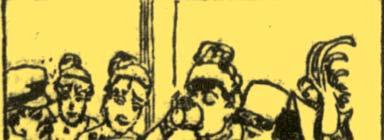







Ta l k i n g paw - l i t i c s Talking paw-litics
w i t h t h e F r e n c h with the French Bu l l d o g w h o Bulldog who r u ns R a b b i t H as h runs Rabbit Hash, K e n t u c k y Kentucky.
—CLAIRE
LEFTON
Since 1998, the small Northern Kentucky town of Rabbit Hash has elected canine mayors. The legacy of the inaugural pup, Goofy Borneman-Calhoun, lives on in current mayor Wilbur Beast—who beat out incumbent Brynneth Pawltro in an election so contentious it was covered by The Washington Post
What are your policies and platforms? I support the banning of breaking treats in half by humans. I also stand firmly against the hiding of medication in turkey.
What are some of your regular mayoral duties?
I mainly fund-raise for nonprofits. But when I’m in town I like to reach out to my constituents for scratches and treats.

A curious article appeared in the Cincinnati Medical Advance for November 1875, alerting local doctors that some of their patients had adopted a peculiar diet. According to that august medical journal, Cincinnati was home to blood drinkers—anemics and consumptives who daily visited the slaughterhouses to obtain the invigorating draft of ruddy life-elixir, fresh from the veins of beeves. Back when Cincinnati butchers operated abattoirs all over the fringes of the downtown area, they provided free blood to anyone who stopped by and asked for a glass. It is no surprise that a macabre practice such as this would attract Cincinnati’s legendary chronicler of the bizarre, Lafcadio Hearn, and indeed it did. Hearn published his report of a visit to one such shambles just a few months later, reporting that “many handsomely dressed ladies” stopped by each afternoon for some crimson elixir, warm from the throat of a healthy bull. Hearn witnessed the scene when the neck of the animal was severed and glass after glass, held to the spouting veins, was immediately offered to the invalids, who “quaff the red cream with evident signs of pleasure, and depart their several ways.”
C O U R T COURT E S T E R S ESTER'S I N A L INAL E S T EST




What’s your favorite thing about being mayor of Rabbit Hash? The best thing is that I take all the human elements out of politics. When you have a dog in charge, the icky parts of politics go away and it’s all about having fun.










Judah Touro Cemetery in Price Hill, unlike any other cemetery in Cincinnati, can boast the grave of an actual court jester. Always small, Hayeti Hassid stopped growing at around 5 years of age, when he stood just 30 inches tall. Hassid early on developed a talent for making people laugh through a





repertoire of dancing, singing, and sleightof-hand tricks. Around 1870, Hassid’s reputation caught the attention of the Ottoman Sultan, Abdul Hamid II, who added him to the royal household in Istanbul as court jester. When the novelty wore off , Hassid was consigned to the harem, where he entertained the Sultan’s many children, becoming, as it were, a sort of Ottoman Uncle Al. Tiring of the kiddie fare, Hassid made his way to Paris and joined the troupe of the Folies Bergère. He was discovered by British entertainment impresario Lloyd Forsyth and promptly appointed mayor of Forsyth’s “Tiny Town” revue of little people. An international tour brought Hassid to Cincinnati, where he reconnected with a childhood friend and retired here for the remainder of his days. Hassid died, aged 67, in 1919.
Seven tons of sauerkraut are devoured over two days each year since 1970. Waynesville, October 12 & 13, 2024, sauerkrautfestival. waynesvilleohio.com/home
Dogs dressed in their best holiday attire march through the streets of Mt. Adams and compete for prizes. Mt. Adams, December 14, 2024, mtadamscincy.org/ calendar-of-events
The massive fiberglass arthropod sits at 67.5 feet long at a camper rental company in Hillsboro. FROM JUNE 2021 ISSUE O B S C U R a

world's largest horseshoe crab

O B S C U R a

newport fairy doors the goebel goats

Farmer Gus Wolf’s goats are hired out to eat overgrowth and clean up spaces like Goebel Park. FROM JULY 2017 ISSUE
These tiny magical tableaus, hidden in the Mansion Hill neighborhood in Newport, spread whimsy around Northern Kentucky. FROM SEPTEMBER 2023 ISSUE


H E O R Y HEORY I N G S INGS
O L L O W OLLOW Hamilton, Ohio, is home to the Hollow Earth Monument, among the very few memorials erected to celebrate a crackpot geographical theory. The monument marks the gravesite of Captain John Cleves Symmes, who believed that the earth was hollow and that we could gain entrance to the interior of our planet through huge holes that pierced the North and South poles. Symmes published his Hollow Earth theory in 1818 while he was living in Newport, Kentucky. Symmes’s name may sound familiar—he was the nephew and namesake of the same John Cleves Symmes who helped create Cincinnati. The younger Symmes earned fame as a hero during the War of 1812, and spent the rest of his life, and his reputation, propounding his delusional geography. Symmes died with his theory ignored. His son, Americus Vespucci Symmes, labored to popularize his late father’s ideas. Symmes’s theory inspired Jules Verne to compose his novel, A Journey to the Center of the Earth, and contributed to the idea that Santa Claus makes his home at the North Pole.










Some unusual monuments, museums, and attractions.









Are you truly a Cincinnatian if you haven’t heard of the Mushroom House? Located in Hyde Park, this home is a stark contrast to its neighbors. With a winding orange staircase and many circular windows, the architect plucked it straight out of a fairytale. While visitors can’t go inside, it’s a popular landmark.
What’s weirder than thousands of puppet eyes watching your every move? Vent Haven, the world’s only museum dedicated to ventriloquism, houses the personal collection of its founder, ventriloquist W.S. Berger. From dummies and puppets to historical posters and playbills, Vent Haven won’t disappoint those in search of Greater Cincinnati’s wonderful weirdness. Tours must be scheduled in advance. 33 W. Maple Ave., Ft. Mitchell, (859) 341-0461, venthaven.org
For us, A Journey to the Center of the Earth is sci-fi, but to Captain John Cleves Symmes, it would have been much more. A simple stone pillar with a cement sphere on top located in Hamilton stands testament to the 1800s lecturer, who truly believed our planet is hollow. Not only is the Hollow Earth Monument in honor of him, but it also marks his grave. 454 S. Third St., Hamilton
As you walk the streets of Covington, don’t be alarmed if you suddenly face a 30-foottall green alien peering at you through a magnifying glass—that’s just Clive. Clive the Alien was created by artist Marc Phelps and sits comfortably on the Midtown Parking Garage. There are a few reasons he landed here: Cincinnati is headquarters to the Mutual UFO Network, was home to ufologist Leonard Stringfield, and is near Wright-Patterson Air Force Base (which was rumored to house remains of a spaceship). E. Fifth St. and Scott St., Covington
What started as a personal collection of a few Lucky Cats turned into a museum with thousands of them. The Lucky Cat Museum has been open to the public in the Essex Studios since 2016 and is home to more than 2,000 maneki-neko (Japanese for beckoning or inviting cat). The museum is still growing and is open by appointment only. If you pay a visit, look out for one of the owner’s favorite cats: a Weird Nyal she commissioned from Argentinean artist Marceland. 2511 Essex Place, Walnut Hills, luckycatmewseum.com
What’s Your Favorite Color? Magenta!
T h e l o n g e s t - The longestr u n n i n g c as t running cast m e m b e r o f member of C i n c i n n at i s Cincinnati's o n ly only Rocky Horror Picture Show Picture s h a d ow c as t shadow cast.
—EMMA BALCOM
How did you come to join the Denton Affair? My friend brought me to a Rocky Horror show 24 years ago and I had never laughed so hard. I joined the Denton Affair that same night. Most people that join the Denton Affair are there while they’re in college, so usually about two to three years. My favorite character to play is Frank-N-Furter. He has so much sass.
What is a shadow cast? It’s essen-
tially when there’s a movie playing and a cast is acting in front of it in real time. They’re wearing costumes that are identical to the characters on the screen.
What should people know that haven’t been to a Rocky show before? It’s a lot of fun. You have to be open-minded. It’s not something that you see every day, it’s different every single time. The Rocky cast is special—it offers a place for weird kids to find a family. It’s not like seeing a regular movie—you get to take part. The acceptance of the Denton Affair is what keeps people coming back. It’s a place where misfits can find a home.





What other shows does the Denton Affair put on?
Starting in 2012, we did Cry Baby, The Big Lebowski, Beetlejuice, The Little Shop of Horrors Beetlejuice might be coming back this year. It’s also our 45th anniversary this year, so we plan on doing something special around October or November to celebrate.







Magic memorabilia, DIY toymaking, and vegan cheeses, oh my!

Walking through the door of Hierophany & Hedge feels like taking a step into a fantasy novel. This magic supply store in Covington—the only of its kind in the region—offers a variety of goods and services for the local witch: fittings of elaborately carved wands, tarot cards designed by local artists, hand-washed and tumbled crystals, a selection of bespoke arcana, and tons more. While the selection may look overwhelming, owners Auger and Coil are always willing to provide expert advice to beginners or make a recommendation to a guide in their extensive literature collection. Be sure to check the website for the shop’s hours before paying a visit, as they change every week. 19 W. Pike St., Covington, hierophanyandhedge.com
While its expansive music and literature collection has made the Covington shop a prime location for concertgoers and bookworms since 2016, Hail also proclaims itself a safe haven to “satisfy all your weirdo needs.” Its stock of oddities includes everything from taxidermy to books on the occult, a representation of the collections of co-owners Tracy Blankemeyer and Neil Higginbotham. The two also host workshops and classes at offsite locations, including introductions to bug pinning, candle magic, and potion-making. 720 Main St., Covington, hailcincinnati.com

Kids’ kooky imaginary friends come to life at Happen’s Toy Lab, a part of the nonprofit that aims to bring families and communities together through creative experiences. In its Northside studio, Happen collects donated toys that it cleans, takes apart, and organizes by piece so that adults and children can come in and create a new plaything all their own. Kids are educated on and encouraged to participate in the process of upcycling by picking seven different toy parts, which they then bring to the lab “professor” to instruct on how they want the toy put together. The end result is crafting a funky new friend—fidget spinner arms, helicopter propeller legs, a Hot Wheels base—for them to take home and play with, just as sturdy as the original toys once were. Further, all proceeds from the Toy Lab fund Happen’s free community art programs. 4203 Hamilton Ave., Northside, toy-lab.com
When Heather Donaldson and her husband went vegan in 2019, they did so with the intention of helping the environment by eating more sustainably. What she didn’t know was that the new diet would improve their health and ultimately lead to creating a successful vegan cheese business. According to Donaldson, a former food stylist, much of the cheese-making process is similar to that of normal cheese—although instead of a dairy base, her cheeses use nuts, millet, or pea protein. She says they taste like their dairy counterparts and although the vegan cheeses have a higher melting point, they don’t introduce cholesterol issues like normal cheeses. 5903 Bramble Ave., Madisonville, madcheese.com








m a k i n g making c r e e p y creepy c r aw l e r s n ot crawlers not s o c r e e p y so creepy.
—BRIANNA CONNOCK
How did The Bug Chicks come to be? Kristie Reddick: Jessica and I met in grad school. We were both studying entomology. I asked her to come with me to Kenya for my research. I needed someone to film my work, and about a month in of her watching me teach [about bugs], she wanted to do it, too. Jessica Honaker: One of the professors that Kristie worked with suggested that we be on camera together and that we call ourselves “The Bug Ladies.” Kristie landed on “The Bug Chicks,” and that’s how the brand took off. We’ve been The Bug Chicks now for 16 years.
What is your mission as The Bug Chicks?


anybody can access. We think if you can see it, you can be it. We want to show people that women can be scientists, and people from all walks of life can love and embrace the things that they want.






KR: It’s about empowerment. It’s about fostering empathy for ourselves, others and the natural world. We use bugs to help people feel capable of great things. I used to be afraid of bugs. 15 minutes ago, maybe you didn’t want to hold that cockroach. But if we work with you and get you to hold it, you felt capable. JH: We’re also big on public access to science. We want to create accurate but fun content that
How did you end up in Cincinnati? KR: We got a gig at the Cincinnati Nature Center in 2019. We were ready to go, and then Jess got sent to another gig, so I had to go by myself. I hadn’t been to Cincinnati in 20 years. The Nature Center was so warm and welcoming to us, and I just got such good vibes from this city. There was an East Coast directness and a Midwest kindness that was wonderful.
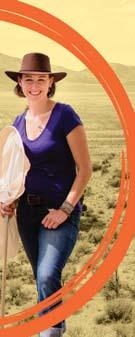







workshops and assemblies that we do at libraries and schools. Incredible Arthropods and Songs of Science are [some examples]. We love to teach people in person. JH: We teach some STEM weeks with area high schools where we take overnight trips to do research, too. KR: We are transitioning now into a lot of “train the trainer” to make sure our impact continues. You can teach a lot of students, but you can reach more by teaching teachers.






Where do the bugs live? JH: They currently live in my home office. Kristie and I have shared custody, so we switch on and off KR: I had them for years, but during the pandemic I sent them to her as I moved across the country. They’re very happy at Jessica’s house.

























What are some examples of the work you do with the public? JH: We create a lot of educational video content [for various agencies], we’ve worked with the USDA, and we do a lot of international work. KR: Some of our favorite work is the

h i s C i n c i n n at i his Cincinnati n at i v e i s native is k n ow n fa r a n d known far and w i d e f o r h i s wide for his awa r d - w i n n i n g award-winning b e a r d beard.
—BRIANNA CONNOCK
Can you tell me the origin story of your beard? I worked in an orthpaedic doctor’s office and was clean-shaven for about 10 years. A coworker was giving me crap about not being manly looking and having a baby face. She bet me to not shave for a year for $1,000 to a charity of my choice. Six months in when she realized I was going to win, she backed out. But it opened the door for me.
What kinds of opportunities has your beard brought you?
I started getting opportunities from businesses in Cincinnati. Back in 2011 I was asked by a company to walk in the parade on St. Patrick’s Day. My wife made me a kilt, and we painted my head gold and my



beard green. It ended up being featured on USA Today. The same company later wanted me to do it again but go a little harder for Reds Opening Day. That year I painted my head like a baseball. It ended up being a snowball effect from there. I randomly get booked to work in movies and TV shows [like the recent movie The Bikeriders]. I get to do a lot of charity work and meet a lot of people. It’s been an interesting journey.
Tell me more about your beard competition titles. I started

competing in the World Championships of Facial Hair, which they have once every three years. Before COVID I competed in Belgium, and I ended up getting bronze. I just won the Daytona National Championship in the Full Beard Freestyle category. It’s the hardest category to win because you don’t know what your opponents are going to do. There’s also a local club called the Cincinnati Beard Barons that have an event coming up at Southgate House, too.
What are some of your favorite beard looks you’ve done?
I’d have to go with the one we did in Daytona. I also have a handful of Bengals ones I really like. One thing you’ll notice is I never do the same look twice. When there’s an away game on a Sunday or Monday, my artists paint me before I leave, and I will stay painted for three days until the game.
Beardo’s Curiosities, a former Mt. Adams mainstay that’s found its new home in Northside, has become one of the quirkiest curiosity shops in the Queen City. Beardo informs customers that they should prepare to feel like they’re walking through a zoo or a museum when they drop by, offering everything from pinned bugs and animal skulls to crystals and antiques, and sometimes even human bones. With such an expansive and kooky inventory, Beardo’s is sure to have something to add to even the most niche of collections. 4174 Hamilton Ave., Northside, beardoscuriosities.com


Ever had a drink served to you by a fireeater at the circus? That’s nothing out of the ordinary for this popular Ludlow brewery. Bircus opened its doors at the historic Ludlow Theater in 2019, after owner Paul Miller was inspired by Belgium’s Circusplaneet, where entertainers raised money for performances by selling beer. Ludlow’s Bircus is a collaboration between Bircus Brewing Co. and Circus Mojo, combining delicious craft brews with live circus entertainment, including fire heating, acrobatics, fog machines, and live music. 322 Elm St., Ludlow, bircus.com
The store in Fairfield where wackiness is the name of the game. —Claire Lefton
There’s nothing on earth quite like Jungle Jim’s. The 200,000-square-foot international grocery store in Fairfield with more than 180,000 items to shop from is considered a tourist destination for its eccentricities. From ostrich eggs to durian to live crabs to the world’s hottest gummy bears, you name it, Jungle Jim’s probably has it.
While the products are a large draw for the store, what really makes it stand out is all the weird stuff scattered around the store. Where else are you going to get serenaded by a band of animatronic cereal mascots on top of a boat while shopping for produce? Would you like to pick up some cereal beneath the unnerving eyes of a giant soup can on a swing? Only at Jungle Jim’s.
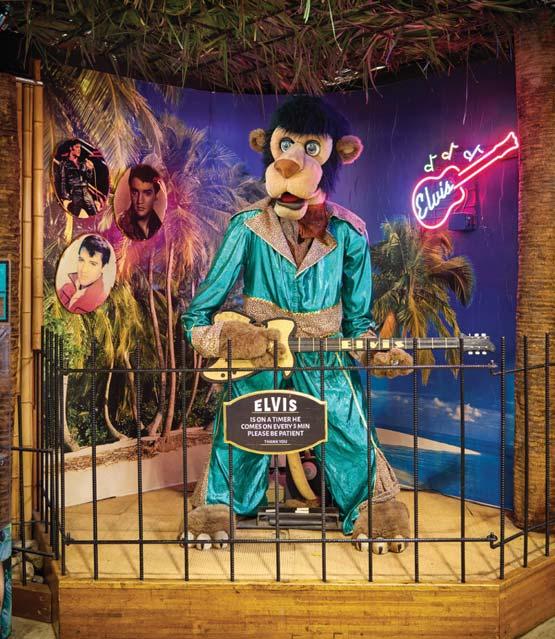
people start calling us or e-mailing us asking, you know, ‘Do you want this, this, or this?’ A lot of it came from Kings Island and then that spun off other contacts.”
“We used to go seeking [that stuff ] out,” says Jungle Jim’s Director of Development Phill Adams. “And then
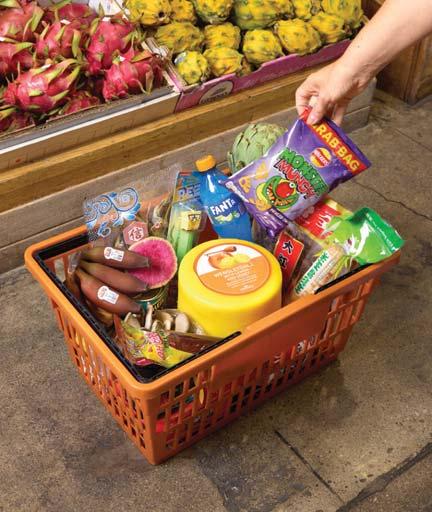


The store team lovingly refers to these treasures as “junk.” According to Adams, most display ideas start from a cool piece of junk that someone finds, then they work backwards to see what store items could match with it.
Some parts of the store, including the studio for the official Jungle Jim’s Podcast, were built with repurposed junk. “The main room I’m in used to be a greenhouse,” says podcast host Mark Borison. “My door was from an old Borders Books. All of these windows are not windows. They’re dairy cases, and it’s really funny because there’s trapped condensation in there.”
The Jungle Jim’s team has always seen the store as a combination grocery shopping-entertainment experience. With the addition of the podcast in 2021, the entertainment aspect became more interactive. “I just wanted to do late night TV in a grocery store. That was my pitch,” says Borison. “I grew up watching a lot of David Letterman, so I was like, ‘Why are we not throwing cantaloupes off the monorail?’ You know what I mean?”
“I think the grocery business is a sideline for me to be crazy,” says store founder and owner Jungle Jim (real name, James Bonaminio.) “I don’t know why but I just get a kick out of that, you know, building all this stuff. People come from all over and they like it, they get entertained. And I think it’s neat.”

By LAURIE PIKE
by ANDREW DOENCH
Lockland has been in decline for decades, but is revitalization a real possibility?

Apiano dirge plays. Rain spits on a dark, empty street. Storefronts are shuttered, and the corner-shop windows are papered over.
A young woman with long brown hair casts her gaze out the window to a long-closed bank. “Our little town is in desperate need—help come and revitalize our business district,” she pleads.
The short video is an audition for the HGTV series Home Town Takeover Submitted in 2020, it wasn’t successful in landing the reality TV show, but it illustrates just how far Lockland, a one-time industrial powerhouse, has declined. An elevated stretch of I-75 in the background of the clip looms as a reminder of the many people and factories that have left town over the past 40 years—and the feeling, among many of those who remain, of being passed over.
Alyson Gawrych is the woman in the video, and in real life she’s known for optimism, not glumness, about Lockland. She runs one of its most successful small businesses, Mill Street Studios. Filmmakers and photographers rent out decorated suites in the 12,000-square-foot building.
It was one of the first multi-studio operations of its kind in Cincinnati when she established it just before the pandemic. Today, Lockland’s central district is finally seeing the forward momentum that the video’s uplifting end scene— residents waving as a drone shot zooms outward—begged for.
Five short years after Gawrych arrived and began renovating her building, the storefronts look spiffy in the four-street historic district wedged between the north and south lanes of 75 (a.k.a. the Lockland Split). Several buildings have been, or are being, rehabbed back to their 19th and 20th century glory. Hollywood also came calling: The Bikeriders, Bones and All, and the upcoming Robert de Niro flick Alto Knights filmed here. A maker’s market in June enlivened the corner of Mill and Dunn streets, the district’s home base. Helen Smith moved Helltown Workshop, her upholstery business, here from Northside. In a
space where a Kroger store sat 100 years ago, her shop window oozes fabulousness with colorful furniture and vintage decor.
“Alyson and I started calling it the Lockland Arts District because there’s the design firm [Collective Spaces] across the street, and everyone’s an antiques dealer,” says Smith. “This is still a place you can help develop and steer in a direction the community wants it to be going.”
Todd Snapp, a well-tattooed architect with clear eyeglasses and wavy gray hair, owns the corner building that houses Helltown Workshop. He recently put in a recording studio upstairs. He named the building Dunn Street Station and—along with his girlfriend Laura Hughes, plus Smith and her partner Brian Olive, a Grammy-winning musician—is doing much of the construction himself to create a hub for art, performance, and community.
Sam Wilder, a bespectacled 67-year-old, remembers frequenting the spot when it housed VaughnHesley Pharmacy in the 1960s. “We’d buy comic books and cherry phosphates,” he recalls. Wilder bought the building across the street for his office; he’s a business coach and runs an ad agency. The enclave, with a lounge area in back for frequent dropins by friends, displays Wilder’s vast collection of vintage and antique art and ephemera. With meticulously arranged floor-to-ceiling vignettes, it could double as a museum.
“Upgrading of buildings is infectious,” says Snapp. “I’m putting a lot of money into this because of a long-term vision. There’s a feel-good aspect to it, growing with the community and curating the vibe.”
Snapp got help when Jeff Nichols, director of The Bikeriders, also fell in love with the corner. The film company removed wood covering glass-brick windows and painted the exterior, among other improvements. They also paid rent—a location fee—on Dunn Street Station for three months, shooting bar scenes in the largest space and using Smith’s workshop for a production office.
More movie production can be expected in Lockland—not just for its antique-looking streets, but because of the dearth of pedestrian and commercial activity. “It almost feels like a movie backlot,” says Nichols. Fewer active stores mean less money a film company has to shell out for disrupting business as usual.
This is just the artsy part of the revitalization of a town that was purpose-built for industry, thrived
for well over a century, and then went bust. There’s much more to Lockland’s reawakening, but let’s first take a look back.
Lockland’s downturn, which began 40 years ago, ironically was the result of its original selling points: a transportation nexus with a welcome mat for factories. Its small size— just over 3,600 residents in 1.2 square miles—belies its oversize importance in Cincinnati history.
In the early 1800s, Nicholas Longworth, a Queen City founding father, saw the potential of this stretch of land along both the Mill Creek and the Miami and Erie Canal, whose construction began about the same time he and a partner bought up and platted the area. When four locks along the canal started being referred to as the “Reading Locks,” he hastily named the area Lockland, effectively laying claim to the stops. Boats would pause in the locks for a period of time, which meant business for establishments alongside it.
By the time the canal was completed in 1845, railroads were competing to transport goods. Those, too, were routed through Lockland. Meanwhile, the Mill Creek provided a convenient place for grist, lumber, paper, and asbestos mills to perch (and dump pollution). Stearns & Foster, an innovator in cotton products—you know it for its mattresses—employed 1,200 people there at one point.
“Lockland had more money than it knew what to do with,” Gaw-

rych says in the audition video. “It had the biggest paper company and the biggest mattress company in the world.” Adds John Campbell, author of Lockland Ohio: A Thousand Memories in a Mile and Lockland Ohio: Visions of the Past, “It was packed so full of industry and residences and schools that at one time the real estate there was at a premium. During the Great Depression, my grandfather was laid off from his job and was told to go home. He walked to the next plant and got another job and finished out the day there.”
Boarding houses and restaurants, like those run by Campbell’s grandmother, thrived. Rodney Taylor, 58, remembers a bar on every corner when he was a teenager. (Wolfman’s Tavern, which he owns, is the last standing watering hole today.) Workers and residents kept two business districts humming—one in what was designated the historic district in 2019, and the other in West Lockland on Wayne Avenue.
Today, only a handful of Lockland’s old large-scale businesses remain in operation. A drive down the entirety of Wyoming Avenue, which runs east to west for a mile and change through the middle of the village, illustrates the stark contrast with Lockland’s neighbors. The street begins in Wyoming, a tony town with grand houses set deeply back on manicured lawns. Flowers encircle light poles at intersections.
Cross the train tracks to West • CONTINUED ON PAGE 80






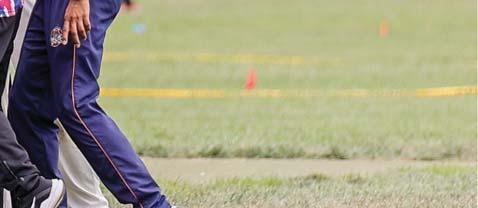








A bustling Sunday cricket league in Clermont County offers intense competition and a taste of home for Indian immigrants and their friends.

























the bowler sprints down the pitch before releasing the ball with a backward 360-degree arm motion resembling a medieval trebuchet heaving a giant boulder against a castle wall. The crouching batter holds his flat-faced weapon somewhere between his knees and the ground, looking like a hockey goaltender defending his net.
The bowler’s pitch hits maybe 10 feet in front of the hitter and skids sharply toward the batter and three vertical sticks behind him. The hitter swings, and the ball careens foul. The catcher dives to his right, snaring the ball in his bare hand for a catch Tyler Stephenson would appreciate. His teammates— the other 10 men in the field—break ranks, erupting in joy as they mob their catcher, celebrating one of the 15 “overs” they’ll need to win the match.
Confused? This is cricket, arguably the second most-played sport on the planet after soccer. It’s almost a religious experience in Pakistan, Sri Lanka, Australia, England, and India. And maybe in Clermont County’s Miami Meadows Park on this Sunday afternoon.
Cricket originated in southeast England as far back as the late 1500s and was invented, historians believe, by children who played on sheep-grazing fields using a lump of matted wool as a ball and a farm tool as a bat. It took adults a few decades to pick up the sport, but they then exported it across the expanding British Empire. Cricket caught on in the West Indies, the Asian subcontinent, Australia, New Zealand, and South Africa; despite being introduced to the American Colonies, the sport never became a national obsession in the U.S.
Cricket was popular in Cincinnati in the
mid-1800s, brought here by English immigrants, but “town ball”—what we now know as baseball—would take over cricket grounds and the public’s fancy after the Civil War. George and Harry Wright first came to Cincinnati as cricket players before forming the Cincinnati Red Stockings in 1869.
“This is a great place to play,” says Maulik (Max) Patel, unofficial commissioner of the Miami Township Cricket Club, as he surveys the 20-acre field on a cloudless afternoon. There are shouts from the far end near a tree line as a team from Dayton scores a run. On another field, two players are disputing the call from an umpire who, just like in baseball, gives no quarter. “We can run four matches at the same time and, as you can see, there are a lot of people from all over the area who want to play,” Patel says.
There are 27 teams in this league with up to 15 players on each team, proving his point. The rainbow of brightly colored uniforms on the field represents teams from Columbus, Louisville, Dayton, Northern Kentucky, and other locales around the tri-state. The Cincinnati Premier League is dominated by players of Indian heritage, many of whom are related to one another. On this summer afternoon, talk is about the U.S. cricket team, which had just stunned perennial powerhouse Pakistan in the group stage of the T20 World Cricket Championships. Patel hopes the national team’s success might give the game a renewed spark in the U.S.
It reminds him of how cricket took recent root in the Cincinnati area. In 2011, Patel recalls, the Indian community here was “full of excitement and patriotism” when India won the World Cup (as they did this year).“Everyone wanted to play,” he says, laughing. The league, at the time, had 50 or so participants THE COMMISH LEFT






and had been playing its matches for several years at Sharon Woods. But those fields weren’t up to cricket standards, and there was no way the space could accommodate what was likely to be an explosion of interest the following season.
“I took my kids to Miami Meadows and saw this,” says Patel, gesturing at the expansive field and then laughing as I move quickly out of the way of a solidly hit fly ball. He knew right away that this could be home. The plot of land was devoid of trees and had once been used as a polo field. It was near the front entrance to the park off Ohio Route 131 and, for the most part, had served only as an overflow parking lot for special events.
Patel is an ideas person with the personality, organizational skills, and energy to make things happen. Armed with a winning smile and a plan, he approached Miami Township Trustee Mary Wolff with a proposal for a publicprivate partnership.
Wolff was intrigued, seeing the opportunity for turning a troublesome piece of parkland into something both usable and unique. “We were grateful for the donation of the land,” she recalled on a Miami Township video, noting the acreage was a former wetland with challenging drainage issues “but, you know, sometimes donated land isn’t the best land.”
The township, Wolff said, appreciated the hard work of the cricket club volunteers to make the field playable and enhance the park’s usefulness.
Hard work and money. Patel says the principal leaders of the cricket club—about 50 or so members—have invested more than $150,000 of their own money “and countless hours” over the last decade or so adding and raking topsoil to eliminate ruts and level the fields. The township budgeted funds to extend a gravel parking lot, aerate, and overseed. The township mows the fields to
the same length as the rest of the park.
“They’ve done the majority of the work either themselves or contracting for it,” says Steve Kelly, the township’s administrator. “The water table here is very high, so it’s a lot of work, but the club members work even harder. This is a great partnership.”
THERE’S ANOTHER SUDDEN shout from the field as a ball that, in baseball, would be foul is launched into what we Yanks would call right field. In cricket, there’s no such thing as a foul—the game is played on a circular space with the batter and pitcher (called a bowler) facing off in the center.
But wait: The batter isn’t the only man running as the fielder scrambles to retrieve the ball. There are actually two runners (and batters) on the field, and they run toward each other down a 22-yard runway (called the pitch) to each other’s ends. If they make it to the opposite end of the runway before the fielder “puts down a wicket,” they score a run. If not, the runner nearest a downed wicket is out or, as it’s said here, “dismissed.”
A wicket? These are three stumps pounded into the ground in between the batter and the catcher on each end of the runway. The bowler will try to knock down those wickets to cause an out, which is why sometimes the batter looks like a hockey goalie fending away the pitches.
On the other hand, the batter isn’t always playing defense. If he’s quick enough and strong enough, he can belt one past a scattering of orange flags that line the radius of the field, which is a “boundary hit” worth an automatic six runs. Just like Ken Griffey Jr. used to do, the batter can watch his blast with admiration. It’s worth six runs, and he doesn’t even have to run.





























Slice Night has become a tradition we look forward to every year. Not only do we enjoy the festivities of the evening, but it is truly a joy to see our community come together in support of the University of Cincinnati Cancer Center through this fantastic event.
Your support of Slice Night helps us realize our mission to drive cancer discoveries, bring promising research to our patients, and, ultimately, raise the level of cancer care throughout our region.
Funds from Slice Night continue to make state-of-the art, multidisciplinary care accessible to our patients and allow us to invest in cutting-edge cancer screening and lab technology, educational programs, and creating more comfortable and supportive healing spaces.
We look forward to celebrating the 11th annual Slice Night with you. It is sure to be a great night and we are most thankful for all of you being part of our team in fighting this disease.






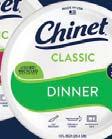












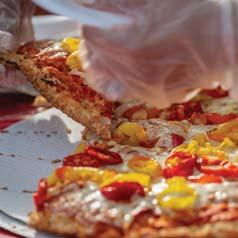



» General admission tickets are $20 at the gate and include all the pizza you can eat. Children 10 and under are $10.
» VIP tickets are $75 and include a parking pass, open bar, and access to the VIP tent featuring seating, a private bar, and pizza sampling.
» All proceeds benefit the UC Cancer Center.
» Over $350,000 has been raised in 10 years.
» Parking for Yeatman’s Cove is near the intersection of East Pete Rose Way and Eggleston Avenue. After parking, follow directional signage.
» 10+ participating pizzerias and pizza trucks.
» Cocktails, beer, wine, soda, and water will be available for purchase.
» Music provided by Q102.

ick completed treatment for acute leukemia and is now participating in a clinical trial to reduce his chances of the cancer recurring.
Born and raised in Bellevue, Kentucky, Rick currently lives in Newport.
Just 14 months after having open heart surgery, Rick received a late-night call from his doctor that he had acute leukemia and needed to go directly to the ER.
When he got the diagnosis in 2022, his life was normal. Except that he could not kick the fatigue he was feeling over the summer. When it took him 4 hours to mow the lawn—a task that usually took him 15 minutes—he called his doctor. “The rest is history. The University of Cancer Center saved my life.”
After chemotherapy, he had a stem cell transplant from a donor in Germany. The donor’s stem cells were collected and flown to Cincin- CONTINUED ON P. 62


nati, where Rick received them later that same week.
He credits his care team with his recovery: “I got to know the medical team and every single one of them became my friends. They’re very dedicated to their work and to their patients. And you can tell that they’re not just doing a job. They’re saving lives.”
Now Rick is helping to save lives too, as a participant in a clinical trial.
“One of the biggest reasons outside of the medical team here that I’m standing and still breathing is because of trials that were done 10, 20, 30 years ago. Trials are well worth it, not just for you but for the future too. Someone’s who is scared about trials, I’m proof it’s not scary. It could potentially save your life. It’s saving mine.”
Inspired by Rick and many other patients and their families, the new Blood Cancer Healing Center is the
most comprehensive blood cancer center in the nation, right here in Cincinnati. This state-of-the-art facility offers all care under one roof, including outpatient and inpatient services, whole-person wellness support through survivorship and integrative medicine, spiritual care, and better outcomes made possible by a dedicated clinical trials unit.
“If I could describe the Blood Cancer Healing Center in one word, it would be comfort.” Rick looks forward to how much more convenient the Blood Cancer Healing Center will make his care experience. Beyond onsite parking and having everything under one roof, he is excited to see everyone from his medical team, which he is less likely to do when they’re across multiple buildings.
Discover more at bchc.uchealth.com




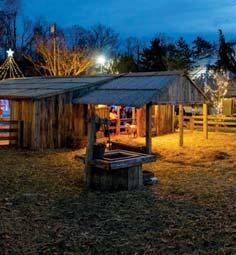
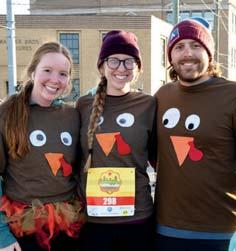

We consider Cincinnati the best place to live, work and celebrate life. Partners like Barrett Cancer Center at UC share our belief that the community prospers when its individuals and businesses succeed. That is why we support those playing critical roles in preserving Cincinnati traditions, enriching cultural experiences and helping the community thrive. westernsouthern.com

Open House: Sunday, October 20, 2024, 2–4 p.m.
Bethany School is a warm and diverse community that has served Ohio families for 125 years. We believe in the joy of learning. Our small class sizes and curriculum spark curiosity, encourage play, and make discovery an exciting journey. Our graduates continue to experience academic success in Cincinnati’s premier high schools.
ing an eco-friendly learning space where your child can grow and create wonderful memories. Choose Bethany School for your child’s enriching educational journey.
“The small class sizes & caring faculty created a positive environment for my kids and the focus on academics, spiritual/character development, and diversity helped them grow into the amazing people they were created to be.” - Bethany Parent
Bethany School’s students experience a vibrant array of activities including and community service. Our beautiful, na-


771-7462
Open House: Sunday, October 13, 2024, 1–4 p.m.
Bishop Fenwick High School is a Catholic, co-educational high school conveniently located on State Route 122 just minutes from I-75 and State Route 741 on 66 beautiful acres. The Fenwick experience—challenging classes, diverse activities, competitive sports, and creative arts—prepares students for future success.
Fenwick’s rigorous college prep curriculum offers a variety of courses to best meet the needs of all students. These courses include AP and CCP courses, Engineering and IT programs, and a wide va-
riety of noteworthy electives. Preparation for college and the world beyond is also demonstrated through Fenwick’s unique block scheduling and innovative Flock Block program.
Fenwick encourages all students to -
thing they enjoy, including athletics, arts, service, and STEM. Fenwick students are ready to boldly live their calling, as they go forth to love God and serve him present in others. Come experience Fenwick for yourself—we’re much closer than you think!


THE STATS YEAR FOUNDED: 1952 GRADES SERVED: 9–12 CURRENTLY ENROLLED: 437 STUDENT/FACULTY RATIO: 13:1 GRADUATION RATE: 100% UNIFORMS REQUIRED? Yes TUITION: $12,500 TOP AWARDS/RECOGNITIONS:
4822 State Route 122, Franklin, OH 45005 • (513) 423-0723 • www.fenwickfalcons.org


Tours: By appointment, contact RSVP@cmhschool.com
Open House: Sunday, January 19, 2025, 1–4 p.m.
Nestled on more than seven acres just outside historic Loveland, Children’s Meeting House seeks to foster the development of the whole child by implementing the philosophy, practices, and curriculum of Dr. Maria Montessori. Children are empowered to learn and develop at a pace inspired by their own instinctive love of discovery. From preschool through eighth grade, students are guided, challenged, and prepared
for their futures using authentic Montessori lessons and materials. Enriched by abundant natural woodlands and working gardens, CMH fosters a high level of academic success within an outdoor setting few schools in Cincinnati can match.
Experience Children’s Meeting House -
ilies—and our students—are passionate about our school. Come see where learning happens, naturally.
THE STATS YEAR FOUNDED: 1972 GRADES SERVED: Preschool–grade 8 CURRENT ENROLLMENT: 190 STUDENT/FACULTY RATIO: 12:1 UNIFORMS REQUIRED ? No TUITION: $8,750-$14,000 TOP AWARDS/RECOGNITIONS: Member of the American Montessori Society and the Cincinnati Montessori Society. • Voted Best Preschool by the readers of Cincinnati Family Magazine • Voted Hulafrog’s Most Loved K-8 Private School •
927 O’Bannonville Rd., Loveland, OH 45140 • (513) 683-4757 • www.cmhschool.com


Personalized appointments available Monday through Friday. Learn more at www.countryday.net
We ensure families that their children will be known, nurtured, and inspired. We provide students an exemplary, characterdriven, and innovative academic experience that will guide them to be the future leaders of the next generation.
We are one community united to help grow students, ages 18 months to 18 years. We connect students both academ-
ically and personally, whether in the classroom or outside on our 60-acre campus.
the next phase of their lives with purpose
Be a scholar. Be an athlete. Be an artist. Be an inventor. Be a leader. Country Day is The Place To Be.
THE STATS YEAR FOUNDED: 1926 GRADES SERVED: Early childhood (18 months)–grade 12 CURRENT ENROLLMENT: 865 STUDENT/FACULTY RATIO: 9:1 GRADUATION RATE: 100% UNIFORMS REQUIRED? Yes, K–grade 4; dress code grades 5–12 TUITION: $8,890–$31,650 TOP AWARDS/RECOGNITIONS: #1 Best Private High School, #1 Best K-12 School, #1 Best High School for STEM by Niche for 2024 • #1 Cincinnati area high school for sending students to Harvard, Princeton, and MIT (PolarisList) • $6.1 million awarded in grants and scholarships to 58 members of the class of 2024 • Lemelson-MIT InvenTeam grant winner • “Platinum with Access” 2023 AP School Honor Roll by College Board • National Merit Recipients, Scholars, and Scholarship winners • • Students matriculate to top colleges nationally and internationally • $6.5 million awarded in need– and merit–based assistance to students in kindergarden through grade 12.
6905 Given Rd., Cincinnati, OH 45243 • (513) 979-0220 • www.countryday.net
Open House: November 9, 2024, 10 a.m.–1 p.m. In-person tours and shadow visits are also available. Learn more at chca-oh.org/visit-us.
Every student is uniquely created with God-given gifts. At CHCA, our world-class, Christ-centered focus offers more oppor-
pursue their passions so they can make an impact wherever they go. Four campuses spanning northern and downtown Cincinnati challenge learners to seek excellence
in all things: From preschool to senior year, students experience high levels of engagement through innovative programming, hands-on learning, and unique academic environments that nurture hearts and challenge minds. By approaching education holistically, we graduate young adults ready to be a beacon in our city and world.


THE STATS YEAR FOUNDED: 1989 GRADES SERVED: PK2–Grade 12 CURRENT ENROLLMENT: 1,315 GRADUATION RATE: 100% UNIFORMS REQUIRED? Yes, through Grade 6 TUITION: $4,150–$21,500 TOP AWARDS/RECOGNITIONS:
Ranked No. 2 Best Christian High School in the state of Ohio by Niche. • Six students named Finalists or Commended Students by National Merit Scholarship Corporation. • State and conference champions across multiple sports. • Only school in the city offering an Entrepreneurship & Sustainability program with student-run businesses, multiple learning gardens, a 4,000-square-foot greenhouse, and a nationally recognized teaching kitchen.
PK2–Gr 3: Edyth B. Lindner Campus, 11312 Snider Rd., Cincinnati, OH 45249; Gr 4–8: Founders’ Campus, 11300 Snider Rd., Cincinnati, OH 45249; Gr 9–12: Martha S. Lindner Campus, 11525 Snider Rd., Cincinnati, OH 45249; Downtown Cincinnati PK3–Gr 6: Otto Armleder Memorial Education Campus, 140 W. Ninth St., Cincinnati, OH 45202 • (513) 247-0900 • chca-oh.org
Open Houses: November 2, 2024, and February 1, 2025, 10 a.m.–1 p.m. Personal tours available by appointment; e-mail enrollment@cincinnatiwaldorfschool.org
There is something different about the Cincinnati Waldorf School. You see it in a high school student who looks you in the self-knowledge. You feel it when a grade school student steps to the chalkboard to answer a math question, composed because she has the full and caring support of the teacher and her classmates. You hear it in the joyful laughter of a kindergartener who is helping a friend climb a tree.
We offer an education that is creative, rigorous, and based on human connection. Our highly-trained faculty teach the
right things at the right time and discover the unique spark in each individual—the things that inspire a love of learning, goodness, and the world. Purposeful play in our early childhood classrooms builds the foundation for the social, emotional, and intellectual capacities to come. Together, students and teachers explore the intersection of mathematics, sciences, humanities, art, and each student’s place in the social and natural world.
Come for a visit or drop a line. When you dig deeper, you’ll discover what makes our school extraordinary.


THE STATS YEAR FOUNDED: 1973 GRADES SERVED: Preschool–Grade 12 CURRENT ENROLLMENT: 275 STUDENT/FACULTY RATIO: 10:1 GRADUATION RATE: 100% UNIFORMS REQUIRED? No TUITION: Varies by program TOP AWARDS/RECOGNITIONS: Voted “Best Private School” in 2024, 2023, 2021, and 2020 by CityBeat readers Preschool–Gr 12: 6743 Chestnut St., Cincinnati, OH 45227 • (513) 541-0220 • www.cincinnatiwaldorfschool.org


Great Oaks is a public career-technical school district serving 36 school districts in southwest Ohio.
Each year, thousands of area high school students prepare for a career at a Great Oaks Career Campus—Diamond Oaks in Dent, Laurel Oaks in Wilmington, Live Oaks in Milford, or Scarlet Oaks in Sharonville.
care to high-tech manufacturing to cy-
bersecurity to construction trades, culinary arts, agriculture, cosmetology, and more. Great Oaks offers over 30 different programs on campus as well as satellite school districts.
Career training, ESOL, HSE, and personal enrichment programs are also available for adults.
Partnerships with local business, education, and community agencies help shape the programs offered.
THE STATS YEAR FOUNDED: 1970 GRADES SERVED: 11–12 and adults on campus; middle and high school satellite programs in partner schools CURRENT ENROLLMENT: Around 3,000 students on campus; over 18,000 in 100+ satellite programs throughout 36 school districts STUDENT-FACULTY RATIO: N/A UNIFORMS REQUIRED? Yes TUITION: Tuition is free for high school students; adult program tuition varies TOP AWARDS/RECOGNITIONS: Five Candidates • • 110 Great Oaks Dr., Cincinnati, OH 45241 • (513) 771-8840 • www.greatoaks.com


Open House: Sunday, November 3, 2024, 1–4 p.m.
At Archbishop Moeller High School, we know young men learn differently. Our educational philosophy of REALearning— Relational. Experiential. Authentic.—tailors teaching to how young men learn best. We believe in cultivating an environment that recognizes the educational needs of each young man. Our nationally-recognized House System and signature academic programs—Chaminade global scholars, molecular biology research, student run business—enrich students’ understanding
of the interconnectedness of the world and -
dent, adaptive change makers. This fall, we are excited to launch The Burns Innovation Hub to expand our high-impact, immersive learning opportunities. It is why we are the leaders in educating young men.
THE STATS YEAR FOUNDED: 1960 GRADES SERVED: 9–12 CURRENT ENROLLMENT: 926 STUDENT/ FACULTY RATIO: 13:1 GRADUATION RATE: 100% UNIFORMS REQUIRED? No TUITION: TOP AWARDS/RECOGNITIONS: • • Address 9001 Montgomery Rd., Cincinnati, OH 45242 • (513) 791-1680 • https://moeller.org
Open House: Sunday, October 27, 2024, 1–4 p.m.
Mount Notre Dame High School is the premier Catholic high school for young women in Cincinnati. Experience our dedication to academic excellence, unwavering Catholic values, a personalized learning experience, accomplished faculty, and our resolute mission of nurturing and empowering young women. We embrace the gift of diversity in our students’ academic levels, as well as ethnic, religious, and socioeconomic backgrounds. MND is conveniently located off Ronald Regan Highway in Reading, Ohio, between I-71 and I-75. Our students come from all over
Greater Cincinnati, representing over 70 zip codes. Our campus features a stateof-the-art Performing Arts Center; a contemporary Tech Center that supports our cutting-edge technology; newly remodeled laboratory classrooms; ample safe, off-street parking for students; and one of the top outdoor athletic complexes in the region. Be a part of our bold future where young women are empowered to recognize and develop their unique capabilities to learn, live, lead, and serve. At MND, we make INCREDIBLE happen!


THE STATS YEAR FOUNDED: 1860 GRADES SERVED: 9–12 CURRENT ENROLLMENT: 664 STUDENT/ FACULTY RATIO: 10:1 GRADUATION RATE: 100% UNIFORMS REQUIRED? Yes TUITION: $14,905 TOP AWARDS/RECOGNITIONS: 4 National Merit Commended Students • 69% of the class of 2024 earned college credit during their four years at MND 711 E. Columbia Ave., Cincinnati, OH 45212 • (513) 821-3044 • www.mndhs.org
Open House: Sunday, November 3, 2024, 1–4 p.m.
“I Belong.” That’s how students feel at Purcell Marian, the only local, private, Catholic International Baccalaureate (IB) World School. IB offers students the opportunity to take a range of classes characterized by IB’s unique focus on developing students as lifelong learners and a strong emphasis on writing and research.
IB classes are lively, challenging, and student-centered, a place for students to pursue their own interests and take pride in hard work. At PM, IB is also inclusive, of-
fering a rigorous, holistic education to all Cavaliers. Starting with the class of 2026, all PM graduates will graduate having taken at least one IB class, joining a global community of IB graduates.
Rooted in the traditions of the Marianists, we foster faith, hard work, and service to others. Learn about the passionate students who have said “I Belong at an IB World School” and schedule a visit at purcellmarian.org/ibelong.

THE STATS YEAR FOUNDED: 1928 GRADES SERVED: 9–12 CURRENT ENROLLMENT: 382 STUDENT/ FACULTY RATIO: 8:1 GRADUATION RATE: 100% UNIFORMS REQUIRED? Yes TUITION: $12,000 TOP AWARDS/ RECOGNITIONS:
2935 Hackberry St., Cincinnati, OH 45206 • (513) 751-1230 • www.purcellmarian.org


Open House: Sunday, October 27, 2024, 1–4 p.m. Showcase Night: Thursday, December 5, 2024, 6:30 p.m.
Saint Ursula Academy (SUA) is a top high school choice for girls (9–12) in Greater Cincinnati. SUA is a vibrant college-preparatory community and a leader in girls’ Catholic education since 1910. Founded on the strength of our Catholic faith, we women. Our community honors the power of authentic sisterhood.
Saint Ursula is known for academic excellence, whole-person formation, innova-
tion, welcoming environment, service, and student success with proven results. Our voice, and to give her the courage to sing. Graduates are women of faith, integrity, and courage ready to make a positive impact in the world.
THE STATS YEAR FOUNDED: 1910 GRADES SERVED: Girls 9–12 CURRENT ENROLLMENT: 625 GRADUATION RATE: 100% UNIFORMS REQUIRED? Yes TUITION: $16,350 TOP AWARDS/RECOGNITIONS: Best All-Girls Catholic School in Cincinnati by Niche.com • CLIMB award recipient from Business Courier • Ohio Success Awards in 2021, 2022, 2023, and 2024.
1339 E. McMillan St., Cincinnati, OH 45206 • (513) 961-3410 • www.saintursula.org


Open House: Thursday, November 21, 2024, 4:30–8:30 p.m.
In the tradition of St. Elizabeth Ann Seton, and founded by the Sisters of Charity of Cincinnati, Seton High School develops a diverse population of young women for a life of faith, service, and leadership and engages them in achieving academic excellence in a college-preparatory environment.
Our strong Catholic faith is intertwined in every aspect of the school. The young women at Seton High School are challenged to be critical thinkers in an individualized, supportive, and experiential learning
environment. Seton offers an Honors Program, a variety of both AP and dual college credit courses, and an inclusive and collaborative support services program. Our students are leaders in the classroom, on a sports field, in extracurricular clubs and activities, on stage, and in their communities. The mission and values of Seton High School, strong academics, and a true sense of spirit and sisterhood are why thousands of young women have chosen to become a Seton Saint.
THE STATS YEAR FOUNDED: 1927 GRADES SERVED: 9-12 CURRENT ENROLLMENT: 742 STUDENT/ FACULTY RATIO: 18:1 TUITION: $13,000 (plus $1,400 in fees) TOP AWARDS/RECOGNITIONS: 99% of graduates go on to pursue a four-year postsecondary education with 80% of students receiving college scholarships. • Students have the exclusive opportunities to take part in the Seton-TriHealth Summer Internship and also take a 3-credit hour MSJU Nursing Course.
• • all-girls school in the city to embrace the House System as its form of student government. 3901 Glenway Ave., Cincinnati, OH 45205 • (513) 471-2600 • www.setoncincinnati.org
Walk & Talk Group Tours: Pre-K for 2-year-olds through kindergarten: Offered Sept. 17-Nov. 7 on most Tuesdays, Wednesdays, and Thursdays • Grades 1-5: Oct. 8 and 9 • Grades 6-12: Sept. 25, Oct. 17, Nov. 14, and Jan. 16 Questions & Conversations Virtual Events: Pre-K through Grade 5: Oct. 23 • Grades 6-12: Oct. 22 and Jan. 22
Seven Hills is a top ranked Cincinnati private school for students age 2 through grade 12. Our students are empowered to follow what inspires them, supported by teachers who know and celebrate them, and surrounded by a community who wel-
comes them as they are. Exploration and discovery are a part of everyday life. Find out more about The Seven Hills School by contacting our Admission Team at (513) 728-2400 or www.7hills.org!


THE STATS YEAR FOUNDED: 1906 GRADES SERVED: Pre-K (2-year-olds) through Grade 12 CURRENT ENROLLMENT: 1,028 STUDENT/FACULTY RATIO: 9:1 GRADUATION RATE: 100% UNIFORMS REQUIRED? Yes, Doherty Campus (Grades 1–5 wear uniforms); no, Hillsdale Campus (2-year-olds through Grade 12) TUITION: $8,910–$33,200 TOP AWARDS/RECOGNITIONS: Ranked No. 1 Private College Prep High School in Greater Cincinnati • 24% of the Class of 2024 have been recognized by the National Merit Scholarship Program • Ranked No. 1 Private K–12 School in Greater Cincinnati four consecutive years: 2020, 2021, 2022, and 2023 • Accreditations include National Association of Independent Schools (NAIS), Independent Schools Association of the Central States (ISACS), Ohio Association of Independent Schools (OAIS), and the State of Ohio.
Hillsdale Campus, 5400 Red Bank Rd., Cincinnati, OH 45227 • Doherty Campus, 2726 Johnstone Place, Cincinnati, OH 45206 • (513) 728-2400 • www.7hills.org
Contact us today to arrange a personal tour or register for an open house.
At Springer, students with ADHD, dyslexia and executive function challenges learn skills and strategies to meet and exceed their goals. Students tackle rigorous academics in our supportive, specialized environment staffed by educators who specialize in learning differences.
Students in Lower School (grades 1-5), Middle School (grades 6–8), and High School learn in small classes and participate in co-curriculars and extracurriculars
in the arts, sciences, and athletics. In our community, student trajectories change as our young people build an academic and social foundation. Building on strengths and tackling challenges with the right tools, students establish a roadmap to a successful adulthood. -
dent, empathetic leaders prepared for college, career, and life beyond.


THE STATS YEAR FOUNDED: 1971 GRADES SERVED: 1–10 CURRENT ENROLLMENT: about 225
STUDENT/FACULTY RATIO: 6:1 GRADUATION RATE: N/A UNIFORMS REQUIRED? No TUITION: 56% of families
available for qualifying students. Speak with admissions to learn more. TOP AWARDS/RECOGNITIONS: Accredited by Independent Schools Association of the Central States, Springer is a Jon Peterson Scholarship provider. Educators are 2121 Madison Rd., Cincinnati, OH 45208 • (513) 871-6080 • www.springer-LD.org























Five area health systems share innovative treatments and take us inside their new facilities.
Fresh Designs in New Spaces
While stepping in to fill the void of community hospitals along Cincinnati’s northern I-71 corridor, Mercy Health saw an opportunity to do things differently.
cess, and it really made a difference,” says Jason Asic, president of Mercy Health’s King’s Mill Hospital. “I think what one sees when they come onto this campus is that there’s an intentionality to every aspect.”
tients, but it’s the details that set the facility apart. Opaque glass dividers partition rooms instead of curtains, a simple but critical advance in sanitation in the wake of COVID-19. The floorplan eases navigation for patients
“ Planning for growth and flexibility were important pillars for us.
“From the very onset, we pulled in our clinical, technical, and support personnel to be part of that design pro-
All-new, top-of-its-class equipment allows providers to provide optimal care for both in-patients and out-pa-
and visitors during times of stress and confusion, and sound masking throughout the building improves


privacy and calm.
“Planning for growth and flexibility were a couple of very important pillars for us, so we have expansion areas embedded throughout campus,” Asic says.
The new campus addresses immediate needs in the community while accommodating further development. Currently, the campus supports a 178,000-square-foot hospital and a two-story medical office building, but the space is designed with an eye for the future.
Beacon Orthopaedics & Sports Medicine aims to change care options through comprehensive access at its new clinic in Mason High School, the first of its kind in the region.
“We’re centered on going into communities and being part of that community,” says Andrew Razzano, D.O., an orthopaedic surgeon and Mason’s medical director. “Mason High School is the largest high school in Ohio, and
the office we have sits on top of the training and locker rooms. If there’s an injury on the field, they’re walking up here right away. They’re getting X-rays right away. They’re getting the treatment they need, the physical therapy they need, and they’re coordinating with trainers on the high school level. It’s very unique. Instead of someone going to the emergency room, being referred to someone else, then going to outside physical therapy, everything is so streamlined.”
Although the clinic is literally positioned to serve the high school’s student athletes, it also welcomes patients of any age. Many of the advantages designed around students benefit others. Beacon’s values of quality, access, and care define the site, and sports medicine is only the beginning. Specialists offer interventional care, including pain management. The office also provides full physical therapy. This spectrum of options simplifies the patient experience and provides a smooth transition between different areas of expertise for


related or evolving issues.
“When someone comes in, they know they’re going to see a sub-specialist that is there for their need, whether that’s shoulder, knee, elbow, foot and ankle, injections, or sports physical therapy,” Razzano says. “When you walk into this facility, you know you’re in the right spot.”
Radiology Associates of Northern Kentucky offers more than the standard range of medical imaging services. Because it is technique- rather than condition-focused, the practice provides image-guided, minimally invasive procedures addressing conditions ranging from cancer to back pain.
“The one thing we do that is unique to women’s health is uterine fibroid embolization,” Josh Dorsey, CEO of Radiology Associates of Northern Kentucky says. “Not many women are aware of it, but it’s an option. The reason our technique is not well known is because it’s not performed by OB/ GYNs.”
Uterine fibroids are common, non-cancerous growths in the uterus that can cause pain, severe bleeding, and even infertility. According to a study from the Agency for Healthcare






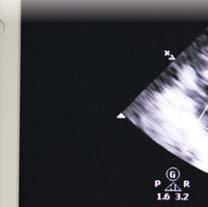


study from the Agency for Healthcare Research and Quality, approximately 25 million people in the U.S. currently have uterine fibroids, and of those roughly 15 million will experience associated health concerns. The most










throughout the process.
Not only is the procedure non-invasive, but it also preserves the patient’s fertility, unlike some other treatments. Although it isn’t suited to every patient’s unique situation, it offers relief
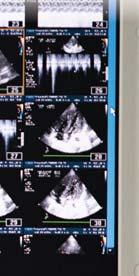


cial TriClip system, there was only one treatment for tricuspid valve regurgitation—surgery. Since the condition is most common in seniors, who are poor candidates for such high-risk surgery, doctors had few options to offer.
“ This is super exciting for us. Now we have options that do not involve surgery.
common treatment includes surgical procedures, such as hysterectomies. Embolization, however, targets the blood flow to a fibroid, shrinking it with live X-ray guidance. A catheter is inserted through an artery in the groin, and a blocking agent is added to halt blood flow to the problem area. Imaging not only helps guide the catheter but also shows changes in blood flow
with less discomfort and a shorter recovery time for many.
Fixing the Forgotten Valve
Tricuspid valve regurgitation, also called a leaky valve, leads to fatigue and shortness of breath. Apart from harming quality of life, it’s potentially fatal. Until The Christ Hospital Health Network implanted the first commer-
The new TriClip transcatheter edgeto-edge replacement (TEER) system provides a less invasive route suited to a broader range of patients suffering from leaky tricuspid valves. Entering through the femoral vein, doctors use a catheter to reach the malfunctioning valve, with the TriClip system to pinning some of the valve’s leaflets together, reducing backflow.
















Dr. Razzano





























Get comprehensive orthopedic care right in your community at Mason High School. As the region’s only on-campus sports medicine and physical therapy facility, Beacon is on hand to deliver the area’s best integrated sports medicine care, strength and conditioning training, and athletic trainer services — for students and residents alike.
Count on Beacon’s Mason Stadium Complex location’s expert team of physicians to keep you doing what you love. Same-day, next-day, and urgent care walk-in appointments are available at beaconortho.com or by calling 513-354-3700.
EXPERT ORTHOPEDIC CARE CLOSE WHEN YOU NEED IT






















Over the past five years, Christ has been working on a clinical trial of the new technology, and now it’s received FDA approval.
“This is super exciting for us,” Santiago Garcia, M.D., director of the network’s structural heart program, says. “For years it was called the forgotten valve because it didn’t have any therapy to address regurgitation. Now we have options for patients that do not involve surgery.”
The rollout in the U.S. will likely be slow, according to Garcia. The team is still waiting for Medicare and regulatory approval to increase the technology’s accessibility. Only healthcare systems involved in the initial medical trials have the training to perform it, and the procedure relies heavily on imaging technology. That means, for the foreseeable future, Cincinnati will continue to lead this fresh wave of innovation.
“Why would anybody want to do an awake spine surgery?” asks Owoicho

dure also makes for a faster recovery without common postoperative side effects. The first patient to undergo the procedure at UC Health chose awake
the muscle,” Dr. Adogwa says. Small incisions and tubular retractors give doctors access to most of the spine without the blood loss and tissue dis-
Awake spine surgery is part of UC Health’s wider personalized medicine program.
Adogwa, M.D., associate professor in the department of neurological surgery at the University of Cincinnati’s College of Medicine. “What we recognize now is general anesthesia can lead to postoperative cognitive dysfunction. By not exposing these patients to general anesthesia, especially those over the age of 65, you substantially minimize the risk of any sort of cognitive dementia down the road.”
Without general anesthesia, patients face fewer overall risks. The proce-
spinal surgery to avoid extreme nausea, and she left the hospital only hours after her procedure.
There is no intubation, and patients are encouraged to relax with their favorite tunes during the operation. They rest face-down on the operating table and listen to music through headphones for two hours after receiving a general anesthetic, such as a spinal tap.
“We use minimally invasive, muscle-sparing techniques, so we don’t cut
ruption of traditional methods. New laser and endoscopic techniques are even less invasive.
The awake spine surgery is part of UC Health’s wider personalized medicine program. A new genotype testing approach to prescription pain medications boosts the awake spine surgery’s success with tailored approaches to pain management based on individual biology rather than trial and error. It’s all part of a new perspective on wellness and recovery.












At The Christ Hospital Health Network, we’re doing everything it takes to bring tomorrow’s cardiac care to our patients, today.






NEW TREATMENTS:
1st in World = 19
1st in US = 41
1st in Ohio = 62
1st in City = 98





Lockland (until the plant became a part of the village of Evendale, established in 1952). “They fooled them and moved them to Lincoln Heights.”
gestion that it become annexed by the city of Cincinnati.
“They” refers to Enterprise Building and Loan, a now-shuttered Lockland bank that for a long time was the only one giving mortgages to Blacks—if, and only if, they moved to the newly established neighborhood of Lincoln Heights just north of Lockland. Students from there attended Anthony Wayne High School in Lockland, which was erected to keep them separate from whites who attended Lockland High School. West Lockland remains predominantly Black, although the two communities mixed together more as time went on.
“I grew up in a Black middle-class family in Lockland. It was stable because everyone had work,” says Neil Anderson, 63, a licensed massage therapist who now lives in Northside. “I had friends on both sides of town.” Lockland’s downturn “hit the African American community especially hard,”
“PEPPER CONSTRUCTION HAS BEEN A GODSEND,” SAYS LOCKLAND MAYOR
Lockland, and it looks as if a bomb went off. On your immediate right is a long-dead gas station. Entire blocks of the business district are shuttered. A few offices seem to be in use, but for what? Signs don’t indicate. And when they do—say, the Lockland Bar and Grill—it’s just a facade. The bar no longer offers, as it claims on Facebook, “the most fun you can have outside the bedroom.” The few public-facing establishments are gaudy with blinking lights, chaotic window displays, and sun-faded signs. Single-family houses have been chopped up into apartments, with satellite dishes sprouting like mushrooms.
OF THE CHICAGO FIRM
RESTORED THE STEARNS & FOSTER OFFICE BUILDING.
Soon you’re approaching the historic eastern side of Lockland. It looks better, but empty storefronts still make for a gaptoothed landscape. Cross the tracks again, at the arched white Benson Street Bridge, and you’re in Reading, a community that’s doing a better job of capitalizing on its historic past. Though still solidly working class, Reading, once a hub of garment manufacturing, has successfully branded its Bridal District. Dress shops and cafés cater to bands of roving women in tiaras and tulle veils.
Lockland continues to reckon with the dark stain of racism. Factories employed Black workers, but banks wouldn’t give them loans to buy houses. “Most Black folks came from downtown and moved to the east side of the canal,” recalls Virgil Lackey, a towering 85-year-old plumber whose father worked at what was called GE
he remembers. “But that love and that sense of small-town closeness is still very much alive today.”
Consolidation, globalization, and other market forces leeched the factories. “People started leaving in the late 1980s and early ’90s, and it became more of a little town instead of an industrial town,” says Kim Xander, a union carpenter and member of the village council. “All my high school friends’ dads worked at paper factories, and they had to go find new jobs. So it did get quiet around here for a long time.”
A literal death knell sounded in 1981 when a fired worker shot four of his former bosses, killing two of them, at the Diamond International paper plant. The following year, Lockland’s population dipped below 5,000, downgrading the city to “village” status. “Still, I never considered leaving,” says Xander. Small-town pride persists, with Lockland routinely rejecting any sug-
Cheap buildings, especially architectural gems located near the interstate and the city center, as Lockland is, usually entice entrepreneurs and artists. When rent and property prices soar in tonier neighborhoods, new life can take root in depressed ones. Structures get improved, and defunct buildings get repurposed. When the inevitable coffee shop opens, the signs of gentrification are as apparent as the baristas’ tattoos. A new era begins.
That’s not what happened in Lockland, however. (You can’t get a cortado anywhere.) While the fellow blue-collar neighborhoods of Over-the-Rhine, Price Hill, and Walnut Hills started blossoming back to life, Lockland remained fallow. Wilder was a pioneer when he opened his office here. “My friends thought I was insane,” he says.
He was attracted to the community’s “bohemian vibe.” But ambiance alone can’t make up for Lockland’s lack of essentials like a grocery store, pharmacy, restaurant, or library. Certainly, people can seek sustenance in the bordering neighborhoods of Reading, Wyoming, and Hartwell, but even that can be tricky with the village’s transportation issues.
The flight of the factories left Lockland with no corporate tax base or employment “glue” to keep it pumping. Storefronts sat empty or, at best, housed storage.
Then 2023 happened. A post-pandemic sprouting of artistic, commercial, and charitable activity seeded by people like Gawrych, Wilder, and Snapp appeared to usher in critical mass for real, if belated, revitalization. Pepper Construction, a Chicago-based firm, opened its new Ohio HQ in a multimillion-dollar restoration of the long-abandoned Stearns & Foster office building. Ninety employees work in the LEED-certified brick structure. “Pepper has been a godsend,” says Lockland Mayor Mark Mason Sr. Besides the taxes the corporation brings, Pepper’s salvaging of a building that embodies Lockland’s glorious past is akin to a spiritual healing. “My uncle worked in that building for 53 years,” Mason says, “so to see Pepper save it put a smile on my face.”
On the other end of the commercial spectrum is Sugar Shack by the Tracks,
which also opened last year. It builds icecream sundaes, not skyscrapers, but is impactful because it draws hundreds of people into Lockland weekly. Co-owner John Aildasani, tall and tanned with boisterous, big-brother energy, also hosts events, such as fund-raisers for Lockland police. Kibitzing with customers, he’s a cheerleader and unofficial public information officer for Lockland. “Lockland has a lot of character and a lot of potential,” he says, “I’m looking to do other things here.”
Aildasani owns a construction firm and doesn’t need the stand’s meager profits to pay his grocery bills. “It ain’t a huge money-maker,” he admits. He sunk $400,000 into bringing the 1950s-style destination to life, with an adjacent lot that welcomes food trucks. “It’s more about giving back to the community. That’s really why we do it.”
Rounding out the new dynamics are two faith-based organizations. In West Lockland, free lessons in English language and bike repair are given to immigrants from the West African country of Mauritania. (Cincinnati is the largest U.S. magnet for these refugees from violence, and Lockland is where many of them settle.) The Metanoia Center, which runs the classes, and Valley Interfaith Community Resource Center, which distributes food and clothing, help ease the strain on Lockland from this growing population. Without any kind of meaningful dialogue taking place between the struggling community (few speak fluent English) and Lockland officials, the charities are doing the work of making the village more welcoming.
ONE OF THE MAIN REASONS LOCKLAND is different from any other part of town is in the name itself. A big part of the village remains, well, locked.
First, there’s the Lockland Split, that wayward straying east of I-75 northbound lanes from the southbound route encircling most of the occupied homes. “Distinctive but notorious,” is how historian Jake Mecklenborg describes it. “A dependable source of aggravation for anyone in a hurry.”
The split was created in the early 1960s, probably because ongoing expansion of the highway would have forced Stearns & Foster to relocate. Plans to realign the highway have been in the works for over a decade and
may be another decade-plus away from the start of construction.
But it’s the train crossings that are the real reason Lockland has not—and may not ever—take off in any significant way. It isn’t so much that loud freight trains blaze through Lockland’s five crossings more than 50 times a day or that a train can have more than 100 cars to it. The problem is that the trains will stop and sit for an hour, two hours, or more. It is Mayor Mason’s mission to change this. “I told them, You’ve got to leave me two crossings at all times,” he says. “But the railroad industry’s lobbying group is entrenched with the federal government.”
Mason is exasperated. “I have sent videos and still photos of emergency services, fire trucks, police cruisers, and paramedics trying to get to an emergency. I have personally seen children climbing over and under a train to get to school on time.” Taylor minces no words in repeating a common village cry: “It’s going to take somebody getting killed for anything to change.”
I reached out to the Association of American Railroads about these concerns, and I received a fact sheet in response saying, in part, “Railroads work closely with local government partners to manage and mitigate the impact of rail crossings on communities to reduce the number of crossings, improve safety, and ensure efficient operations.”
Anyone conducting business in Lockland must simply put up with the delays. “People who head to Reading for lunch can come back two hours later, having got stuck behind a train,” says Jerry Noble, senior vice president of Pepper Construction. “It’s kind of crazy and a lot of inconvenience. But we aren’t actively involved in that battle.”
Aildasani uses a charm offensive on train conductors. “Sometimes they come in for ice cream,” he says. “I tell them, If you stop short of the road you can have it for free, but if it’s in the middle and no one can pass, it’s twice as much. The conductors say they can’t control it. They can’t pull into the yard [further down] already occupied by another train.”
The situation has improved since the beginning of 2024, Lockland residents agree, though they can’t say why. Whatever the case, it’s not due to any promises from
railroad companies to roll more safely. The stultifying effect of the trains leaves Lockland cut off from the rest of the city and feeling frozen in time. Though a hassle for businesses, the village attracts creative class members who appreciate the Mayberry aesthetics and atmosphere—preserved architecture in a village built on a human scale before cars dominated the landscape. Small businesses, such as Hosanna Revival, makers of specialty Bibles, have been able to make Lockland work as a home base. But are there any other companies the size of Pepper Construction that can withstand the trains’ stranglehold?
The village administration believes so. It wants a mixed-use development called The Locks to rise on the 12.5 acres it owns where the Stearns & Foster factory once stood. They’re open to anything for development, from a shopping district to a residential area to an industrial site. But no more storage buildings. “I could have had 40 warehouses on that site, but that doesn’t produce revenue for the village,” says Mason. “We’re being very picky.”
Longtime observers doubt that anything like a restaurant—a thin-margin operation that would inevitably cost in the six figures to build out—will open anytime soon. And will people want to live in apartments built on a brownfield site? For the time being, progress will have to come in baby steps. “Artists start everything,” says Smith.
The last U.S. Census showed Lockland’s population ticking up for the first time in decades. Gawrych and Smith are putting together a Lockland business association. Snapp has offered Dunn Street Station’s bar space as a repository for Lockland’s historical archives and is hoping Tri-State Trails will route its bikeway network through the historic district.
Snapp gets a dreamy look in his eyes when discussing other possibilities for this odd little town that continues to charm and seduce. Earlier this year he bought a second fixer-upper a stone’s throw from Dunn Street Station. It cost $110,000. “It’s another 9,000 square feet of space needing a gut rehab,” he says. “No electricity, no gas, sitting 10 years empty. I have no idea what we’re doing with it, but I can’t let it fall apart.”




the grass blades.






















The local league’s games typically last up to two and a half hours, but matches in international play can go up to five days. “That wouldn’t work here,” Patel says, laughing. “We all have jobs.” In cricket, a side isn’t retired with three outs. Everyone gets to bat in an innings (it’s always plural in cricket) and does so until he’s dismissed.
Walking the Miami Meadows cricket fields on a Sunday afternoon is a unique linguistic experience. While Hindi is the official language in India, in truth there are more than 100 other major languages spoken on the subcontinent. “We have a lot of them here on the field,” Patel explains, noting the common languages everyone understands on the pitch are English and Hindi.
Patel himself moved to the U.S. in 1998 from Ahmedabad, a city of more than 7 million in western India. He was 8 years old and, like many Indian immigrants who have located here, arrived in Cincinnati to join members of his extended family who had immigrated earlier in the decade.
security when Monday rolls around. About 85 percent of the players, he says, work in IT. Most are highly educated—some in U.S. universities, others from overseas institutions—and are, he acknowledges with a laugh, workaholics.
Patel himself is a self-described entrepreneur with investments in hotels, convenience stores, restaurants, and gas stations. “I am surrounded by that entrepreneurial mindset,” he says of his family. Growing up, he watched as they started the chain of business investments from Ameristops and Holiday Inns to Dunkin’ Donuts and Subways, and now he and his brother run the show. “It’s not the easiest, but it’s the way to get ahead.”
According to the 2020 U.S. census, 2.7 million Indians form the second largest immigrant group in the U.S., trailing only those from Mexico. The growth has been exponential, especially since 2010, when persecution of non-Hindu Indians became more widespread. More than a million Indi-
“PLAYING CRICKET HELPS YOU MAKE GOOD DECISIONS IN LIFE: HOW TO BOWL, WHERE TO PLAY YOUR POSITION, WHEN TO BE AGGRESSIVE,” SAYS AAYUSH PATEL.
Another term unique to cricket is an “over.” That’s a group of six deliveries by the pitcher to the batter. The pitches are typically bounced off the runway and must arrive below the batter’s waist. One of the recent improvements the cricket club added to each of the four Miami Meadow fields was a turfed pitch laid over concrete, allowing for a truer bounce.
“Sometimes the ball can slow down or skid and pick up speed when it hits the turf,” Patel says as he holds a cricket ball—similar a tennis ball, but as hard as a baseball. “When it bounces, you’re putting doubt in the batsman’s head because he doesn’t know how you’ve pitched it.” Like baseball pitchers, cricket bowlers use different speeds and grips to confuse their opponent.
“Winning the coin toss that starts a game can be important,” Patel explains as he hands me a penny. Typically, the team that wins the toss elects to have its opponent bat fi rst so they know, when it’s their turn, what they’ll need to score to win. Indeed, the team that correctly calls “heads” erupts in jubilation when my toss reveals Lincoln’s profi le poking through
ans moved to the U.S. in the teens, and the trend shows no sign of slowing.
That trend is reflected locally. Ohio’s Indian population increased 58 percent from 2010 to 2020, and our corner of the state led the way: Hamilton County up 61 percent, Clermont 48 percent, Butler 79 percent, and Warren 109 percent. The largest local population of Indian immigrants lives in Mason’s 45040 Zip code.
“Many of us came to the United States through another country even though we originated in India,” Patel says of the players on the cricket field. “Some came from Africa, some through Canada or England, but we settled here because Cincinnati has both a great lifestyle and business opportunities at the right price.”
The cricketeers in their colorful uniforms that Sunday afternoon, he notes, may be coding, developing websites, analyzing data trends, or working on network
THAT AMERICAN GRAB-THE-BULL-BYthe-horns attitude translates to Patel’s management of the cricket club. Three years ago, responding to the sport’s growth here, he and the township agreed to establish more cricket fields, making Miami Meadows Park the largest cricket complex in the entire state.
The expansion, Patel says, allows for more teams to play, many of which travel here from out of town to compete in weekend tournaments. Last year, teams from all over the region drove or flew to Cincinnati to play a weekend tournament that was livestreamed through Facebook back to eager fans and family members in India.
Not lost on Miami Township officials is the potential economic impact of what is quickly becoming a cricket tourist stop. “We’ve seen a huge surge of people coming into the township to play and, in some cases, stay for the weekend,”notes Kelly. “We’re working with the county, the chamber of commerce, and [economic development agency] REDI to market this league as a value-added activity.” Local restaurants and hotels, he hopes, will become the immediate beneficiaries of cricket’s growth.
Kelly says companies looking to locate or expand in Clermont County are always asking what amenities their employees can enjoy locally. With Indian-owned Tata Consultancy Services one of Miami Township’s largest employers, cricket is a winner.
Aayush Patel (no relation to Maulik) is only 23, but he’s already captain of one of
the league’s teams. Born in India, as he says, “with a bat and ball in my hands like everyone else,” his family immigrated to Cincinnati six years ago. The transition to American life was a challenge—he calls it “hectic” here—but the opportunity to play the national sport in an organized league just minutes from his Symmes Township home was a godsend.
A junior at the University of Cincinnati, where he’s majoring in information systems, Aayush says cricket is both a stress-reliever and a teacher. “Playing the game helps you make good decisions in life,” he says. “How to bowl, where to play your position, when to be aggressive, how to assess a problem—all good things to learn that will help you.”
As a practical matter, he says, just as American kids make friends playing Little League baseball, he’s made friends from all over the region through the cricket league. It’s helped him adjust quickly to life in America while keeping a connection with traditions back home.
The league’s future looks bright at Miami Meadows. It’s hosting a major tournament involving teams from all over the Midwest, beginning August 17. JC Soni, a Sharonville jeweler and generous funder, recently erected a small equipment shed on site, and the league is now talking with the township about building a multi-sided gazebo that would have sight lines to all the fields. There is room for a fi fth fi eld, but the township first plans to seek a 1-mil property tax levy from voters that, if approved, would create a master plan to determine how best to utilize the park’s remaining acres.
The fields are a swarm of activity as four games play out simultaneously. Orange flags dot the grass to separate the fields, but you need to watch ahead of you and behind you because balls and people are flying everywhere. Maulik Patel, himself an occasional player, takes it all in with an ear-to-ear smile on his face and laughs, reminding me of that first lesson: It’s a game played in the round.
“It’s really a very simple game,” he says. I agree. But maybe it’s more like games, plural: a little bit football, a little bit baseball, a little bit hockey. And a lot of joy.



Join us on December 2nd
The Cincinnati Gives Challenge is a friendly fund-raising competition where local charities compete to raise the most money with the top teams winning cash prizes from Cincinnati Magazine






RECEIVE THE FOLLOWING PERKS WHEN YOU BOOK THE EXPERIENCE: HIT THE JACKPOT WITH OUR HIGH ROLLER EXPERIENCE PACKAGE!
$40 PER PERSON (MINIMUM 50 GUESTS)
•Instructional Gaming Tables for 3 Hours
•Gaming Inspired Takeaway for Each Guest
•$10 Free Play for Each Guest



•Waived Room Rental
•Complimentary Holiday Centerpieces
•Complimentary Holiday Themed
Welcome Mocktail Upon Arrival
•Complimentary Light-Up Dance Floor
•Complimentary Colored Napkins
Contact our Sales Department at (513) 250-3251 or email us at banquetsales@hrccincinnati.com









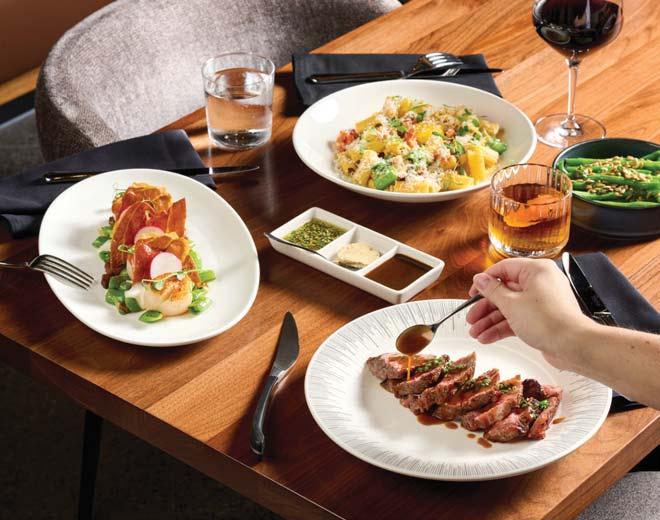
Alara dazzles at the new Madison Square development. —BRANDON WUSKE
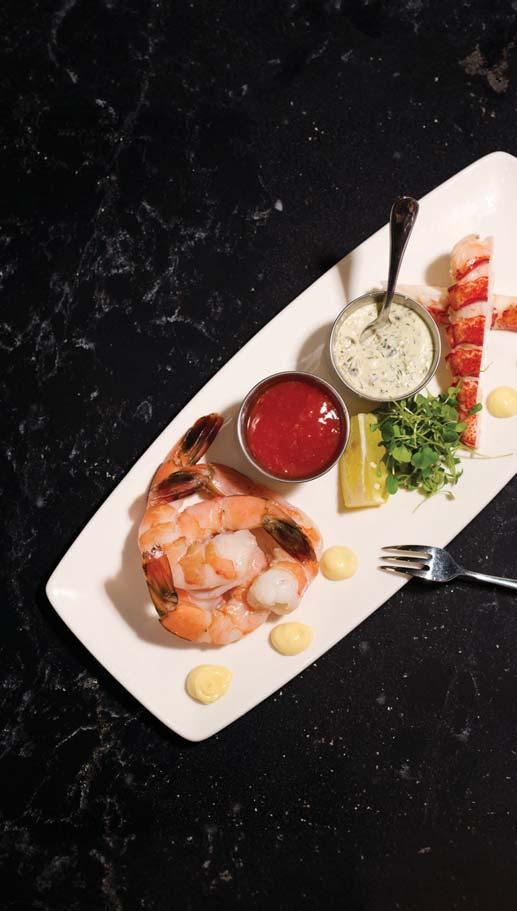
WITH RESTAURANTS LIKE S.W. CLYBORNE, TAHONA KITCHEN + BAR, AND TOAST & Berry, Looking Glass Hospitality already has several local hits, but Alara is its grandest and most refined effort to date. With two floors and more than 8,000 square feet, it’s massive, though it somehow feels intimate. Alara’s dim lighting, hanging plants, purple drapes, and muted music all create an atmosphere of subdued sophistication. However, you shouldn’t confuse “subdued” with “boring.”
As the corporate development chef for Looking Glass Hospitality, Mark Bodenstein has devoted most of his time and attention to Alara in recent months. The menu skews New American but pulls in flavors from across the globe, like BBQ pork buns, tuna crudo, and Korean corn dogs, a reflection of his itinerant background. In the late aughts, he cooked in and/or ran a string of local restaurants, including NuVo, Chalk Food + Wine, and Nicholson’s Pub and Tavern, before opening NuVo at Greenup. Prior to that, he lived and cooked in kitchens in Europe, Asia, and Hawaii. Most momentously, he worked under Chef Kathy Cary at the iconic Lily’s Bistro in Louisville, one of the regional pioneers of the farm-to-table movement. It’s clear that Bodenstein carries these experiences with him as local and regional producers like 80 Acres, Queen City Farms, and Great Lakes Growers play a large role in shaping Alara’s seasonal offerings.
Seasonal produce is on glorious display in the smoked carrot hummus. Housemade hummus has become something of a perquisite in fine dining these days and Alara’s iteration is a welcome addition to the pureed club. It certainly has the most ingredients—spiced oil, fried chickpeas, black garlic molasses, Fresno chiles, pickled carrots, dill, and sourdough crostinis—but the medley came together nicely. Its mousse-like con-
Alara 5410 Medpace Way, Madisonville, (513) 272-5315, alaracincinnati.com
Hours Dinner Sun–Thurs 4–10 p.m., Fri & Sat 4–11 p.m.
Prices
$8 (Flock Bakery Focaccia)–$72 (8 oz. Wagyu Sirloin Strip)
Credit Cards
All major
The Takeaway Sharables will wow the table at this ritzy Madison Square spot.


sistency was the smoothest I’ve had, with the fried chickpeas providing a welcome crunch.
Fried hearts of palm cakes are a less common but equally delightful appetizer. These fleshy inner cores of certain palm trees are breaded and shaped into three small cakes, fried golden brown, and served with avocado aioli and a bite of frisée salad. They have a creamy texture and almost cheesy flavor that bring the dish into “sophisticated bar snack” territory.
Alara’s larger dishes lend a certain “family style” air to the dining experience, albeit a family that passes the bone marrow demiglaze in lieu of the gravy. I balked a bit at the $52 price tag for the lobster and pea carbonara, but I should have brought two more people. It wasn’t just a generous portion of pasta; it was a generous portion of lobster, seemingly an entire trap’s worth of claws and meaty chunks almost crowding out the rigatoni.
I came back the next weekend with two dining companions in tow, primed for sharing. We swapped steak, salmon, chicken Milanese, and asparagus. The steak wouldn’t have made it past my placemat had I not been duty-bound to divvy. Specifically, it was an eight-ounce, center cut filet with a trio of condiments—rosemary truffle butter, chimichurri, and the aforementioned bone marrow demi—each condiment reinvigorated the straightforward dish.
The tender salmon, deep red like my rare filet, also stood out. It was Glory Bay King Salmon, harvested off the coast of southern New Zealand. Bodenstein says he prefers it because of its high fat content and the fact that it’s harvested near where it lives, giving it a similar flavor and appearance to wild-caught salmon. I see

his point. It’s shipped in multiple times per week. It seems that when Alara turns to non-local places for its sourcing, it does so with good reason.
The chicken Milanese—a light, rustic, and lemony dish that ate like a biergarten schnitzel—was massive and tasty, but perhaps a bit out of place on Alara’s menu. It came with asparagus, but I was glad we opted for the asparagus side as well, as it was decked out with mushrooms, lemon curd, and bits of crispy chicken skin that I now believe should be sprinkled over every asparagus side.
Like lots of local restaurants at this price point, Alara takes farm-to-table dining seriously. It’s also a restaurant that takes service seriously: glasses are quickly refilled, plates and cutlery frequently exchanged, and servers deftly explain its rather novel sharable menu.
Arguably, Alara’s most imaginative dishes appear on its dessert menu. Which is why I wasn’t especially surprised to learn that Pastry Chef Lisa Hood was previously a pastry sous chef at Disney World. The Creamsicle Cloud was her (very successful) attempt to make a cheesecake that wasn’t so dense. It’s a light, creamy dessert that pops with the bright summer flavors of passionfruit curd, orange and vanilla mousse, and what the menu beguilingly describes as “color shifting glaze,” a psychedelic swirl of purples and blues. It’s not for me to say if Hood still pines for the Magic Kingdom, but it seems to have been distilled into this dessert.
Between the nearby Element Eatery food hall and restaurants like Mazunte and Bee’s BBQ, Madisonville has quickly established itself as one of our city’s great dining destinations. A sparkling, high-end restaurant was the missing piece. Alara spectacularly fills that void. With it, Looking Glass Hospitality has created a true wonderland.
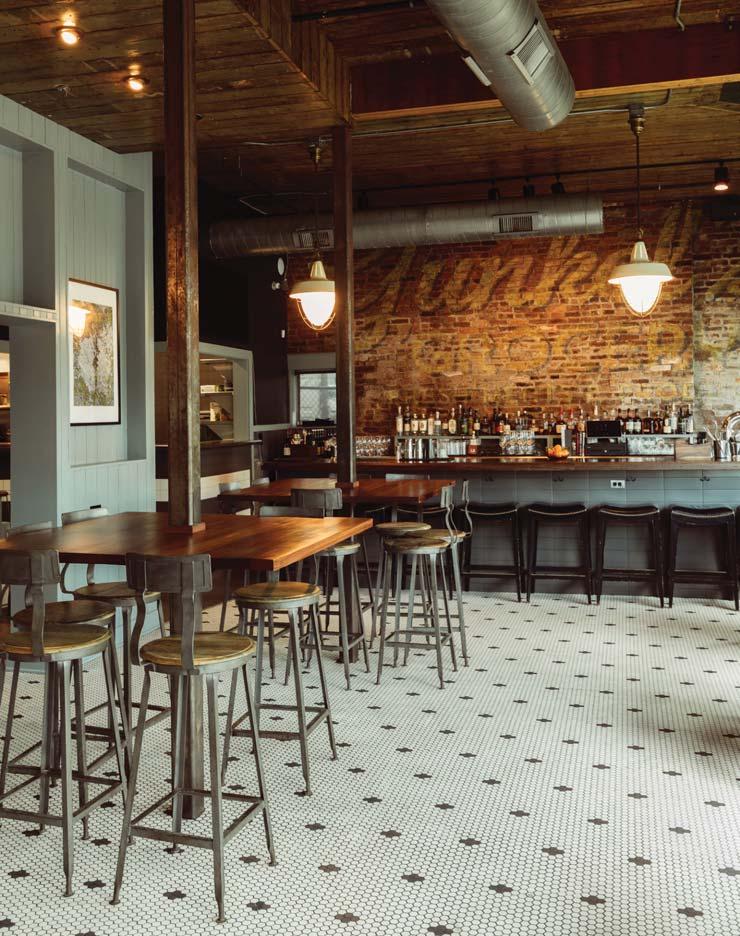

THE BURLINGTON, KENTucky, native is back in Northern Kentucky as Augusta Distillery’s first master distiller.
How did you get into the distilling business? I was in high school when my mom suggested I study chemical engineering in college, and when I asked her what I could do with that degree, she said make beer or make bourbon. I thought that sounded cool, so that’s what I set out to do. It was during my co-op in college that I was exposed to both brewing and distilling and immediately fell in love with the distillation process.
Why did you decide to come back to this area? The decision was based on the amazing opportunity I saw in Augusta Distillery, but after nine years in another state, it feels great to be super easy driving distance to [my and my husband’s] families.
You’ve accomplished a lot in your career (first female distiller in Tennessee, first female president of the Tennessee Distillers Guild, etc.). What’s still on your list of goals? My next real goal would be releasing my first-ever Kentucky bourbon.
What’s the one piece of advice you’d give someone interested in this field as a career? If you think this is the industry for you, even just a little bit, fight to get into it. Knock on every door. Use every connection. Because this industry is worth it. – AIESHA D LITTLE
Decade, 1076 E. Washington St., Louisville, (502) 749-0110, decade restaurant.com
LIKE MANY OF BUTCHERTOWN’S BUSINESSES, DECADE IS IN A HISTORIC LOUISVILLE building that’s gotten a new lease on life. And its food feels equally refreshing. The seasonal menu is divided into small, medium, and large plates, delving into Italian influences with touches of regional charm. Pastas—like the jalapeño bucatini and rock shrimp, served with a celery and herb salad and squid ink breadcrumbs—sit side by side with farmto-table favorites such as the half chicken from the nearby Groce Family Farm. Prepared “al mattone” (translates to “under a brick” in Italian), the succulent bird is served with mustard greens, potatoes, Parmesan, and green garlic pan jus. The less adventurous can snag a Double Decade cheeseburger made with beef from 3D Valley in Depauw, Indiana. This mixing of international and regional even extends to the restaurant’s boozier side. There’s bourbon (it is Kentucky, after all), but a European nod shows up clearly in the beers (like Framboise Boon, a traditional Belgian Lambic fruit-beer). There’s even soju in the form of the Oopsie Daisy, a craft cocktail made with caperitif, tequila, ginger liqueur, matcha, and orange. Decade’s staff is made up of industry vets who’ve had a hand in some of Louisville’s top restaurants (Decca, Proof on Main, etc.), but they’re now using those talents to create another dining destination that Louisvillians can be proud of. —AIESHA D. LITTLE
207 Seminary Ave., Augusta, Kentucky, (888) 592-6872, augustakydistillery.com
Read a longer interview with Alex at cincinnatimagazine.com

1 TIKKA TORCHER
Made with ghost peppers, tomatoes, and Indian spices, this Hot Llamas sauce is inspired by the beloved Indian dish chicken tikka masala. Toss it on your next chicken or seafood meal and wait for the temperature to rise. hotllamas.com


Did you know that “spicy” isn’t a taste? It’s a pain sensation caused by a chemical called capsaicin and it’s found only in certain plants. If you’re a hot sauce enthusiast, we’re sure you already know, so here are five more local bottles to add to your shelf. —AIESHA D. LITTLE
2 KILLER QUEEN
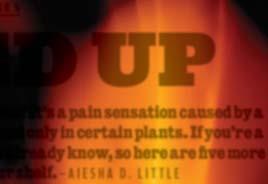

3 DUDE, SERIOUSLY
Prepare to get sweaty with this sauce from Origin Trade Goods. The Scotch Bonnet peppers, garlic, onion, carrots, and bell pepper take the spice up to 11. It’s dynamite with a laser beam. origintrade goods.com
Check out our interview with hot sauce connoisseur Brian Ambs on our Instagram account!

4 SORCERY SAUCE
Voted “best hot sauce” at Jungle Jim’s Weekend of Fire in 2018 and 2019, this sauce leaves behind a smoky kick with medium heat. It’s so good, the brand put it in its own hot sauce vending machine at Oakley Kitchen food hall. dudeseriously.com

The habaneros, arbol and Coban peppers, and blackberries in Moonbeam’s hottest offering will have your tongue wagging from the slow burn. It’ll add a nice, smoky flavor to your tacos or chili. moonbeamhotsauce.com
5 SMOKEHOUSE HABANERO
Farmer Nate’s emphasizes flavor over heat, but that doesn’t mean this one isn’t hot. Made with habanero, red cayenne peppers, garlic cloves, and smoked salt, it’s an homage to southern BBQ joints. farmernatessauce.com

CINCINNATI MAGAZINE’S dining guide is compiled by our editors as a service to our readers. The magazine accepts no advertising or other consideration in exchange for a restaurant listing. The editors may add or delete restaurants based on their judgment. Because of space limitations, all
If you haven’t had a plate of Shawn McCoy’s design set in front of you, it’s about time. Many of the menu’s dishes show his knack for the plate as a palette. A trio of duck breast, lamb chop, and demi haute chocolate boar is a standout. The eye for detail and contrasts of colors and textures belongs to someone who cares for food.
1000 Summit Place, Blue Ash, (513) 794-1610, thebrowndogcafe.com. Lunch and dinner Mon–Sat, brunch Sat. MCC, DS. $$
The revamped post office at 13th and Vine feels cozy but not claustrophobic, and it has distinguished itself with its stellar fried chicken. Even the white meat was pull-apart steamy, with just enough peppery batter to pack a piquant punch. Diners can order by the quarter, half, or whole bird—but whatever you do, don’t skimp on the sides. Bacon adds savory mystery to crisp corn, green beans, and edamame (not limas) in the succotash, and the crock of mac and cheese has the perfect proportion of sauce, noodles, and crumb topping. The Eagle OTR seems deceptively simple on the surface, but behind that simplicity is a secret recipe built on deep thought, skill, and love. 1342 Vine St., Over-the-Rhine, (513) 802-5007, eaglerestaurant.com. Lunch and dinner seven days. MCC. $
Back in the streetcar days, this roughly 100-yearold roadhouse was at the end of the Dixie Highway line, where the cars turned around to head north. The place was called the Dixie Tea Room then, and they served ice cream. The fried chicken came along in the 1930s, and they’re still dishing it up today. Families and regulars alike pile in on Mondays and Tuesdays for the fried chicken special. While the juicy (never greasy) chicken with its lightly seasoned, crisp coating is the star, the side dishes—homemade biscuits, coleslaw, green beans, mashed potatoes, and gravy—will make




Seven Northern Kentucky craft bourbon distilleries—Augusta Distillery (Augusta), Boone County Distilling Company (Independence), Neely Family Distillery (Sparta), New Riff Distilling (Newport), Old Pogue Distillery (Maysville), Pensive Distilling Co. (Newport), and Second Sight Spirits (Ludlow)—have been added to the world-famous Kentucky Bourbon Trail as part of its 25th anniversary celebration. The distilleries were part of the trail’s ancillary Kentucky Bourbon Trail Craft Tour, but the two have since merged. kybourbon.com
of the guide’s restaurants may not be included. Many restaurants have changing seasonal menus; dishes listed here are examples of the type of cuisine available and may not be on the menu when you visit.
To update listings, e-mail: cmletters@cincinnati magazine.com
you ask for seconds. Call ahead no matter what night you choose: There’s bound to be a crowd. Not in the mood for chicken? Choose from steaks, seafood, sandwiches, and comfort food options that include meatloaf and a Kentucky Hot Brown. Or just try the onion rings. You’ll wonder where onions that big come from.
2500 Dixie Highway, Ft. Mitchell, (859) 3313767, greyhoundtavern.com. Lunch and dinner seven days, brunch Sun. MCC, DS. $$
Cumminsville is home to arguably the best hot chili cheese mett and chocolate malt in Greater Cincinnati. A family-owned business that began as a simple hot dog stand more than 50 years ago, Mr. Gene’s still attracts lines of loyal customers at its windows. Can’t stand the heat? Order the mild chili cheese mett—more flavor, fewer BTUs. And if you still haven’t embraced Cincinnati-style coneys, try the Chicago-style hot dog with pickles, onions, relish, mustard, tomato, sport peppers, and celery salt; a pork sandwich; or wings (a sign proclaims “So hot they make the devil sweat”). Although the chocolate malt is the biggest seller, we love the $3.75 pineapple shake, made with real pineapple. 3703 Beekman St., South Cumminsville, (513) 541-7636, mrgenesdoghouse.com. Open Feb–Oct for lunch and dinner Mon–Sat. MC, V. $
The menu here generally doesn’t reinvent dishes or introduce outlandish flavors, but simply pays attention to enough little things to make the results unusually good. All steaks are premium and hand-selected, the star player being the Japanese A5 Wagyu. The Ultimate Surf & Turf is a date night favorite with a 34-ounce Angus Tomahawk, four shrimp, four scallops and two lobster tails. Bluefin tuna steak is complemented by cilantro lime rice, a vegetable medley, chimichurri, and a soy ginger vinaigrette. Confit duck leg, an Ivory House specialty, is served with parsnip mash, confit beets, and berry gastrique. The cocktails are ones you’ve probably seen before, but everything—from the Death Valley Farm Old Fashioned to the Best West Lemon Drop—has an extra dash of liveliness from a house-made element, like the rosemary syrup.
2998 Harrison Ave., Westwood, (513) 3890175, ivoryhousecincy.com. Dinner seven days,
KEY: No checks unless specified.
AE American Express, DC Diners Club
DS Discover, MC MasterCard, V Visa
MCC Major credit cards: AE, MC, V
= Named a
brunch Sun. MCC. DC. $$$
N’ SPICE
This Paddock Hills diner, with other locations in Over-the-Rhine and Blue Ash, has been dishing up wispy-thin pancakes and football-sized omelettes to Cincinnatians since FDR was signing new deals. Breakfast and lunch offerings mix old-hat classics like steak and eggs, corned beef hash, and basic burgers with funky iterations that draw on ethnic ingredients such as chorizo and tzatziki. Get here early if you don’t want to stand in line. 4381 Reading Rd., Paddock Hills, (513) 2423521; 1203 Sycamore St., Over-the-Rhine, (513) 762-0390; 10275 Summit Pkwy., Blue Ash, (513) 447-6453, eatsugarnspice.com. Breakfast and lunch seven days. MCC. $
Elias Leisring started building his pulled pork reputation under canopies at Findlay Market and Fountain Square in 2011. Leisring’s proper little ’cue shack along the river serves up ribs that are speaking-in-tongues good, some of the zazziest jalapeño cheese grits north of the Mason-Dixon line, and browned mashed potatoes that would make any short-order cook diner-proud. The small no-frills restaurant—packed cheek-by-jowl most nights—feels like it’s been there a lifetime, with customers dropping vinyl on the turntable, dogs romping in the side yard, and picnic tables crowded with diners. The hooch is bring-yourown, and the barbecue is bona fide. 3313 Riverside Dr., East End, (513) 533-1957; 133 West Elder St., Over-the-Rhine, (513) 5331957, ext. 2, elisbarbeque.com. Lunch and dinner seven days. MCC. $
The Pine serves some of the best Louisiana homestyle food you’ll find this far north of New Orleans. Taste the fried catfish filets with their peppery crust, or the garlic sauteed shrimp with smoky greens on the side, and you’ll understand why it’s called soul food. Between March and June, it’s crawfish season. Get them boiled and heaped high on a platter or in a superb crawfish etouffee. But the rockin’ gumbo—a thick, murky brew of andouille sausage, chicken, and vegetables—serves the best roundhouse punch all year round. As soon as
you inhale the bouquet and take that first bite, you realize why Cajun-style food is considered a high art form and a serious pleasure. And you’ll start planning your return trip. 6302 Licking Pke., Cold Spring, (859) 781-2200, theknottypineonthebayou.com. Dinner Tues–Sun. MCC, DS. $$
A sense of energetic fun defines this tiny Chinese spot with a robust beer list. The glossy paper menu depicts Master Chef Rich Chu as a “Kung Food” master fighting the evil fast-food villain with dishes like “fly rice,” “Brocco-Lee,” and “Big Bird’s Nest.” Freshness rules. Potstickers, dumplings, and wontons are hand shaped. The Dragon’s Breath wontons will invade your dreams. Seasoned ground pork, onion, and cilantro meatballs are wrapped in egg dough, wok simmered, and topped with thick, spicy red pepper sauce and fresh cilantro. Noodles are clearly Chef Chu’s specialty, with zonxon (a tangle of thin noodles, finely chopped pork, and mushrooms cloaked in spicy dark sauce and crowned with peanuts and cilantro) and Matt Chu’s Special (shaved rice noodles, fried chicken, and seasonal vegetables in gingery white sauce) topping the menu’s flavor charts. 521 Madison Ave., Covington, (859) 261-6121, kungfood. online. Lunch Mon–Fri, dinner Sat. MCC. $
When Mike and Helen Wong opened Oriental Wok in 1977, the couple wanted to recreate the glamor and refinement of the Hong Kong-Cantonese cuisine they knew. Today, locals and expats alike enjoy authentic Chinese and Chinese-American dishes in dining rooms reminiscent of Beijing. Beyond the elephant tusk entryway and fish ponds and fountains is the warmth and hospitality of the Wong family, service on par with the finest establishments, and very, very good food. Best are the fresh fish: salmon, grouper and sea bass steamed, grilled or fried in a wok, needing little more than the ginger-green onion sauce that accompanies them. Oriental Wok is the tri-state’s longest-running family-owned Chinese restaurant for a reason.
317 Buttermilk Pke., Ft. Mitchell, (859) 331-3000; 2444 Madison Rd., Hyde Park, (513) 871-6888, orientalwok. com. Lunch Mon–Fri (Ft. Mitchell; buffet Sun 11–2:30), lunch Tues–Sat (Hyde Park), dinner Mon–Sat (Ft. Mitchell) dinner Tues–Sun (Hyde Park). MCC. $$
Top
Most people who’ve eaten at Abigail Street have favorite dishes that they order every visit: the Moroccan spiced broccoli, for example, or the mussels charmoula, with its perfect balance of saffron, creaminess, and tomatoey acidity. Many of the new items on the menu have the same perfected feeling as these classics. Working within a loose framework of Middle Eastern and North African flavors, Abigail Street has never fallen into a routine that would sap its energy. Offerings like the wood-grilled lamb, with apricot, harissa, and pickled Persian cucumbers, feel just as accomplished as old favorites like the falafel, beautifully moist and crumbly with a bright parsley interior. The restaurant is always watching for what works and what will truly satisfy, ready to sacrifice the superficially interesting in favor of the essential.
1214 Vine St., Over-the-Rhine, (513) 421-4040, abigailstreet.com. Dinner Tues–Sat. MCC, DS. $$
Alcove lives up to its name, the embodiment of a green oasis at the corner of Vine and 14th streets. A lot of care goes into the space’s bright, floral design—it features more than 300 square feet of plant-covered “living walls,” which are pruned by their creator, Urban Blooms, on a weekly basis. Equal care and attention went goes into Alcove’s the seasonal farm-to-table menu. It’s an uncomplicated affair featuring exceptional-but-approachable dishes. As one might expect from a restaurant where plants cover most of the walls, vegetables are done very well here. The simple, clean pear and fennel salad stands out as does a dish of roasted carrots served with oil and breadcrumbs. Like the produce, much of the meat is sourced from local and regional farms (for instance, the “Denver Cut” of steak— a lean cut, taken from the shoulder—comes from Sakura Farms in nearby Westerville, Ohio). Among other local vendors, Rich Life Farms, Urban Stead Cheese, and Eli Settler (a.k.a. “Eli the Farmer”) all contribute to Alcove’s menu. This is a restaurant that takes sustainability seriously, and sustain-
ability has a funny way of going hand-in-hand with quality. 1410 Vine St., Over-the-Rhine, (513) 371-5700, madtree. com/locations/alcove-bar-restaurant. Brunch Fri–Sun, dinner seven days. MCC. $$
After several pandemic-related setbacks, Chef/ Owner Jordan Anthony-Brown opened his Mediterranean-inspired restaurant in Walnut Hills’s historic Paramount Square Building. And it was worth the wait. The restaurant’s seasonal menu draws on flavors from across the Mediterranean with subtle touches, like cultured butter and a smoky za’atar seasoning. The sublime charred carrots are served with Middle Eastern spice blends like dukkah and ras el hanout as well as mint and crumbles of lamb merguez sausage. Brined, poached, and cooked over coals, the carrots themselves eat like a tender smoked sausage. It’s a dish that perfectly encapsulates The Aperture’s commitment to serving substantial versions of traditionally lighter fare. For a restaurant so serious about food—and exceptional wines—it’s refreshing to see it doesn’t take itself too seriously. The original cocktails have offbeat names like #lemon and I’m Her, and the catchy playlist is heavy on old-school hip-hop. At heart, The Aperture is a neighborhood restaurant, albeit one that’s bound to bring people in from all over.
900 E. McMillan St., Walnut Hills, (513) 872-1970, theaperturecinci.com. Dinner Wed–Sat. MCC. $$
While Atwood has done an excellent job of working closely with coastal purveyors to curate a focused but eclectic selection of oysters, the rest of its menu consists of southern coastal cuisine prepared with rigorous French technique. The wild-caught fish is as fresh and deliberately sourced as the eponymous oysters, a soft, nutty, perfectly blackened grouper perched atop a creamy parsnip pureée. The modern, clean-lined space, adorned with busts and oil paintings (curated with the help of neighborhood artist Alex Frank) matches the elegant food. It’s stately without being stuffy; it somehow feels both timeless and hip. Like everything else at Atwood, it’s the result of a delicate, highly successful balancing act.
1220 Vine St., Over-the-Rhine, (513) 246-4256, atwoodoysterhouse.com. Dinner Wed–Sun. MCC. $$
With its grand staircase, chandelier, and floorto-ceiling draperies, Boca has an atmosphere of grandeur and refinement. There is a sense of drama not only in the decor but in everything it serves. In some dishes, there is a painterly sense of contrast and surprise, like the maple tuile served with the maple mascarpone cheesecake. In others, there is a dramatic suspense, like the whole egg yolk quivering in the center of the beef tartare waiting to be broken. While staying mostly grounded in the fundamentals of Italian and French cuisine, Boca has an air of international sophistication that sets its food apart. The hamachi crudo, an old standby on the menu, takes Japanese flavors and gives them new dimensions with grapefruit suprêmes and slivers of shishito pepper. This is food of extraordinary creativity and flair.
114 E. Sixth St., downtown, (513) 542-2022, bocacincinnati.com. Dinner Mon–Sat. MCC, DS. $$$
Normally diners aren’t pleased when a restaurant runs out of something. At Bouquet, though, surprise changes to the menu are simply a sign of integrity. Chef-owner Stephen Williams is serious about using seasonal ingredients, and if the figs have run out or there is no more chicken from a local farm, so be it. The flavors at Bouquet are about doing justice to what’s available. Preparations are unfussy, complexity coming from within the vegetables and proteins themselves. A spring salad—wonderfully fresh and vibrant, so you know the strawberries included have just come off a nearby vine—is dressed with candy-striped beets, jerk-seasoned pepitas and whipped goat cheese. This determination to make something delicious out of what’s on hand, to embrace limitations, gives the food at Bouquet a rustic, soulful quality.
519 Main St., Covington, (859) 491-7777, bouquetbistro. com. Dinner Tues–Sat. MCC, DS. $$
The fifth venture from Anthony Sitek and wife Haley Nutter-Sitek’s Crown Restaurant Group, Five on Vine achieves excitement through comfort food with meticulous attention to detail: the meat is butchered in-house, the bread and pasta are made from scratch, and the bacon is house-cured. House-butchered beef and house-made pasta come together beautifully in the pappardelle stroganoff, served with chunks of short rib that are as tender as the noodles themselves. Thick, cleanly acidic fried green tomatoes make an appearance, as does a bountiful cioppino, a tomato-based seafood stew created by Italian American fisherman in San Francisco. Some of the dishes are pulled straight from Sitek’s own childhood, in New Jersey. “Gracie’s Meatballs,” named in honor of his grandmother, use her unique blend of raisins and pine nuts. A love letter to the long-beloved dishes, the menu is an extended rebuttal against the tired argument that American food is bland and boring.
1324 Vine St., Over-the-Rhine, (513) 246-4301, fiveonvine.com. Dinner seven days. MCC. $$
Metropole has been remarkably stable since it opened in 2012. Even when chefs have left, the organization has promoted from within, kept popular dishes on the menu, and maintained a certain vibe, a balance between sophistication and rustic-ity. Its vegetarian fare contains many of its most inventive and delightful creations. The seared salmon is served with miso wild rice, asparagus, pickled bok choy, and sesame seeds. The blistered shishitos, served with burrata and preserved lemon, encapsulates Metropole at its best: fun and whimsical, but rooted in careful execution of deep and satisfying flavors.
609 Walnut St., downtown, (513) 578-6660, metropoleonwalnut.com. Breakfast Wed–Fri, dinner seven days, brunch Sat & Sun. V, DS, MC, AMEX. $$
It’s fitting that Chef/Owner Jose Salazar named this restaurant after his grandmother, because there is something deeply homey about the food at Mita’s. With a focus on Spanish and Latin-American tapas, it always feels, in the best possible way, like elevated home cooking. Its sophistication is modestly concealed. The flavors are bold and direct, whether the spicy freshness of the ceviche de camarones with passionfruit leche de tigre or the intensely bright sourness of the pozole verde. The tacos de barriga de cerdo, which come in pairs, are made with fried pork belly, citrus gastrique, habanero slaw, huitalacoche mayo, and are served on house-made corn tortillas. But what mainly comes through is the warm-hearted affection a grandmother might have put into a meal for a beloved grandson. It’s the kind of big hug everyone needs from time to time.
501 Race St., downtown, (513) 421-6482, mitas.co. Dinner Mon–Sat. MCC. $$$
Chef/Owner Jeffery Harris, a New Orleans native, prepares the cuisine of his beloved city with sophistication and flair, drawing on all the influences that have contributed to the cuisine of the Big Easy—from West African to French to Japanese to Haitian. The menu changes seasonally, with almost a complete overhaul each time. If classic New Orleans dishes do show up on the menu, they’re likely to get delightfully unexpected touches. The smoked chicken, for example, comes with peach Alabama barbecue, greens, mirliton, and charred peach. It’s exquisitely prepared food served in a funky, laid-back atmosphere. 1405 Clay St., Over-the-Rhine, (513) 384-3597, noliakitchen.com. Dinner Tues–Sat. MCC,DC. $$$
Opal’s hip-ly minimal menu (many of the dishes have one syllable names like “Duck” or “Fish”) centers around the restaurant’s wood-fired, 88-inch grill. You can taste the grill’s handiwork on the “Cauliflower” appetizer, which also comes with citrus supremes, fennel pollen (a potent and rather pricey spice), salsa brava (a smoky Mediterranean sauce, not to be confused with the ubiquitous Latin American salsa), feta, and almonds. For the duck, the kiss of flame locks in the juices while a medley of wheatberry hominy, preserved cherry, and cane syrup gastrique (a sort of refined sweet-and-sour sauce made from
caramelized sugar and vinegar) add the sweetness that one expects to flavor a good game bird. According to Owner Bill Whitlow, Opal’s menu started small as the team figured out which dishes worked best with its signature grill. The selections, like the restaurant, have continued to grow, so you can expect tweaks and seasonal changes to a menu this committed to fresh meat and produce. 535 Madison Ave., Covington, (859) 261-0629, opalrooftop.com. Dinner Tues–Sun. MCC, DS. $$$
Quarter Bistro has multiple personalities: one part clubby neighborhood joint, one part dinner and a movie with a dash of lusty romance. The Bistro Burger, a half-pound of black Angus beef, is seasoned but not overly so, with a sturdy-butnot-too-chewy bun. The 18-hour short ribs are the star, and reason enough to skip the movie next door. Braised into a flavor bomb of meat candy, it’s served with papardelle pasta, roasted vegetables, and onion straws. With the no-lip service, The Quarter Bistro could be well on the way to making middle age look sexy.
6904 Wooster Pke., Mariemont, (513) 2715400, qbcincy.com. Dinner Tues–Sun. MCC, DS. $$
Sacred Beast advertises itself as a kind of upscale diner, but the real gems are the oddball dishes that
don’t quite fit the diner mold. The menu can be disorienting in its eclecticism: steak tartare and fries and a king salmon is next to a diner breakfast and deviled eggs. Winners are scattered throughout the menu in every category. On the cocktail list, the Tito’s Smash, made with Tito’s vodka, house sour mix, ginger beer, and mint simple syrup is oddly satisfying. The service is good, and there is some flair about the place—including vintage touches, from the facsimile reel-to-reel audio system to the mostly classic cocktails—even within its rather chilly industrial design. In short, go for the unique grub; stay for the elegant, shareable twists on classic snacks.
1437 Vine St., Over-the-Rhine, (513) 213-2864, sacredbeastdiner.com. Lunch and dinner Wed–Sun. MCC, DC. $$
Ever since it began dishing out its lo-fi eats, Chef Dan Wright’s gastropub has been operating at a velocity few can match. From the howl and growl of supremely badass hot dogs to the palaterattling poutine, Senate has led the charge in changing the local conventional wisdom about what makes a great restaurant. Consumption of mussels charmoula means either ordering additional grilled bread to soak up every drop of the herby, saffron-laced broth or drinking the remainder straight from the bowl and perfectly crisped and seasoned fries inspire countless return visits.
1100 Summit Place Dr., Blue Ash, (513) 7690099, senateblueash.com. Lunch and dinner Tues–Sun. MC, V, DS. $
Jean-François Flechet’s waffle empire grew from a back counter of Madison’s grocery at Findlay Market to multiple full-service sit-down spots.


There’s more on the menu than the authentic Belgian treat, though it would be a crime to miss the chicken and waffles: a dense, yeasty waffle topped with a succulent buttermilk fried chicken breast, Frank’s hot sauce, and maple syrup. There are also frites, of course, and Brussels sprouts— served with pancetta and sherry vinaigrette—plus a gem of a Bolognese. And let’s not forget the beer. Six rotating taps offer some of the best the Belgians brew, not to mention those made in town.
1135 Vine St., Over-the-Rhine, (513) 3965800, and other locations, authenticwaffle. com. Breakfast, lunch, and dinner Tues–Sun, breakfast and lunch Mon, brunch Sun. MCC. $
At his new “mostly French” restaurant Colette, which occupies the former Zula space across from Washington Park, Chef Danny Combs has built a more laid-back home for his focused, pristine cooking. While there is classic bistro fare, like steak frites, on the concentrated menu, there are also less familiar but equally classic French dishes, like Brandade de Morue (a silky emulsion of whipped salt cod served with rustic bread) and the savory puff pastry known as Volau-Vent. One can turn to the extensive drink menu (also “mostly French”) to find a wine or cocktail to go with any dish on offer. Like Zula, Colette would function just fine as a wine and cocktail bar, though we can’t imagine coming to a place this good and not eating something.
1400 Race St., Over-the-Rhine, (513) 381-1018, coletteotr.com. Dinner Tues–Sat. MCC, DC. $$
If it’s been a couple of years since you’ve been to Le Bar a Boeuf—the late JeanRobert de Cavel’s fun-yet-refined French bistro




Wildweed, which recently opened a brick-and-mortar spot in Over-theRhine, was featured on BonAppétit’s list of “The 8 Must-Visit New Restaurants to Try This Summer” in June. “After staging 225 pop-ups since 2019, David and Lydia Jackman’s roving operation is finally opening as a full-time restaurant,” says writer Kate Kassin. “As in the pop-up days, the focus will be on foraged foods—and, of course, pasta, which put Wildweed on the map.” wildweed-restaurant. com





located on the first floor of the Edgecliff Private Residences in East Walnut Hills—it may be time for a revisit. The formerly burger-centric menu now approaches the full repertoire of bistro classics. The menu reads like a greatest hits list of bistro fare, with escargot, beef tartare, duck leg confit, steak frites, and French onion soup all making appearances. As France’s influence on American fine dining has waned, it’s refreshing to see a restaurant committed to not only preserving the French classics but reinvigorating them.
2200 Victory Pkwy., East Walnut Hills, (513) 751-2333, lebarboeuf.com. Dinner Wed–Sat. MCC. $$
Luca Bistro opened in October 2022, but it feels like it has been around for decades. The unabashedly French restaurant, with its French posters, bright red outer paneling, and chalkboard menu proclaiming its specials to passersby, fits into its Mt. Adams environs so perfectly that it’s hard to imagine Hatch Street without it. That, combined with warm service, timeless French fare, and relaxed joie de vivre makes this a true neighborhood establishment. Chef Frederic Maniet grew up in the south of France and has done an excellent job transporting his native cuisine to a quiet corner of Cincinnati. These are the dishes that culinary Francophiles often crave, prepared in a straightforward, time-honored way. The Bouchées à la Reine, a buttery, flaky puff pastry filled with chicken, mushrooms, peas, Gruyèere cheese, and béchamel sauce, is so warm and comforting it makes chicken pot pie seem aloof by comparison. It’s a warm, gentle reminder that French food can be convivial and affordable.
934 Hatch St., Mt. Adams, (513) 621-5822, lucabistro. com. Breakfast and lunch Tues–Sun, dinner Tues–Sat. MCC. $$
In 2011, Jared Wayne opened A Tavola Pizza with two friends just as OTR was blowing up. A Ferrara pizza oven was ordered from Italy; Wayne, a skilled woodworker, built custom
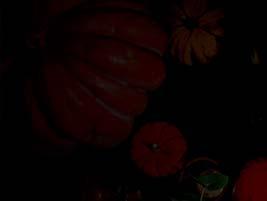


tables; and the menu was fleshed in with trendy crowdpleasers like charcuterie and craft cocktails. Fast-forward a decade. The OTR outpost is closed but the second location is still going strong in the ’burbs: A Tavola Madeira capitalizes on the menu from the Vine Street location, including the fresh and zesty artichoke pizza on a Neapolitan crust; gooey mozzarella-filled arancini, or risotto fritters; and the zucchini mozzarella. Wash down your small plates with a glass of crisp and grassy Sannio falanghina or an ice-cold Rhinegeist. They’re definitely going to need a bigger parking lot. 7022 Miami Ave., Madeira, (513) 272-0192, atavolapizza.com. Lunch and dinner seven days. V, DC, MS, AMEX. $
Al-Posto is an upscale southern Italian spot that reflects the same commitment to quality ingredients and delicate preparation that made its predecessor Dear such a gem. Appetizers include classic sharables like marinated olives (prepared with orange zest, rosemary, and Calabrian chile), burrata with grilled focaccia, and coppa (a cured pork served with preserved peppers and almonds), but it’s the pasta (which can be ordered as an entrée or a first course) that’s not to be missed. We recommend the Cacio e Pepe, a seemingly simple dish comprised of bucatini (similar to spaghetti, but thicker), black pepper, and a sharp pecorino Toscano. Since you’re probably wondering, “Al-Posto” roughly translates to “at the spot.” Located in the middle of Hyde Park Square, this eatery seems poised to become the culinary focal point of the neighborhood. 2710 Erie Ave., Hyde Park, (513) 321-2710, al-posto.com.
Dinner Tues–Sat. MCC, DC, DS. $$
Chef/Restaurateur Cristian Pietoso carries on the legacy of his father, Nicola, as the elder Pietoso’s Over-the-Rhine eatery celebrated 25 years in business in 2021. You can still get the old Italian classics, and they’ll be as good as ever, but the rest of the menu has blossomed
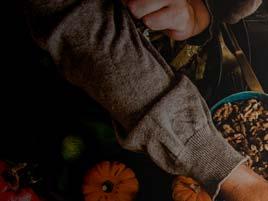
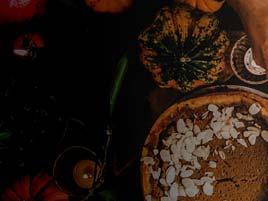


into a freewheeling tour of modern American cuisine. Any establishment paying this level of attention to detail—from the aged balsamic and lavender honey on the Italian cheese board to the staff’s wine knowledge—is going to put out special meals. Rarely have humble insalate been so intricately delicious, between the non-traditional summer gazpacho, filled with crab, zucchini, peaches, and squash, or the balance of the tangy, salty, and citrusy Siciliana salad. Order an old favorite, by all means, but make sure you try something new, too.
1420 Sycamore St., Pendleton, (513) 721-6200, nicolasotr.com. Dinner Mon–Sat. MCC, DS. $$$
Top 10
There are certain books and movies that you can read or watch over and over. Eating at Sotto is a similar experience: familiar, but so profound and satisfying that there is no reason to ever stop. Unlike other restaurants, where the techniques are often elaborate and unfamiliar, the magic at Sotto happens right in front of you, using ordinary elements and methods. When you taste the results, though, you realize that some mysterious transmutation has taken place. Orecchiette with rapini and pork sausage comes in a buttery, lightly starchy broth with a kick of spice that you could go on eating forever. From the texture of the chicken liver mousse to the seasonal fruit sauce on the panna cotta, most of the food has some added element of soulfulness.
118 E. Sixth St., downtown, (513) 977-6886, sottocincinnati.com. Dinner seven days. V, MC, DS, AMEX. $$
Focusing on Northern Italian cuisine, Subito carves out its own worthwhile place in the landscape. Most of the items on the menu—from pizza to various pastas—will be familiar, but there are delightful surprises, like the lion’s mane lumache. This citrusy dish is served on lumache pasta and





Over-the-Rhine was recently named one of 150 romantic locations for al fresco dining in 2024 by DatingAdvice. com. The site ran a survey of 3,000 respondents to identify the places that do outdoor dining right. “Known for its impressive 19th century architecture, Over-the-Rhine is a revitalized area with a creative vibe, featuring craft breweries and artisanal eateries, perfect for a trendy, romantic night out.” datingadvice.com/ studies/top-romanticdining-destinations
cooked with scallions, garlic, shallots, chili, brodo, and pecorino. Everything at Subito is done with intelligence and a light touch.
311 Pike St., downtown, (513) 621-4500, thelytleparkhotel.com/dining/subito.
Breakfast and lunch Mon–Fri, dinner Mon–Sat, brunch Sat & Sun. MCC. $$
You don’t go just anywhere to dine on uni sashimi (sea urchin) or tanshio (thinly sliced charcoalgrilled beef tongue). Don’t miss the rich and meaty chyu toro (fatty big-eye tuna), or the pucker-inducing umeshiso maki (pickled plum paste and shiso leaf roll). Noodles are also well represented, with udon, soba, or ramen options available. And don’t forget to ask about the specials; owners Ken and Keiko Ando always have something new, be it grilled koji or marinated amberjack smoked salmon crudo, delicacies that you’ll be hard-pressed to find in any of those Hyde Park pan-Asian wannabes. The only thing you won’t find here is sake, or any other alcohol. Bring your own, or stick to the nutty and outright addicting barley tea. 11255 Reed Hartman Hwy., Blue Ash, (513) 9540041, andojapaneserestaurant.com. Dinner Tues–Sat. MCC. $$$
BARU
Baru, the sleek izakaya in the former MidiCi space, prioritizes bar dining, which is meant to be enjoyed alongside its eclectic drinks list. The menu is broken down into drinks, sushi, “small plates,” “plates,” sides, and ishiyaki. Start with clever cocktail offerings, like the Japanese Highball (which uses Japanese whiskey), the Sake-tini, or the sweetly spicy Wasabi Margarita. Baru’s sushi offerings are—like the rest of the menu—fun and funky. The sushi menu is varied, but concise, featuring a trio of ahi tuna, spicy tuna, and escolar, as well as a quail egg nigiri. If sushi got the party going, the theatrical ishiyaki kicked it into high gear. The term refers to dishes that diners grill tableside on a hot stone, such as the prime New York strip. For all its convivial buzz, Baru is also a spot where solo diners can enjoy a few peaceful bar-side bites. The Crispy Rice Spicy Tuna from the small plates section brought the same level of freshness and quality as the rest of the menu. Sometimes it pays to dine alone.
595 Race St., downtown, (513) 246-0150, barusushi.com. Dinner seven days. MCC, DS. $$$
Top10
Kiki started as a pop-up at Northside Yacht Club, then leapt into brick-andmortar life in College Hill. Your best bet here is to share plates, or simply order too much, starting with the edamame, salted or tossed in tare, a savory dipping sauce. Add the karaage fried chicken, with the Jordy mayo and the pepe meshi, confit chicken on spaghetti and rice that somehow works. And, yes, the ramen, too. The shio features pork belly and tea-marinated soft-boiled egg, but the kimchi subs in tofu and its namesake cabbage for the meat.
5932 Hamilton Ave., College Hill, (513) 5410381, kikicincinnati.com. Lunch Sun and dinner Wed–Sat. MCC. $
Owner Jason Shi seems to know everybody’s name as he chats up diners, guiding them through the extensive sushi and sashimi menu. Five young sushi chefs, all part of Shi’s family, work at light speed behind the bar, a choreography backlit by rows of gleaming liquor bottles. Dinner proceeds with glorious chaos as a feisty Carla Tortelli–like server delivers one dish after another—slivers of giant clam on ice in a super-sized martini glass, a volcanic tower of chopped fatty tuna hidden inside overlapping layers of thin avocado slices, smoky grilled New Zealand mussels drizzled with spicy mayo, and delicate slices of a samurai roll—all between shots of chilled sake.
12082 Montgomery Rd., Symmes Twp., (513) 583-8897, kyotousa.m988.com. Lunch and dinner seven days. MCC. $$
Mei’s menu is meant to represent traditional Japanese cuisine, appealing to the novice as well as the sushi maven. It is divided into sections that encourage a progressive meal of small dishes: One each for hot and cold appetizers, noodles, sushi and sashimi, special rolls, soups and salads, sushi dinners (with miso soup), and combinations (such as tempura paired with sashimi). Deep-fried soft shell crab comes with ponzu sauce—a dipping sauce made of rice vinegar, soy sauce, mirin, and citrus juice—and the kind of yakitori that you can find on the streets of New York. Bento boxes—lacquered wooden boxes divided into compartments—offer the neophyte a sampling of several small dishes. Mei’s are lovely: deep red and stocked with tempura, cooked salmon, sashimi, stewed vegetables, and a fabulous egg custard with shrimp and gingko nut. Mei’s sushi—nigiri, maki, and handrolls—is exceptionally good with quality cuts of fresh seafood. The staff is knowledgeable, extremely efficient, respectful, and attentive, even when it’s at peak capacity.
8608 Market Place Lane, Montgomery, (513) 891-6880, meijapaneserestaurant.com. Lunch Sat & Sun, dinner Tues–Sun. MCC, DS. $$
ZUNDO RAMEN & DONBURI
A stark contrast to Styrofoam cup soup, chef Han Lin’s ramens are a deep and exciting branch of cuisine, capable of subtlety, variation, and depth. The simplicity of the dish’s name hides a world of complexity. Zundo uses the traditional Japanese building blocks of flavor—soy sauce, miso, sake, mirin—to create something freewheeling and time-tested. Bowls of ramen come with a marinated soft-boiled egg half, roast pork, green onion, and a healthy serving of noodles. Each has a distinct identity, like the milky richness of the tonkotsu, the rich and buttery miso, or the light and faintly sweet shoyu ramen. A transformative add-in is the mayu, or black garlic oil. Dripped on top of one of the subtler broths, it adds a deep, mushroom-y richness, with the hint of burned flavor that makes barbecue so good.
220 W. 12th St., Over-the-Rhine, (513) 9750706, zundootr.com. Lunch and dinner Tues–Sun. MCC. $$
Come for the jham bong—a seafood soup with flour noodles in a spicy broth with pork, shrimp, squid, mussels, and vegetables. Revered for its medicinal properties, the dinner-sized soup will leave your eyes glistening and your brow beaded with sweat. It’s a detox for your overindulgence, rejuvenation for when you’re feeling under the weather. Expect crowds on weekends. Expect too, that dozens of them have come for dolsot bibimbap, the hot stone pots filled with layers of rice, vegetables, meat or tofu, egg, and chili paste. Characterized by its electric color and addictive flavors, Riverside Korean’s version is a captivating bowl of heaven.
512 Madison Ave., Covington, (859) 291-1484, riversidekoreanrestaurant.com. Lunch Tues–Fri, dinner Tues–Sun. MCC, DS. $$
In this lively joint with a burnished summer lodge interior of wood and stone, even the food is unrestrained: rough-cut chunks of charbroiled beef tenderloin, big slices of onion and green pepper turned sweet and wet in the heat, skewers of marinated and charbroiled chicken perched on rice too generous for its plate.
906 Nassau St., Walnut Hills, (513) 281-9791, andyskabob.com. Lunch Mon–Sat, dinner seven days. MCC. $$
No matter how much restraint you go in with, meals at Phoenician Taverna quickly become feasts. There is just too much that’s good, and everything is meant to be shared. With fresh pita bread continuously arriving from the ovens, and a table of quickly multiplying meze (hummus, falafel, muhammara), there is a warmth and depth to the cooking that envelops you. With such traditional cuisine, you may think there isn’t much left to discover beyond simply executed classics prepared according to time-tested methods. But there are always new discoveries as the flavors mingle from plate to plate: the tabbouleh with the hummus, mixed with a touch of harissa, or the smoky baba ghanoush spooned onto falafel. Phoenician Taverna keeps taking these classics a little further.
7944 Mason Montgomery Rd., Mason, (513) 770-0027, phoeniciantaverna.com. Lunch Tues–Fri, dinner Tues–Sun. MCC. $$
When the wind is just right, you can smell the meat roasting from a mile away. Watch the rotating wheels of beef and lamb, and you understand how Greek food has escaped the American tendency to appropriate foreign cuisines. Sebastian’s specializes in gyros, shaved off the stick, wrapped in thick griddle pita with onions and tomatoes, and served with cool tzatziki sauce. Whether you’re having a crisp Greek salad with house-made dressing, triangles of spanakopita, or simply the best walnut and honey baklava this side of the Atlantic (often made by the Mrs.), they never miss a beat, turning more covers in the tiny restaurant on one Saturday afternoon than some restaurants do in an entire weekend.
5209 Glenway Ave., Price Hill, (513) 471-2100, sebastiansgyros.com. Lunch and dinner Mon–Sat. MCC. DS. $
It’s easy to find a cheap burrito place around a college campus, but you’d be hard-pressed to find one as consistently good as Habañero, with its flavors of Latin America and the Caribbean wrapped up in enormous packages. Fried tilapia, apricotglazed chicken breast, hand-rubbed spiced flank steak, shredded pork tenderloin, or cinnamonroasted squash are just some of the ingredients for Habañero’s signature burritos. All salsas are made in-house, from the smoky tomato chipotle to the sweet-sounding mango jalapeño, which is hot enough to spark spontaneous combustion. 358 Ludlow Ave., Clifton, (513) 961-6800, habanerolatin.com. Lunch and dinner seven days. MCC, DC, DS. $
Mazunte runs a culinary full-court press, switching up specials to keep both regulars and staff engaged. Pork tamales arrive swaddled in a banana leaf, the shredded pork filling steeped in a sauce fiery with guajillo and ancho chilies yet foiled by the calming sweetness of raisins. The fried fish tacos are finished with a citrusy red and white cabbage slaw that complements the accompanying mango-habañero salsa. With this level of authentic yet fast-paced execution, a slightly greasy pozole can be easily forgiven. Don’t miss the Mexican Coke, the margaritas, or the non-alcoholic horchata.
5207 Madison Rd., Madisonville, (513) 7850000, mazuntetacos.com. Lunch and dinner Mon–Sat, brunch Sun. MCC. $
The brains behind Boca deliver authentic, contemporary, high-quality Mexican fare downtown. You’ll find a concise menu, including tacos, salads and sides, large plates, and desserts. The Pork Al Pastor tacos, zesty with salsa verde and sweet with grilled pineapple, are definite crowd-
pleasers. If you’re biased against Brussels sprouts, Nada just might convert you. The crispy sprouts, served with chipotle honey and candied ancho pepitas, are a deliciously intriguing starter.
600 Walnut St., downtown, (513) 721-6232, eatdrinknada.com. Lunch Mon–Fri, dinner seven days, brunch Sat & Sun. MCC, DS. $$
On a Saturday night, Taqueria Mercado is a lively fiesta, with seemingly half of the local Hispanic community guzzling margaritas and cervezas or carrying out sacks of burritos and carnitas tacos—pork tenderized by a long simmer, its edges frizzled and crispy. The Mercado’s strip mall interior, splashed with a large, colorful mural, is equally energetic: the bustling semi-open kitchen; a busy counter that handles a constant stream of take-out orders; a clamorous, convivial chatter in Spanish and English. Try camarones a la plancha, 12 chubby grilled shrimp tangled with grilled onions (be sure to specify if you like your onions well done). The starchiness of the rice absorbs the caramelized onion juice, offset by the crunch of lettuce, buttery slices of avocado, and the cool-hot pico de gallo. A shrimp quesadilla paired with one of their cheap and potent margaritas is worth the drive alone.
6507 Dixie Hwy., Fairfield, (513) 942-4943; 100 E. Eighth St., downtown, (513) 381-0678, tmercadocincy. com. Lunch and dinner seven days. MCC, DS. $
MCCORMICK & SCHMICK’S
The daily rotation here reads like a fisherman’s wish list: lobster tails from Australia and the North Atlantic, ahi tuna from Hawaii, clams from New England. But high-quality ingredients are only half the equation; preparation is the other. Herb-broth sea bass, served with roasted fingerling potatoes, makes the taste buds dance. The spacious digs and attentive waitstaff bring a touch of class to Fountain Square and make it a sophisticated destination. It’s likely to remain a favorite. After all, it’s right in the middle of things. 21 E. Fifth St., downtown, (513) 721-9339, mccormickandschmicks.com. Lunch and dinner seven days. MCC, DC, DS. $$
Chanaka De Lanerolle sold Mt. Adams Fish House back in 2011, and Rosewood Sushi, Thai & Seafood is its reincarnation—and reinvention. Most of the menu includes crowd favorites such as Pad Thai, made with rice noodles, egg, bean sprouts, and a choice of protein. The handful of ethnic experiments on the menu—like the Black Tiger Roll, one of the chef’s special sushi rolls, made with shrimp tempura, eel, shiitake mushrooms, and topped with eel sauce—are among its most vibrant offerings.
3036 Madison Rd., Oakley, (513) 631-3474, oakleyfishhouse.com. Lunch Fri–Sun, dinner Tues–Sun. MCC. $$$
The stars of the menu are 12 delectable steaks that could sway the vegi-curious to recommit. Not sure which to choose? If you prefer brawny flavor over buttery texture, go for one of the three bone-in rib cuts. Or if it’s that meltin-your-mouth experience that raises your serotonin levels, C&J features several tenderloin cuts, including the premium six-ounce Wagyu filet. There are the usual suspects of raw bar, seafood, pork chops, et al, if you’re interested in nonbeef alternatives.
9769 Montgomery Rd., Montgomery, (513) 936-8600, jeffruby.com/carlo-johnny. Dinner seven days. MCC. $$$$
JEFF RUBY’S
Filled most nights with local scenesters and power brokers (and those who think they are), everything in this urban steakhouse is generous—from the portions to the expert service. White-jacketed waiters with floor-length aprons deliver two-fisted martinis and mounds of greens dressed in thin vinaigrettes or thick, creamy emulsions. An occasional salmon or sea bass appears, and there’s a small but decent assortment of land fare. But most customers are there for the slabs of beef (dry aged USDA prime). The best of these is Jeff Ruby’s Cowboy, 22 ounces of 70-day dry-aged bone-in rib eye. This is steak tailor-made for movers and shakers. 505 Vine St., downtown, (513) 784-1200, jeffruby.com. Dinner Mon–Sat. MCC, DC. $$$$
10
A bit more upscale than its sister restaurant, Crown Republic Gastropub, Losanti is also more conservative in its offerings. Service is friendly and informal, and though the meal feels like a special occasion, prices and atmosphere are right for, say, a date, rather than a wedding anniversary. The filet mignon, rib eye, and New York strip are cut to order for each table (there are a few available weights for each). The steaks themselves are totally irreproachable, perfectly seasoned, cooked to precisely the right point. Losanti even makes the steakhouse sides a little special. Sweet and smoky caramelized onions are folded into the mashed potatoes, a nice dusting of truffles wakes up the mac and cheese, and the sweet corn is at least freshly cut off the cob and recalls elote with lime and chile.
1401 Race St., Over-the-Rhine, (513) 246-4213, losantiotr.com. Dinner seven days. MCC. $$$
Top 10
Part of the appeal of the Ruby restaurants is their ability to deliver deep, comfort-food satisfaction. And the steaks. The meat is tender with a rich mineral flavor, and the signature seasoning provided a nice crunch, not to mention blazing heat. The supporting cast is strong—the basket of warm Sixteen Bricks bread with a mushroom truffle butter, the addictive baked macaroni and cheese, the creamy garlic mashed potatoes, the crisp-tender asparagus with roasted garlic and lemon vinaigrette—and dinner ends on a sweet note with a piece of Ruby family recipe cheesecake. Neither cloyingly sweet nor overwhelmingly creamy, it’s a lovely slice of restraint. 311 Delta Ave., Columbia-Tusculum, (513) 321-5454, jeffruby.com/precinct. Dinner seven days. MCC. $$$$
He is a captivating presence, Tony Ricci. Best known for his 30 years in fine dining—including the Jeff Ruby empire while managing the venerable Precinct—Ricci has built a life in the hospitality industry. Much of Tony’s menu is right out of a steakhouse playbook: jumbo shrimp and king crab legs from the raw bar; Caprese, Greek, and Caesar salads; sides of creamed spinach, mac-and-cheese, asparagus, and sautéed mushrooms; toppings of roasted garlic or Gorgonzola butters to accompany your center cut of filet mignon. There are boutique touches, though, that make it stand out—a garlic herb aioli with the calamari, steak tartare torch-kissed and topped with a poached egg, a superb rack of lamb rubbed with aromatic sumac and served with mint pesto.
12110 Montgomery Rd., Symmes Township, (513) 6778669, tonysofcincinnati.com. Dinner seven days. MCC, DS. $$$$
Inside this simple dining room, replete with soothing browns and greens and handsome, dark wood furniture, it takes time to sort through the many curries and chef’s specialties, not to mention the wide variety of sushi on the somethingfor-everyone menu. Have the staff—friendly, attentive, and knowledgeable—help you. When the food arrives, you’ll need only a deep inhale to know you made the right choice. The Green Papaya sushi rolls are as delicious as they look, with a manic swirl of spicy mayo and bits of crabstick and crispy tempura batter scattered atop the spicy tuna, mango, cream cheese, and shrimp tempura sushi—all rolled in a vivid green soybean wrap.
2942 Wasson Rd., Oakley, (513) 731-0107, greenpapayacincinnati.com. Lunch Mon–Sat, dinner seven days. MCC. $$
SUKHOTHAI
Nestled in the nearly hidden Market Place Lane, this tiny restaurant isn’t exactly slick. A chalkboard lists the day’s specials, usually spicy dishes worthy of an adventurous diner. But if it’s noodle dishes and curries you’re after, Sukhothai’s pad kee mao—wide rice noodles stir-fried with basil—is the best around. Served slightly charred, the fresh and dried chilies provide enough heat to momentarily suspend your breath. Pad Thai has the right amount of crunch from peanuts, slivers of green onion, and mung sprouts to contrast with the slippery glass noodles, and a few squeezes of fresh lime juice give it a splendid tartness. The crispy tamarind duck is one of the best house specials, the meat almost spreadably soft under the papery skin and perfectly complemented by the sweet-tart bite of tamarind.
8102 Market Place Lane, Montgomery, (513) 794-0057, sukhothaicincin.com. Lunch Tues–Fri, dinner Tues–Sat. DS, MC, V. $
Owner Chanaka De Lanerolle has said that he decided to bring back Teak’s take on Thai food because of the renewed vibrancy in Over-the-Rhine, which he compared to the energy he felt in Mt. Adams during his time there. But for all of the hype around the restaurant’s re-emergence on the scene, it’s probably best to consider it a reimagining rather than a reopening. While long-time favorites show up on the menu, prepared by many of the same kitchen staff members from Mt. Adams, some adaptations have been made to better meet expectations of modern diners. Letting go of preconceived notions about Teak will serve you well. With a two-sided, standalone sushi menu and a wide variety of main plates ranging from small bites to signature dishes, you have plenty of room to craft your own dining experience. 1200 Race St., Over-the-Rhine, (513) 421-8325, teakotr. com. Lunch and dinner Tues–Sun. MCC. $$
Classic Thai comfort food on the west side from chef/owner Tussanee Leach, who grew up with galangal on her tongue and sriracha sauce in her veins. Her curries reign: pale yellow sweetened with coconut milk and poured over tender chicken breast and chunks of boiled pineapple; red curry the color of new brick, tasting of earth at first bite, then the sharply verdant Thai basil leaves, followed by a distant heat. Tom Kha Gai soup defines the complex interplay of flavors in Thai food: astringent lemongrass gives way to pepper, then Makrut lime, shot through with the gingery, herbaceous galangal, all yielding to the taunting sweetness of coconut. Even the simple skewers of chicken satay with Thai peanut sauce are rough and honest, dulcified by honey and dirtied up by a smoky grill.
5461 North Bend Rd., Monfort Heights, (513) 481-3360, thainamtip.com. Lunch and dinner seven days. MC, V. $
The ability to satisfy a deep desire for Vietnamese and Thai fusion cuisine is evident in Wild Ginger’s signature Hee Ma roll—a fortress of seaweed-wrapped rolls filled with shrimp tempura, asparagus, avocado, and topped with red tuna, pulled crab stick, tempura flakes, a bit of masago, scallions, and of course, spicy mayo. It’s tasty, even though the sweet fried floodwall of tempura and spicy mayo overpowered the tuna completely. The spicy pad char entrée was a solid seven out of 10: broccoli, carrots, cabbage, succulent red bell peppers, green beans, and beef, accented with basil and lime leaves in a peppercorn-and-chili brown sauce.
3655 Edwards Rd., Hyde Park, (513) 533-9500, wildgingercincy.com. Lunch and dinner Mon–Sun. MCC, DS. $$
Owners Duy and Bao Nguyen and David Le have created a greatest hits playlist of Vietnamese cuisine: elegant, brothy pho made from poultry, beef, or vegan stocks poured over rice noodles and adrift with slices of onions, meats, or vegetables (the vegan pho chay is by far the most flavorful); fresh julienned vegetables, crunchy sprouts, and herbs served over vermicelli rice noodles (again, the vegan version, bun chay, is the standout); and bánh mì. Be sure to end with a cup of Vietnamese coffee, a devilish jolt of dark roast and sweetened condensed milk that should make canned energy drinks obsolete.
1828 Race St., Over-the-Rhine, (513) 376-9177, pholangthang.com. Lunch and dinner seven days. MCC, DS, DC. $
CINCINNATI MAGAZINE, (ISSN 0746-8 210), September 2024, Volume 57, Number 12. Published monthly ($19.95 for 12 issues annually) at 1818 Race St., Ste. 301, Cincinnati, OH 45202. (513) 421-4300. Copyright © 2024 by Cincinnati Magazine LLC, a subsidiary of Hour Media Group, 5750 New King Dr., Ste. 100, Troy, MI 48098. All rights reserved. No part of this magazine may be reproduced or reprinted without permission. Unsolicited manuscripts, photographs, and artwork should be accompanied by SASE for return. The magazine cannot be held responsible for loss. For subscription orders, address changes or renewals, write to CINCINNATI MAGAZINE, 1965 E. Avis Dr., Madison Heights, MI 48071, or call 1-866-660-6247. Periodicals postage paid at Cincinnati, Ohio, and additional mailing offices. Postmaster: Please send forms 3579 to CINCINNATI MAGAZINE, 1965 E. Avis Dr., Madison Heights, MI 48071. If the Postal Service alerts us that your magazine is undeliverable, we have no further obligation unless we receive a corrected address within one year.
THE ROCKWERN Organ inside downtown’s Isaac M. Wise Plum Street Temple was built in 1866 by local organ builder Johann Koehnken. With 2,067 pipes, 38 stops, and three manuals, the instrument is one of the oldest and largest of its kind in the U.S. “What’s surprising to me, given its comparison to other 19th century organs, is its delicacy,” says Wise Temple Organist Michael Unger. “It has a softness and smoothness designed to accompany singers and instrumentalists.” The Rockwern Organ is Koehnken’s largest surviving instrument and one of the few prominent ones built in the Midwest. There are plenty of opportunities to hear it played—whenever services take place in the sanctuary (usually B’nai Mitzvot and High Holy Days), you can count on hearing trumpeting tones from the pipes. Public concerts are occasionally played on the organ as well. (One is in the works for June 2025.) Unger, who is also an associate professor of organ at CCM, has had the privilege to play organs all over the world but the Rockwern Organ continues to inspire him. “It’s just a joy to play. I’ve learned so much from that organ and I continue to.”
—CLAIRE LEFTON





































EACH MONTH, YOU’LL ENJOY FOUR SPECIALLY SELECTED WINES
Each box includes tasting notes and suggested pairings for these exclusive wines, unexpected and offbeat selections inspired by this issue’s cover story.
OR HAVE YOUR BOX DELIVERED TO YOUR DOOR PICK IT UP AT

OXFORD, OHIO — home to Miami University — is a legendary college town that’s consistently ranked among the top 5 best in America. Discover the red-brick streets of Uptown for yourself, just north of Cincinnati.


